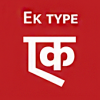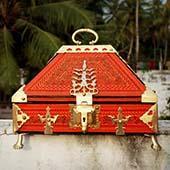
- Introduction
- Tools and Raw materials
- Making Process
- Casting Brass Motifs
- Kodayani or Kudayani: Making Nails
- Painting
- Products
- Contact Details
The aroma of rose wood and jack wood, the rhythmical beat on wood and metal, an old radio was playing some Malayalam song; the whole symphony was absolutely welcoming. The artisans were busy in their work. The whole atmosphere was absolutely homely and the interference of the mother of artisan also can be seen visiting workshop with some tea or sometimes with water. At one glance it is enormously a home not a workshop with a group of simple and very cooperative artisans.
Nettur Petti is a handcrafted signature wooden box, once which was a symbol of royal life and prosperity. It evidently proclaims the attitude of Indians towards life. India must be one among those few lands who celebrated life at its fullest joy and it is the one and only piece of land notoriously known ‘land of superstitions’ a very disgraceful adjective proudly own by Indians. When the study goes to its grassroots, it shows ancient generations were much knowledgeable without any help of technologies and equipments.
Nettur petti, a mere example for such complicated mathematical compositions; highly skilled artistry of metal casting and the intricacy of freehand painting. A true amalgamation of signature styles of handcrafting skills.
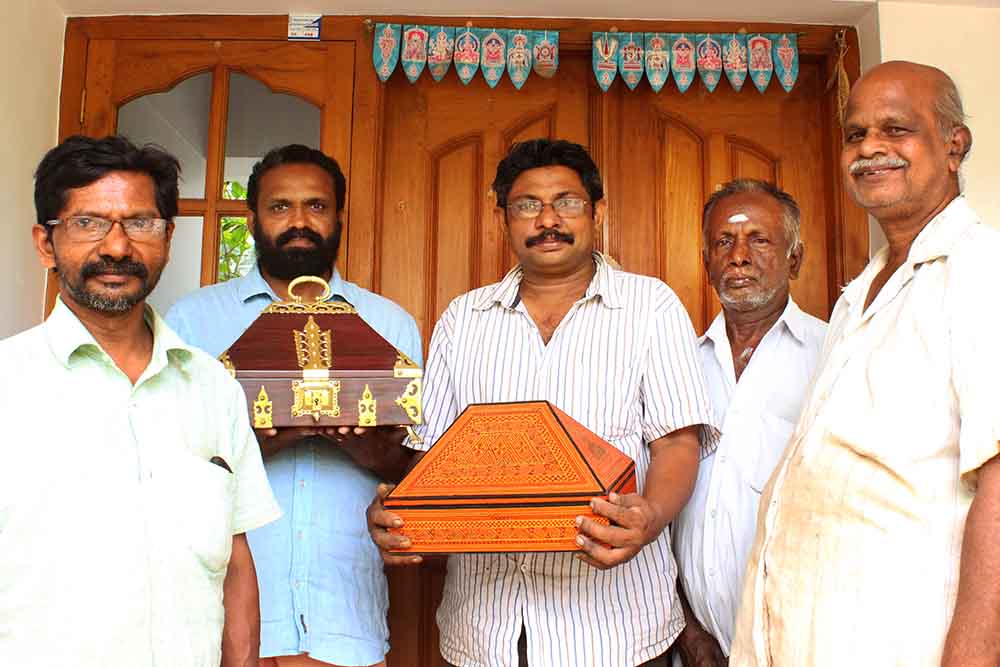
The group of artisans who create stingily beautiful Nettur Petti.
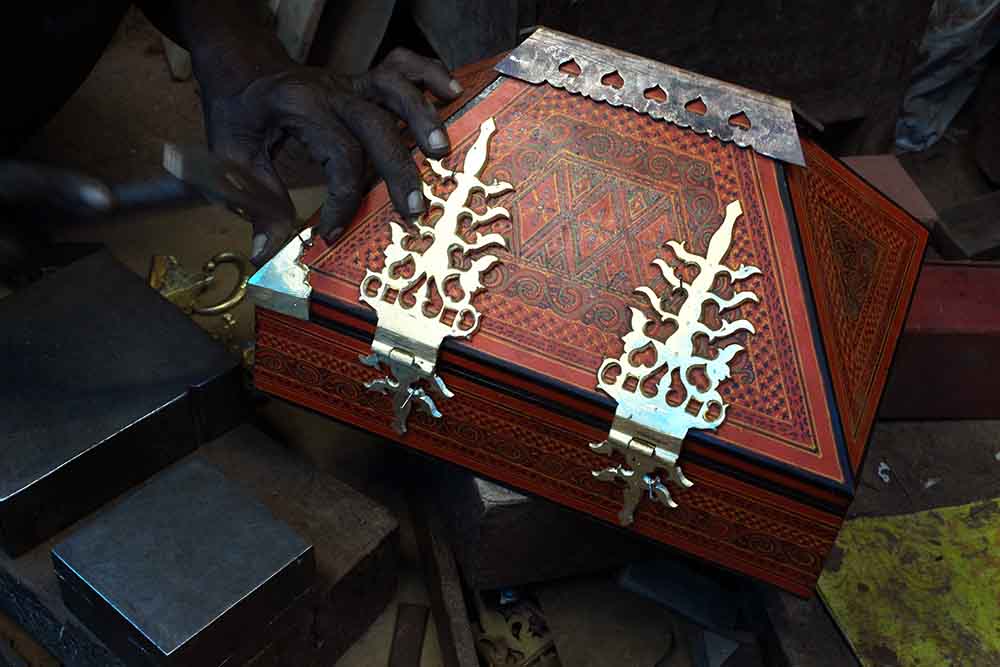
Royal extravaganza; Nettur Petti in making.
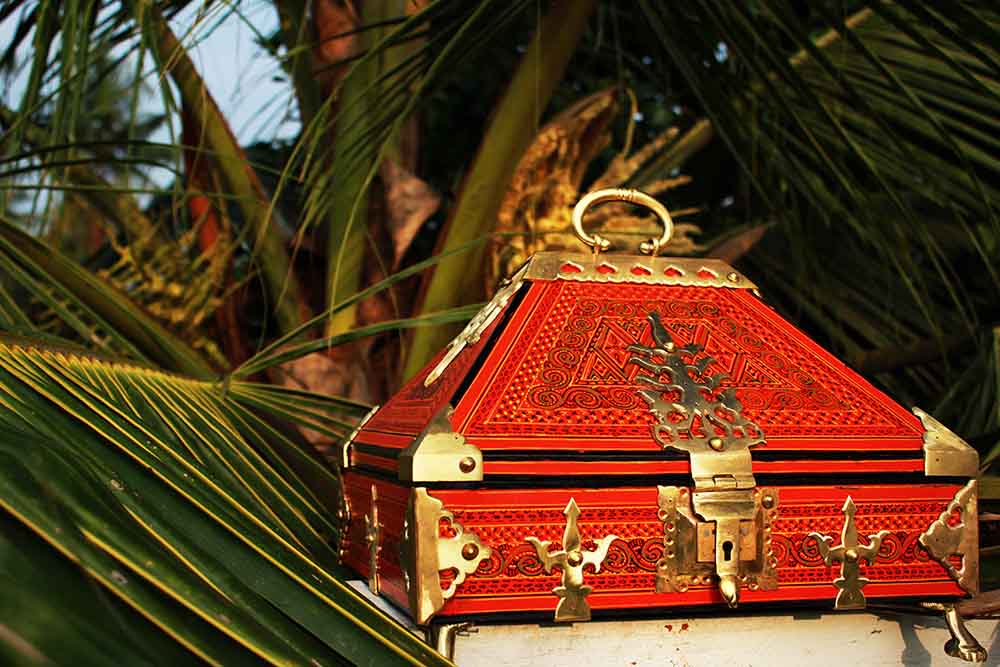
Royal Extravaganza; the signature handcrafted Nettur Petti
History
The tale must be trace back to the days of mushiga dynasty formerly known as Kolathiris now known as Chirakkal Rajahs. The lacks of proper documentations are creating obstacles in understanding the exact origin and evolution of the craft. Etymologically ‘Nettur Pettti’ depicts the origin, Nettur is a place situated near Talasseri and ‘Petti’ means box so literal meaning is box made at Nettur. Though relying on the name can become a controversy because there are few other places also called Nettur. There are few other strong evidences which prove that this particular craft is originated in Kolathiri dynasty. The design influences can be traced in the architectural detailing at temples of north Kerala; the influence of mural paintings and the design influence of folk ritualistic performance ‘theyyam’. At present there is no artisan working on or making Nettur petti in north Kerala and it is surviving in few parts of southern Kerala.
How did this craft travelled to south Kerala, can be traced back from the 14th century historical evidence. The origins lay in the inceptive 14th century adoption from the Kolathiri dynasty, when a celebrated ancestor of the Travancore family king Sangamadheera installed two princesses as his successors. At the time Travancore was known as Kupaka kingdom and was not considered as strictly Malayali in culture. Its rulers and people had affinity towards Tamil society, and Sangamadheera himself had married a Pandya princess, also wining the proudest victories beyond the eastern frontiers of Kerala. The Kolathiri Rajah, therefore, is believed to have been loath to send two of his sisters into a near Tamil family, and it was through clever deception and artful intrigue that Sangamadheera orchestrated their acquisition.
Perhaps as a consolation, however, it was decided to protect the adoptees in an insulated cocoon of their own, away from the Tamil influences they so abhorred. A portion of the Kupaka kingdom with its headquarters at Attingal was carved out and a miniature version of Kalahari country was skillfully designed within. Not only was Thirivirattukkavu Bhagavati consecrated here as the principle goddess, but even soldiers, retainers, artisans, craftsmen, slaves and other moral factors were brought all the way from the homeland of the princesses, instead of being recruited locally. This part of the history of Kerala is the mere example to show how the authentic Malabar box or Nettur Petti did travelled from North Kerala to South Kerala
Nettur Petti
Nettur Petti is a wooden box made with some particular mathematical compositions followed by the rules of ‘Tachusastram’ an ancient architecture science followed in Kerala. Nettu Petti is also knows as Malabar box or Amaadapetti in different parts of Kerala. Construction and shape of the box is compared to a traditional Kerala house and the measurements are also followed the same principles.
Raw Materials:
Wood
Wood is the main component of Nettur petti, woods mainly used are Rosewood, Aanjili, Jackwood and Mahogany which are sourced locally.
Brass
Raw metal and brass sheets are the next major component used in the making of Nettur petti which is usually sourced from Mumbai. If there is an urgent requirement then it is sourced locally which will be priced little high.
Tools:
Uli: Uli means chisel. There are different types of chisels in various sizes are used during the process of making wooden boxes as well as metal casting and its finishing.
Pozhichuli & Cheevuli (Plainer): There are the two tools used for making the surface even and smooth.
Gushimattom: It is handmade wooden tool which is used for marking the measurements on the planks.
Chuttika: Chuttika means hammers, there are different types wooden and metal hammers are used in the making of Nettur Petti.
Measuring tool: There are different types of metallic scales used.
Other than these different types of filers, wooden saw, metal cutting blade, nails, scissors are also used.
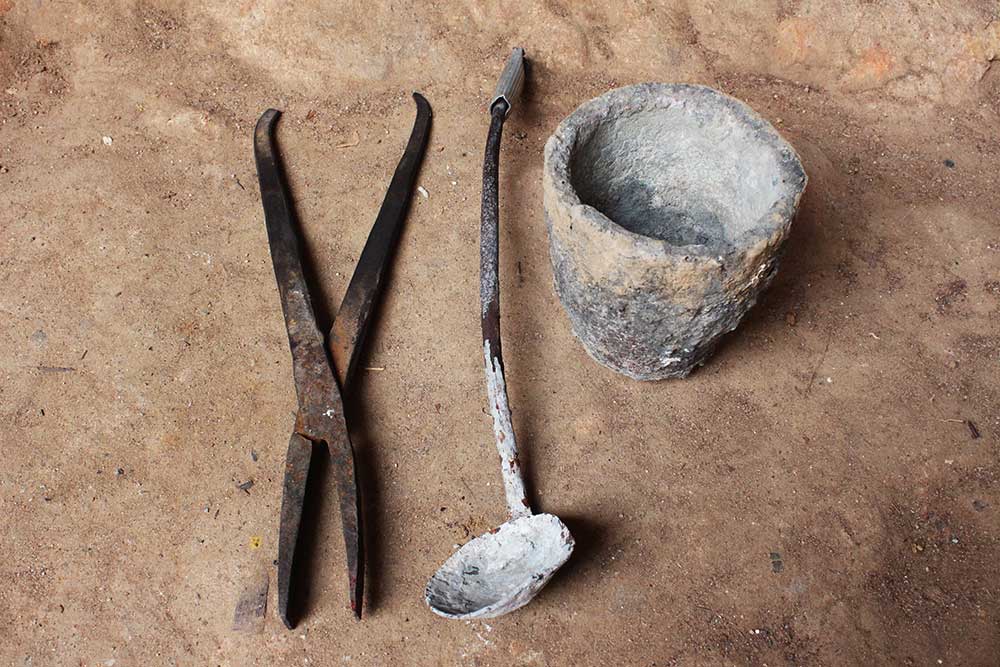
Tools used for metal casting
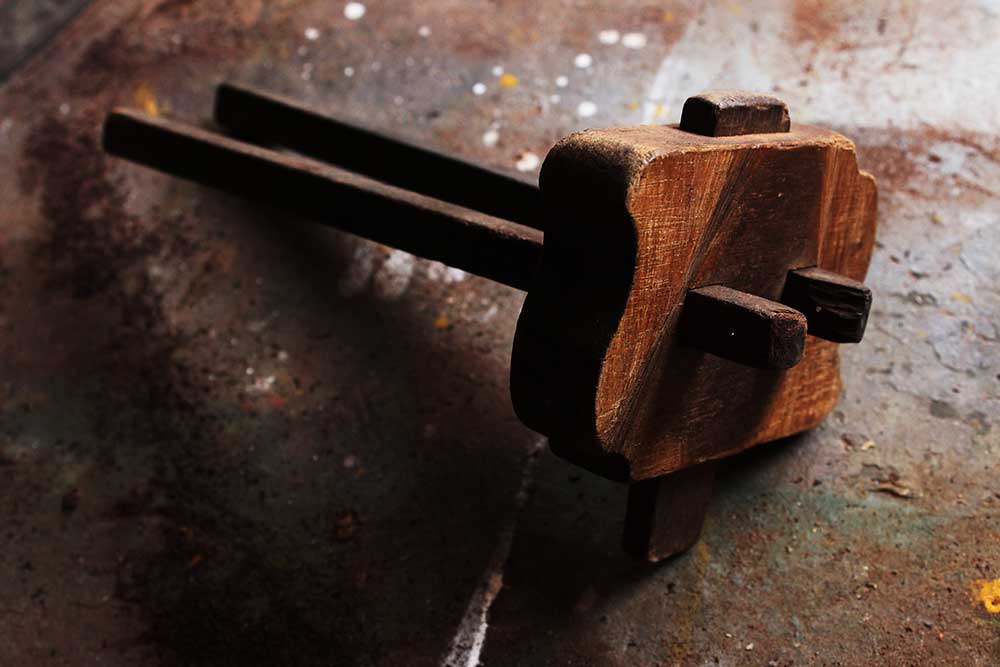
Gushimattom; a handmade tool used for marking lines.
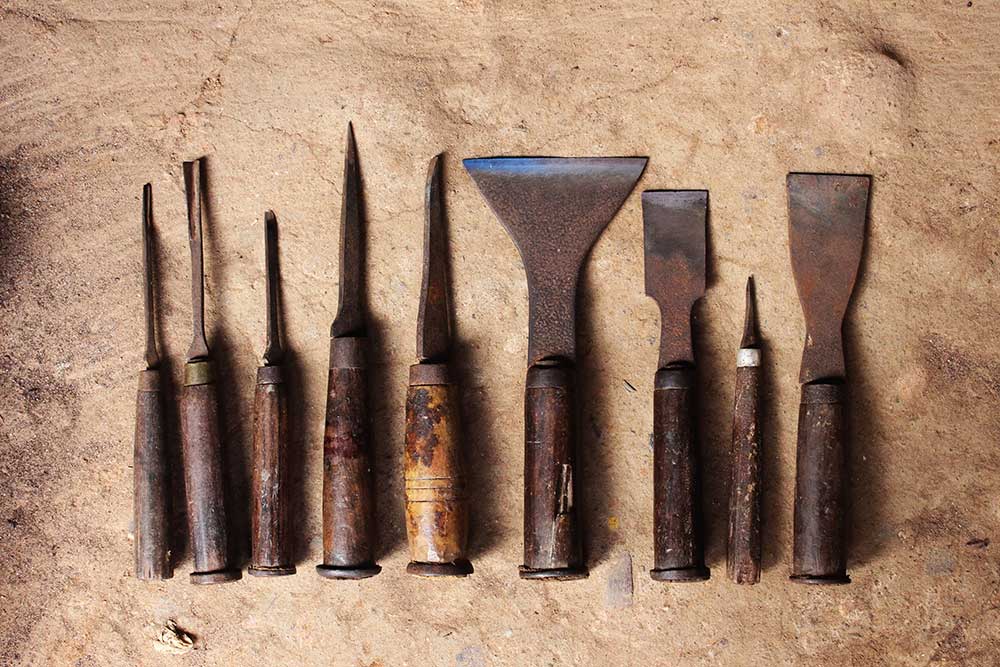
Different types of chisels used for carpentry.
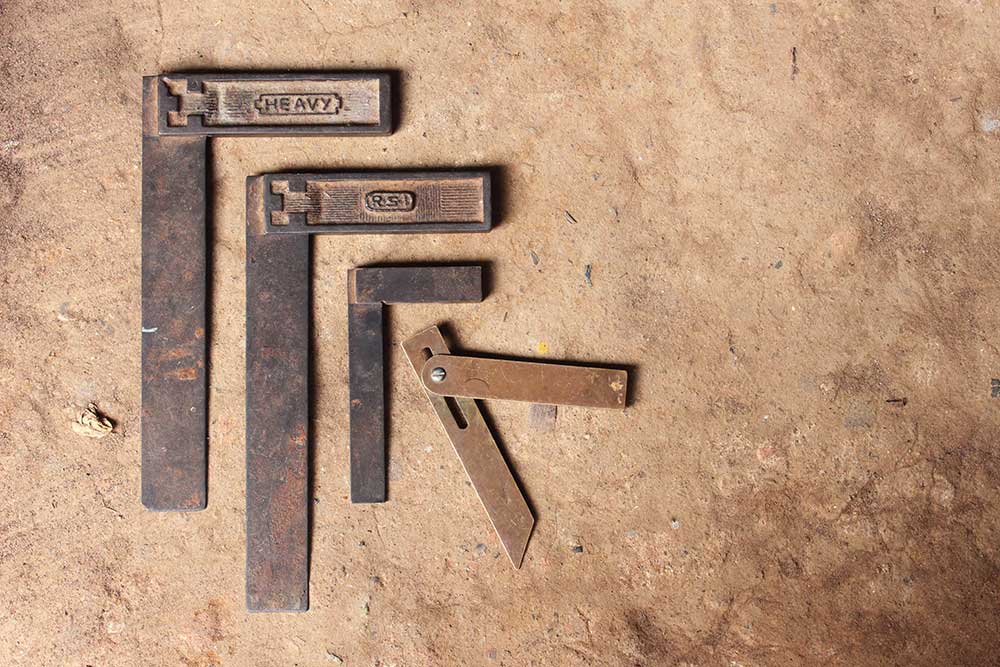
Measuring tools.
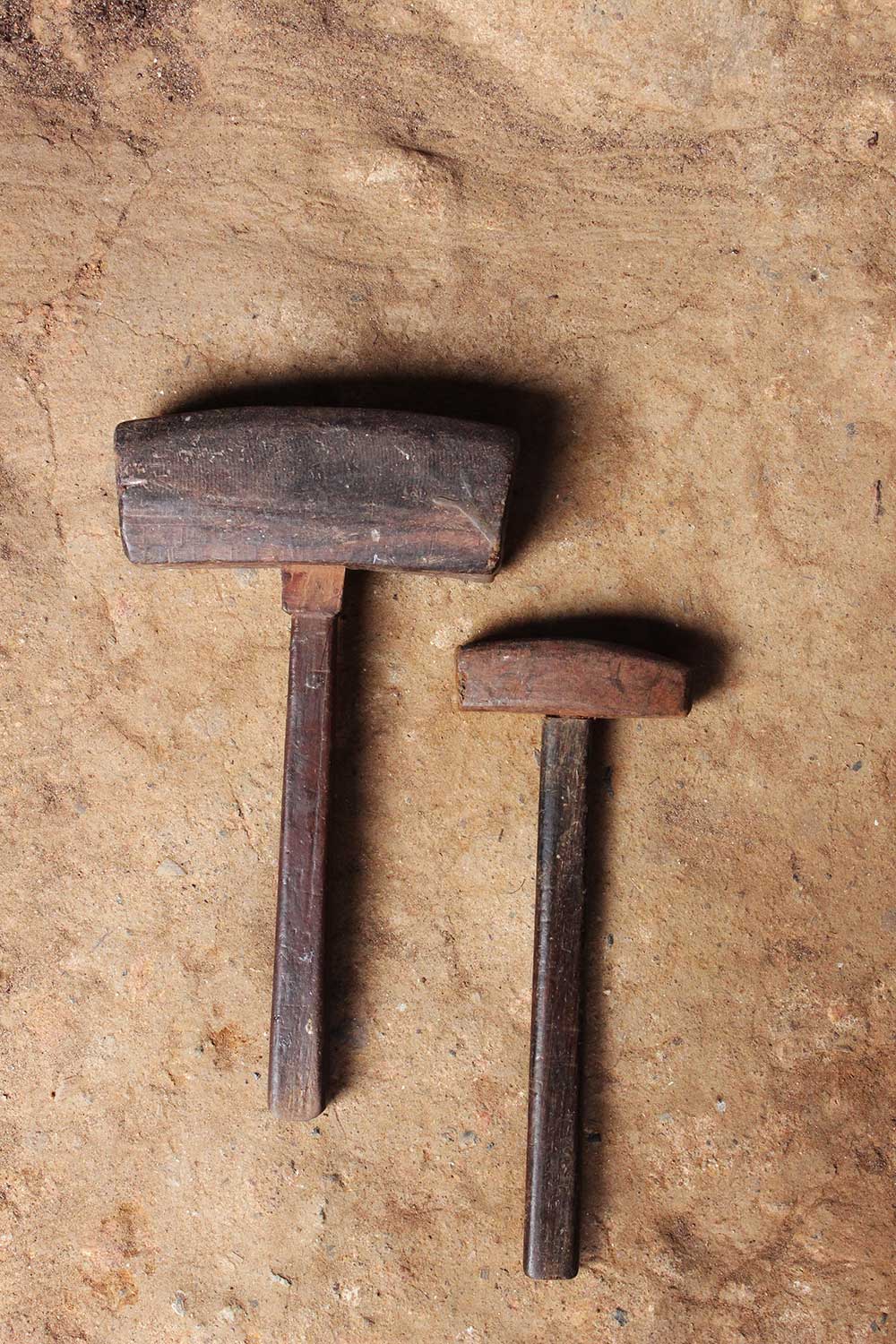
Chuttika; wooden hammers.
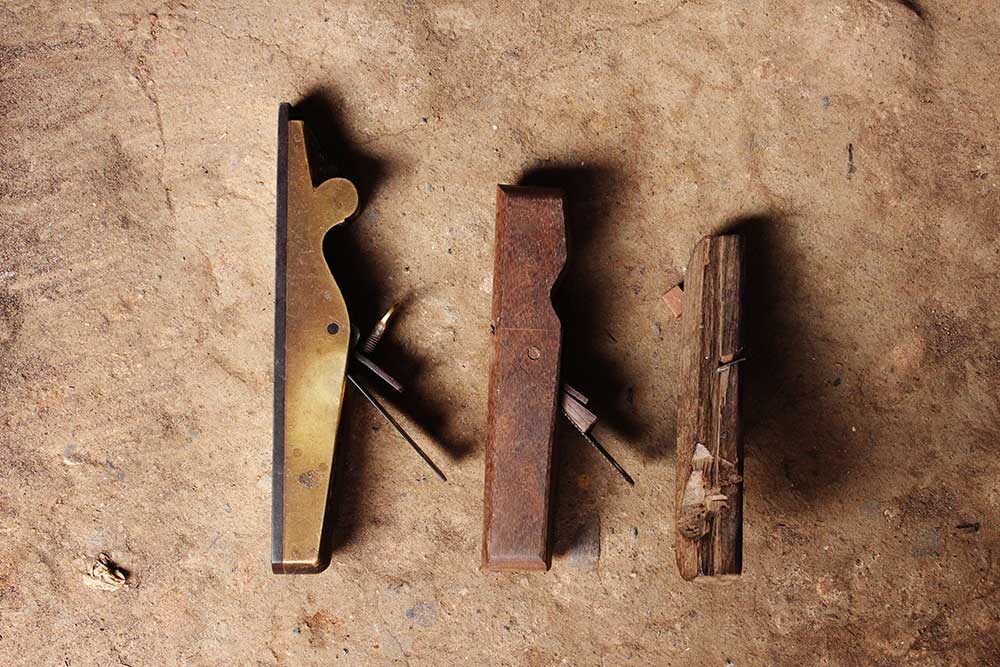
Pozhichuli and cheevuli; plainer, which are used for surface smoothening.
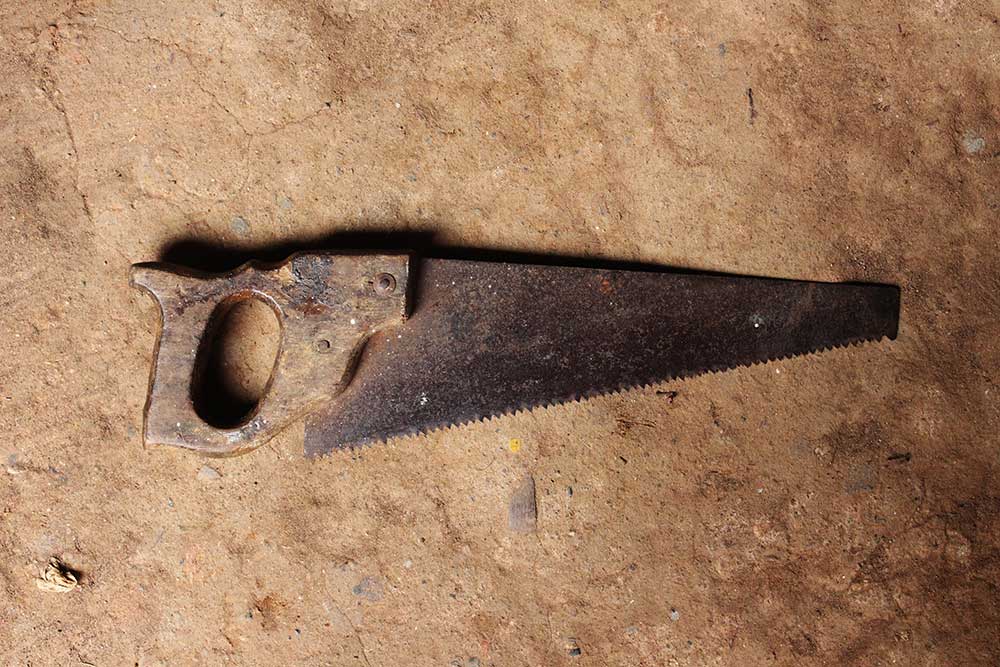
Wood saw which is used for cutting.
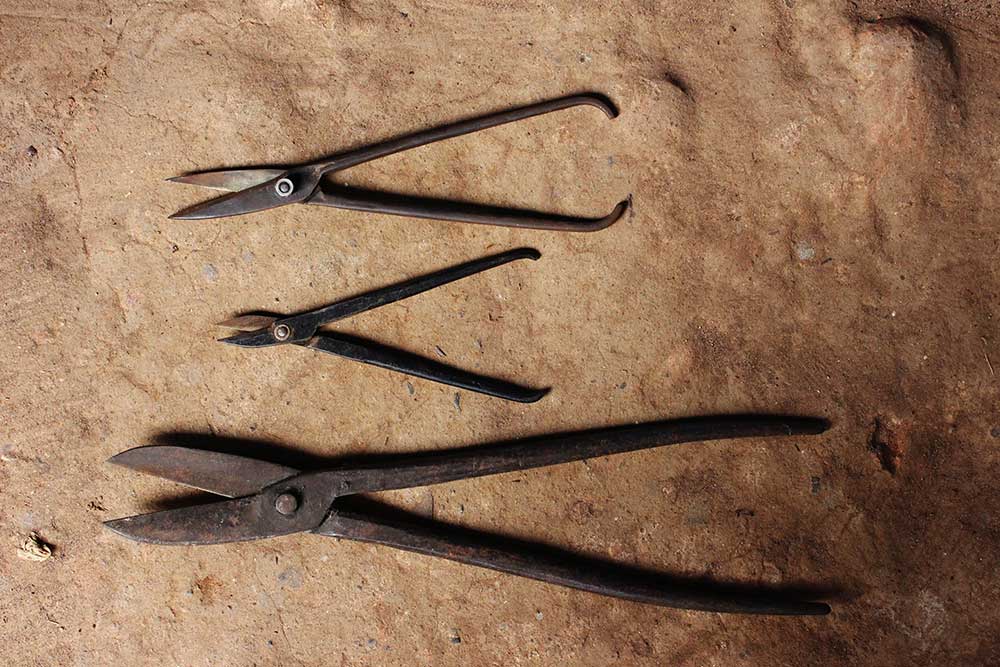
Iron scissors which are used for cutting metals.
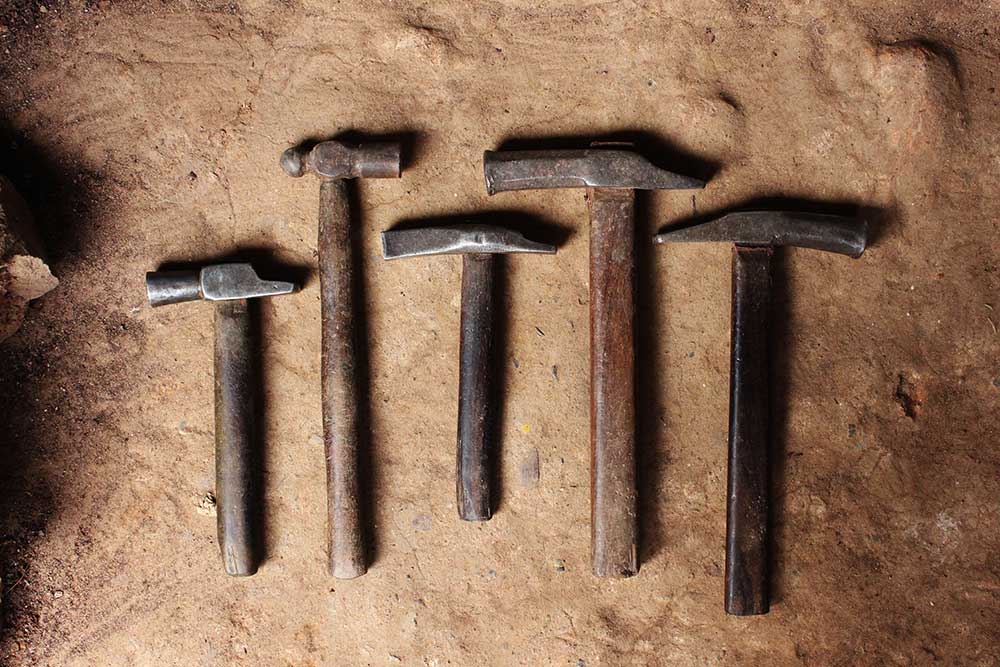
Chuttika: hammers which are used for different purposes.
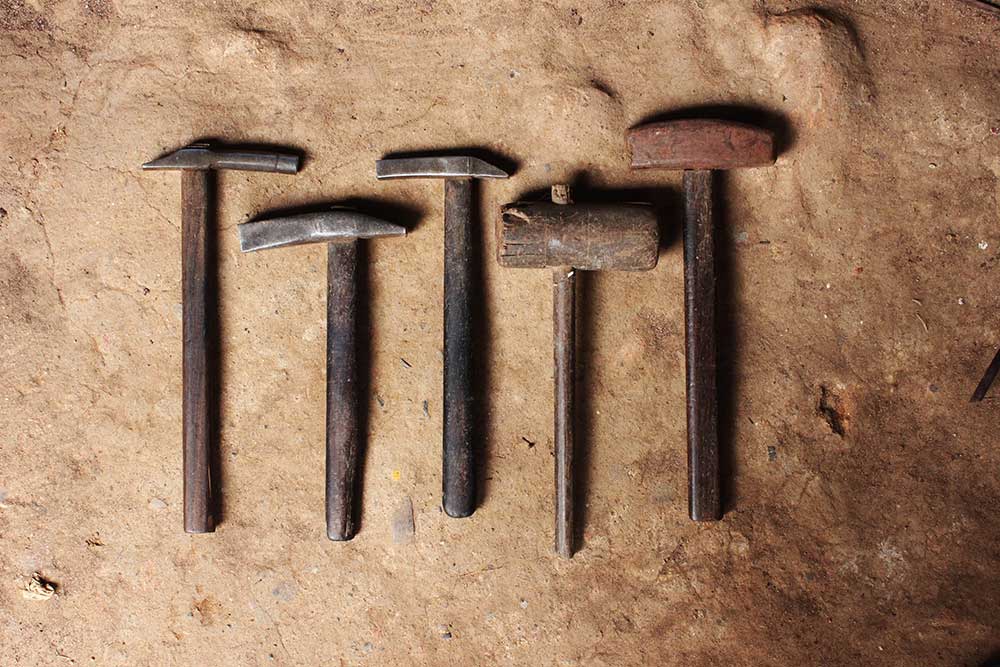
Chuttika: hammers which are used for different purposes.
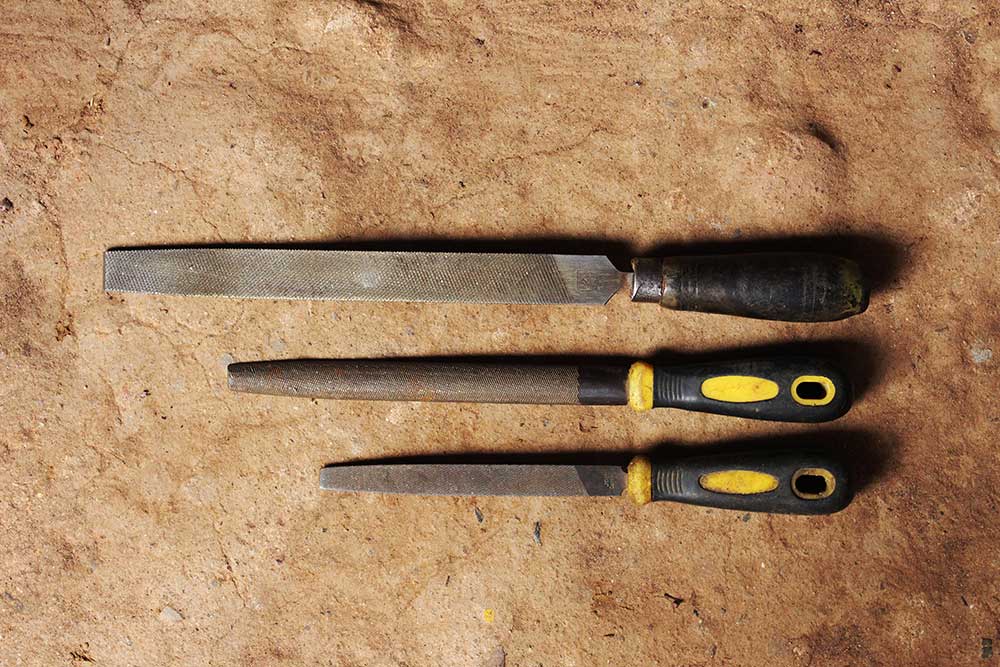
Files in different sizes.
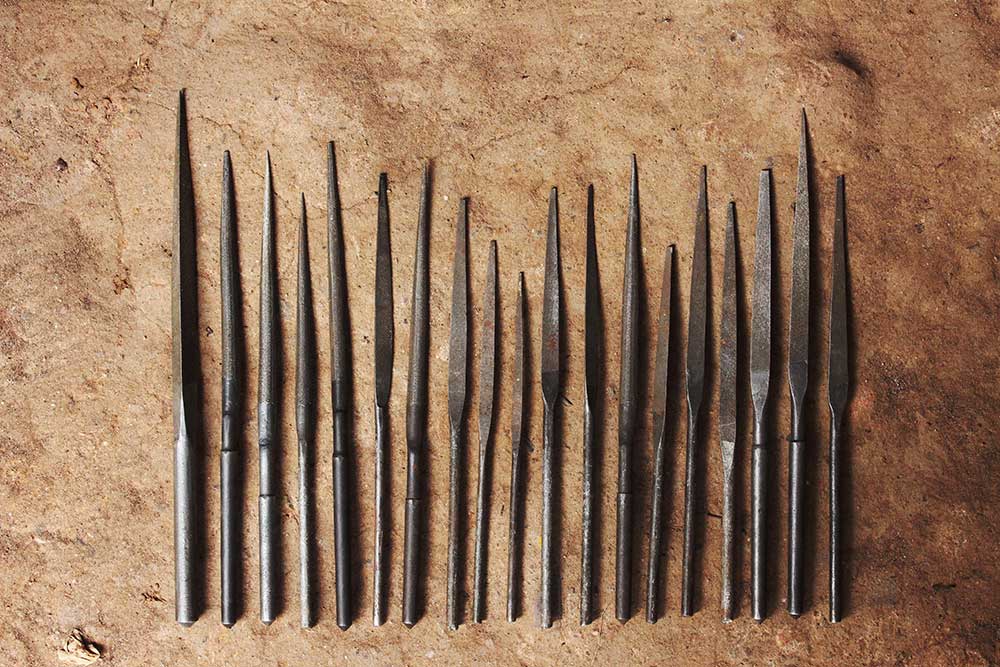
Files in different sizes.
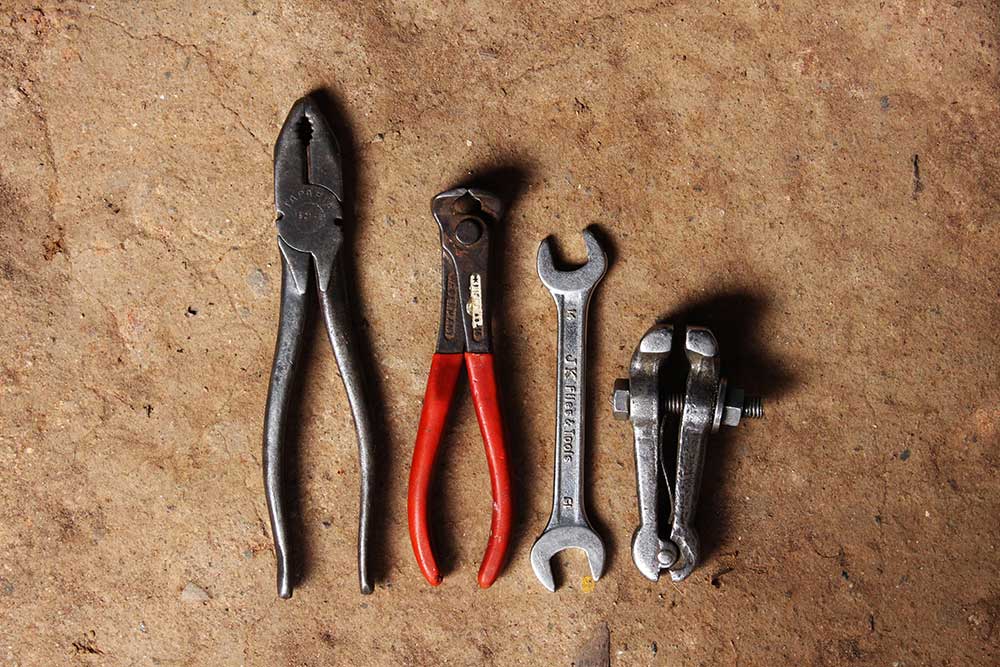
Files in different sizes.
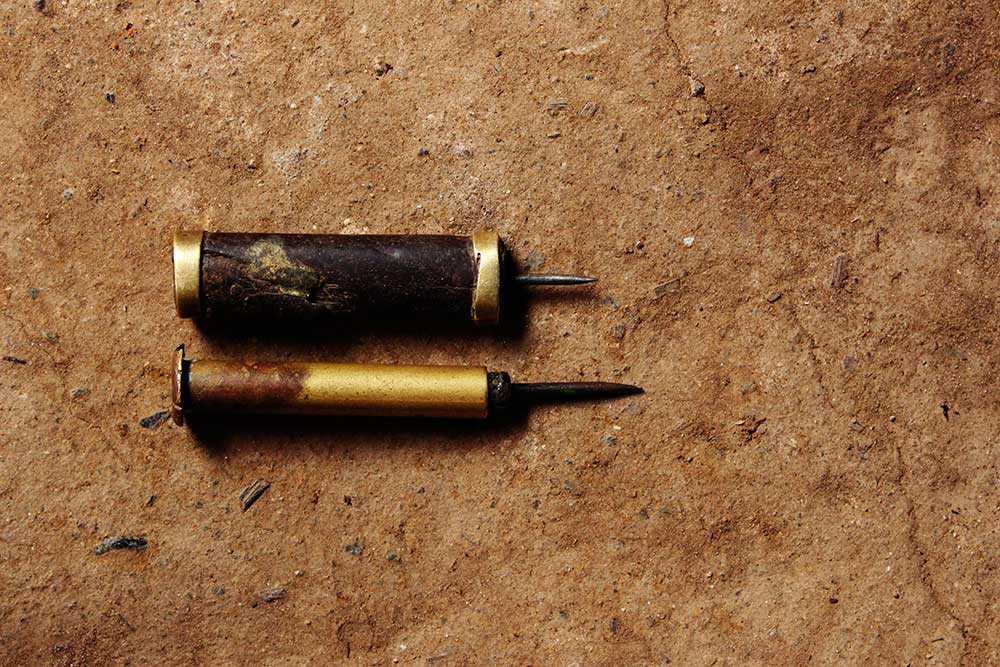
Big nails used for drilling.
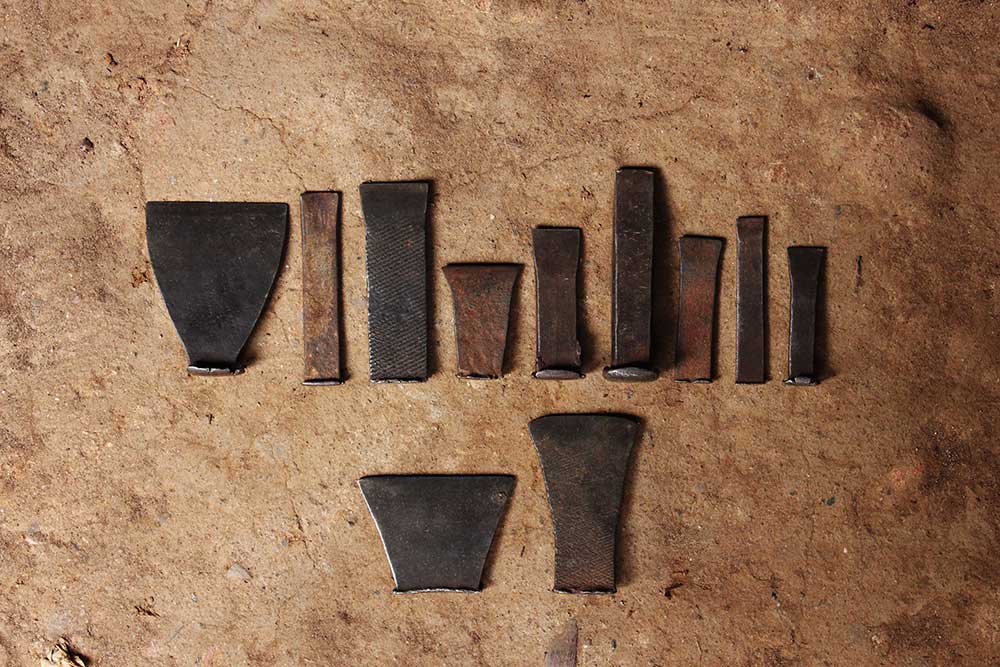
Different types of chisels
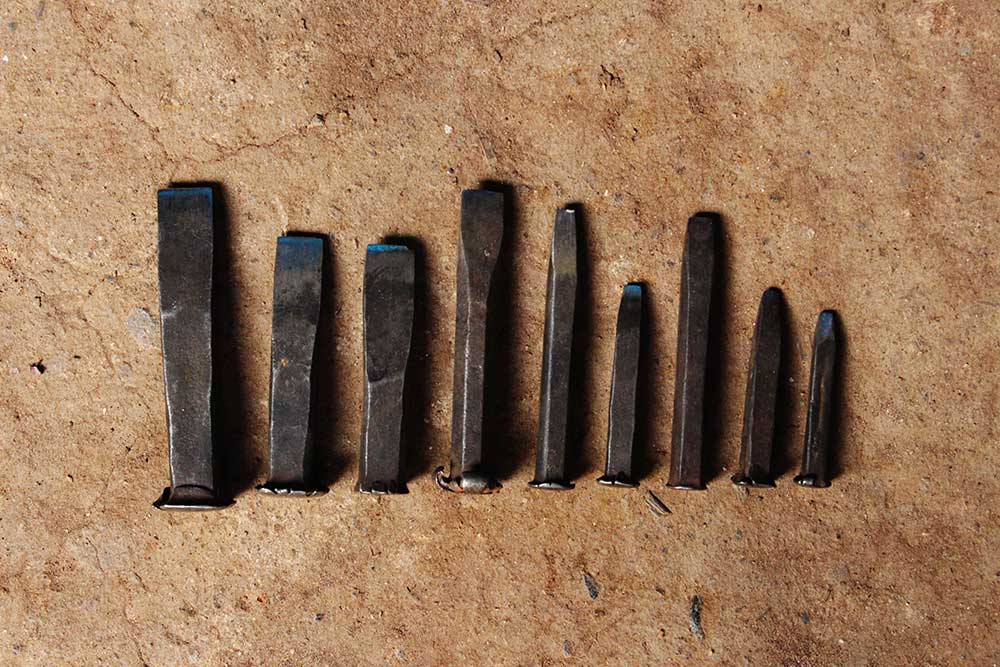
Different types of chisels
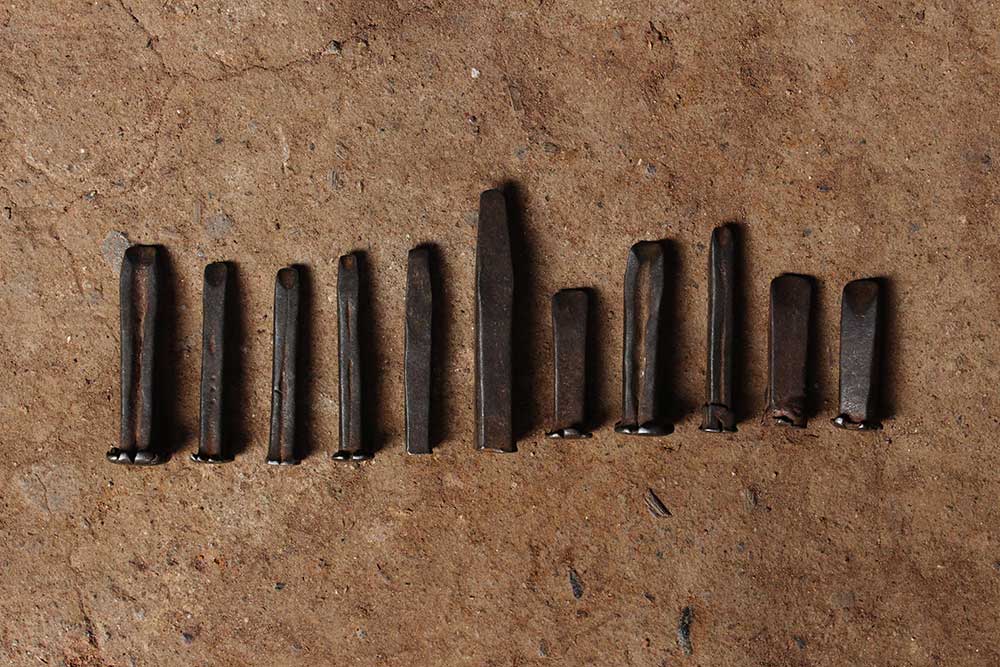
Different types of chisels
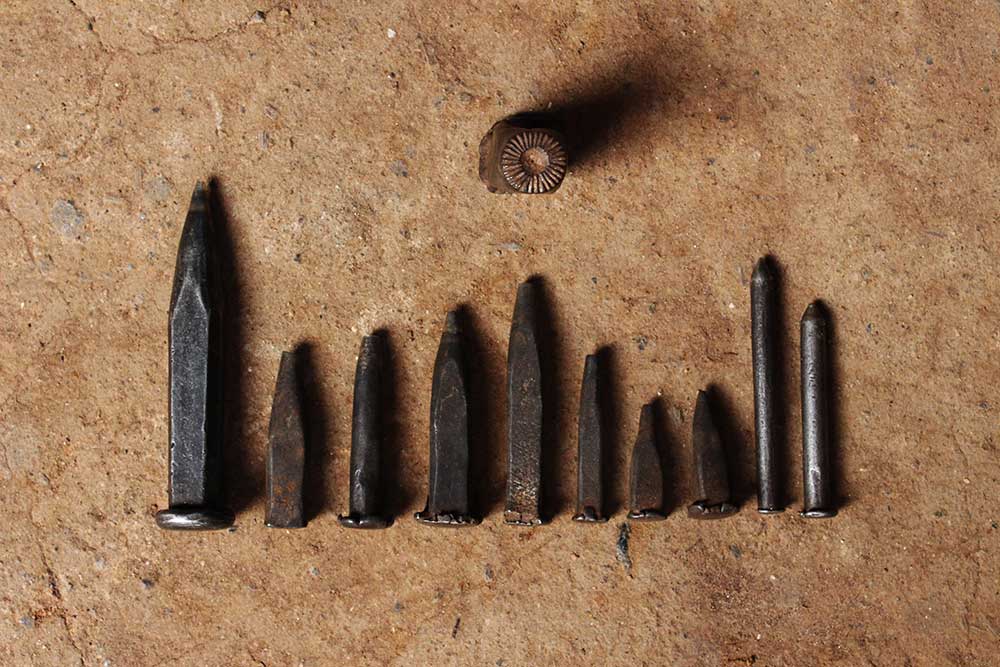
Different types of chisels
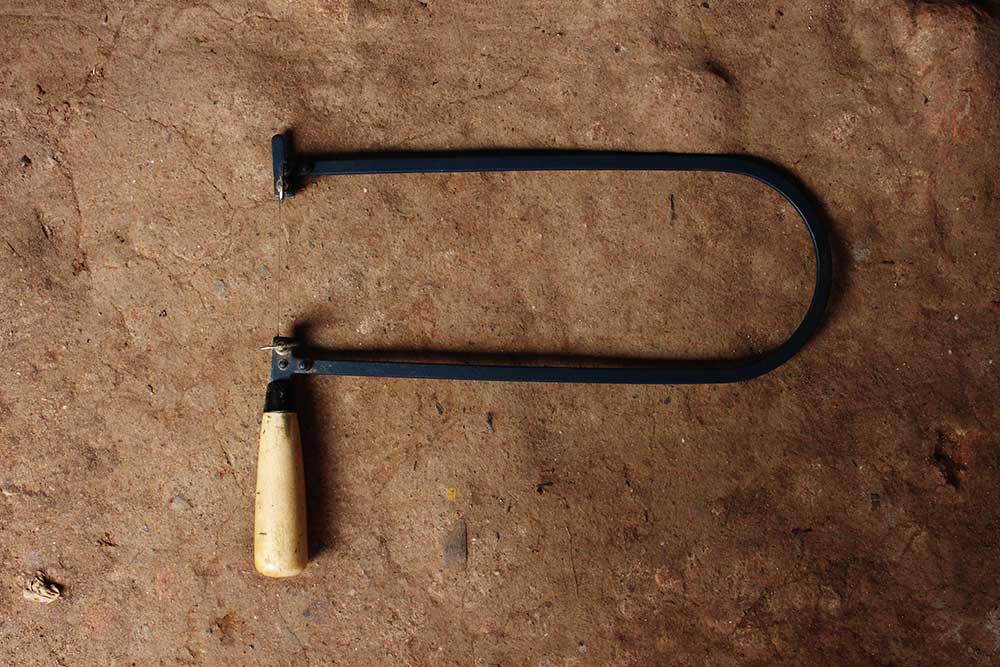
Cutting blade.
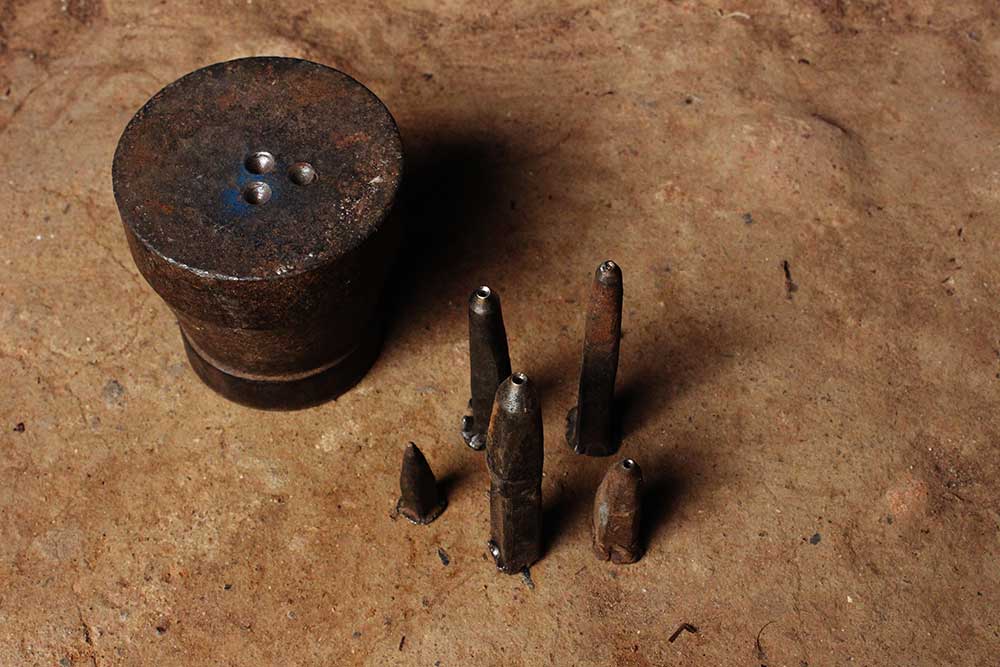
Die and chisels used for making Kudayani.
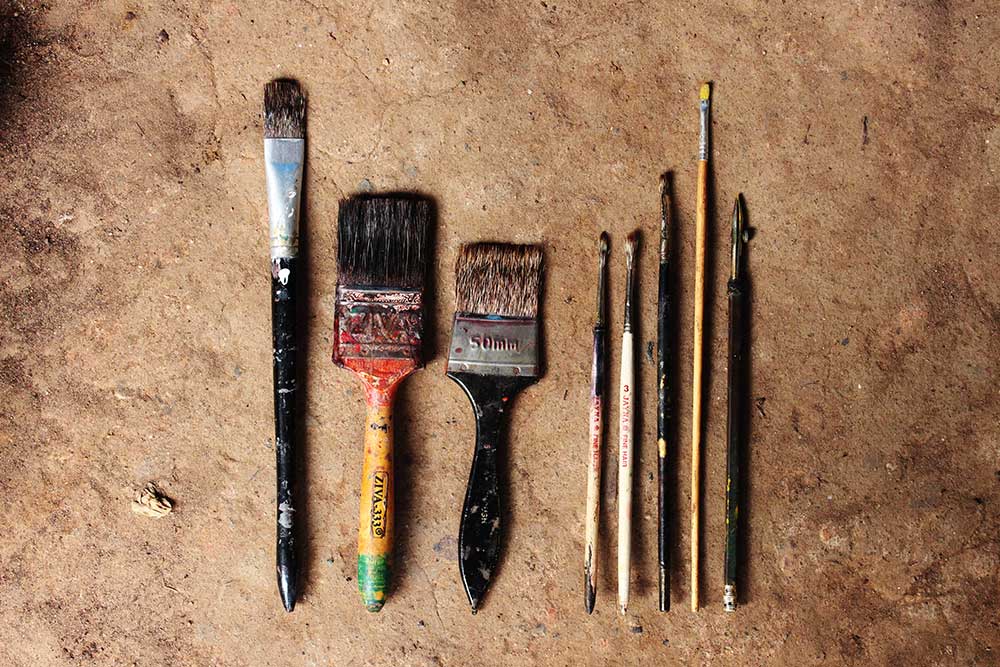
Painting brushes.
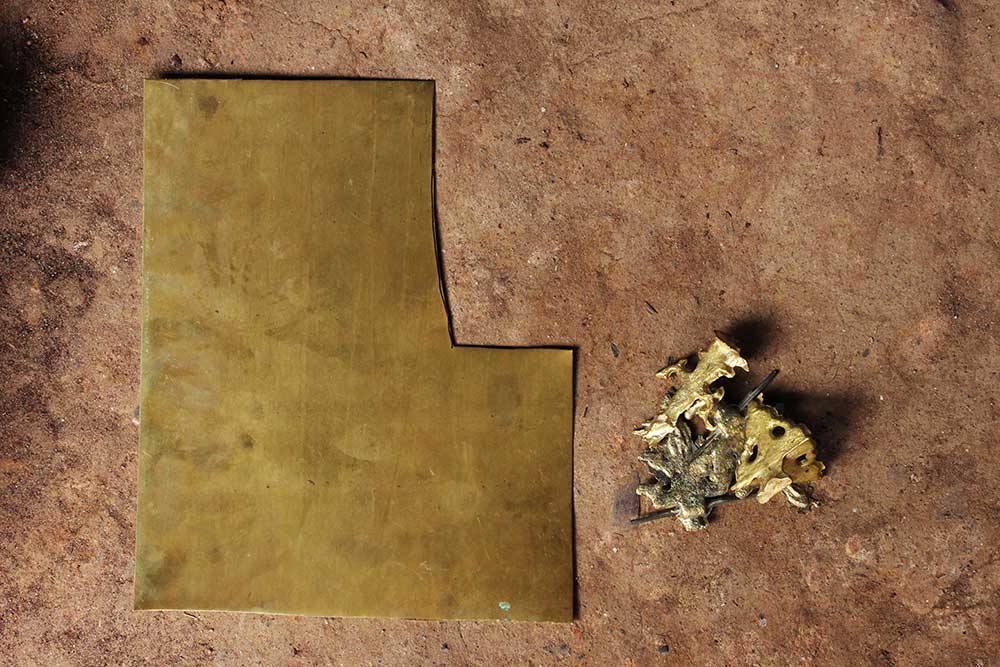
Brass sheets and raw brass.
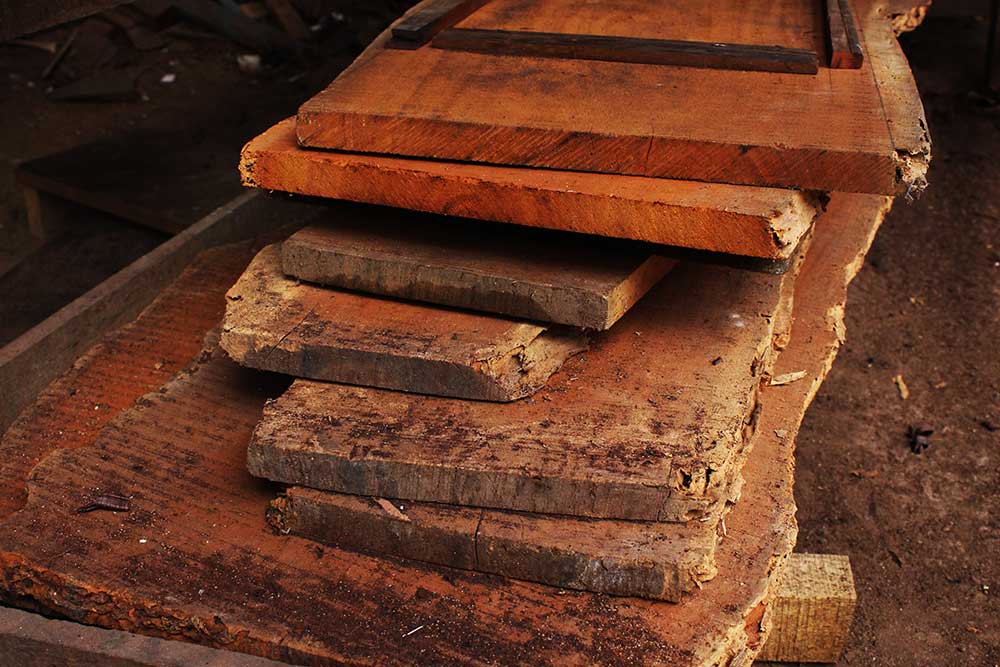
Set of planks.
The selection of wood plays an inevitable role in the making and life of Nettur Petti. Woods mainly used are rosewood, Jack wood, Jungle Jack, Mahogany, which are locally sourced. There are some criteria for selecting wood, les number of nodes which gives better quality of wood. Any bend or decay found on wood won’t be taken for making Nettur petti because that will affect the structure and finishing of the box. In hardwood like rosewood, the variety of colours, textures and grain patterns some truly interesting pattern on the final product. The appearance, rich earthy colours, durability and ease of construction makes the wood as unavoidable part of the whole crafting Nettur Petti. The type of the wood chosen determines the beauty and strength of the finished product. Once the wood is selected, it is cut into planks. The making process of Nettur Petti starts with deciding the measurement according to the ‘Tachusastra Vidhi’. The measurements are marked on the plank according to the rules and regulations of Tachusastram. The lower part of petti consist of 7 pieces where as the upper part consists of 4 pieces. According to the quantity of orders the cutting is done in both ways, manually and with the help of machine. The surfaces of the planks are even out by scraping the uneven parts with the use of cheevuli (Plainer).Once the planks are even out and cut it into individual pieces in required shapes, making of top lid and lower box is taken place. Making of top portion of the box is the complicated process because it has to be joined by four pieces of woods simultaneously. The edges of the pieces have biased finishing obtaining a fine structure. The top of the Nettur petti is constructed in a shape of the roof of traditional Kerala house architecture. The angles are made with help of the tool ‘gushimattom’ and the biased finishing the edges are done by cheevuli. Later on with the help of ‘pozhichuli’ groves are made so the top portion can accurately sit with the lower part of the box which will give an intact locking system also.
Once the top part of the box is ready, then bottom part is made by following the same rules and methods used for making top part. Bottom part is having two utility areas, in olden days Nettur petti was used as a jewelry box and that must be the reason there are utility areas given inside so the small jewellery pieces like rings and earrings can be kept inside it.
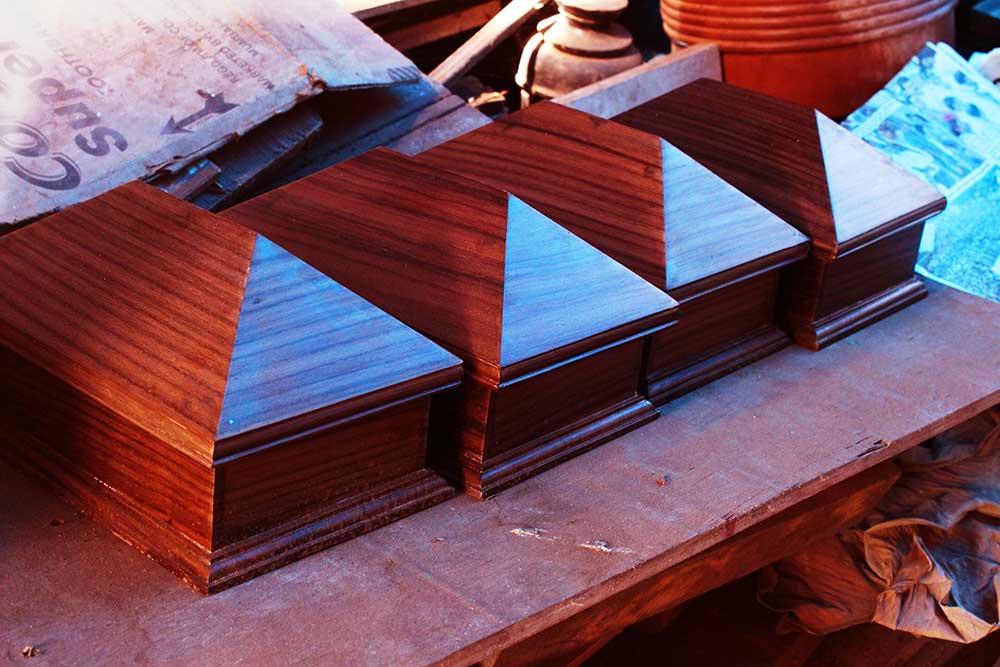
Wooden boxes before obtaining its final form.
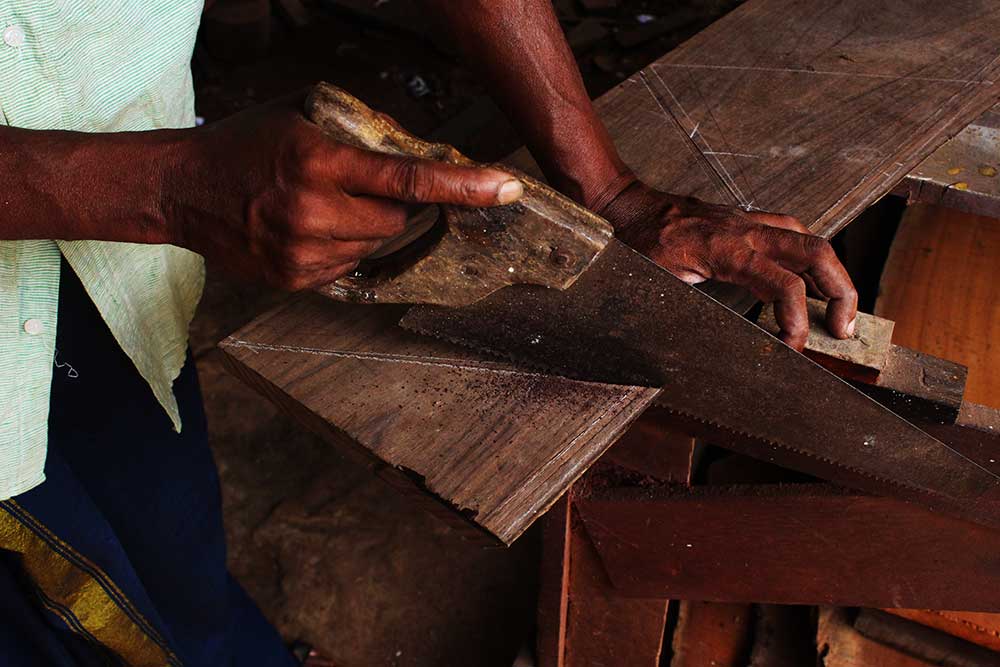
Craftsman using a wooden saw to cut the wood.
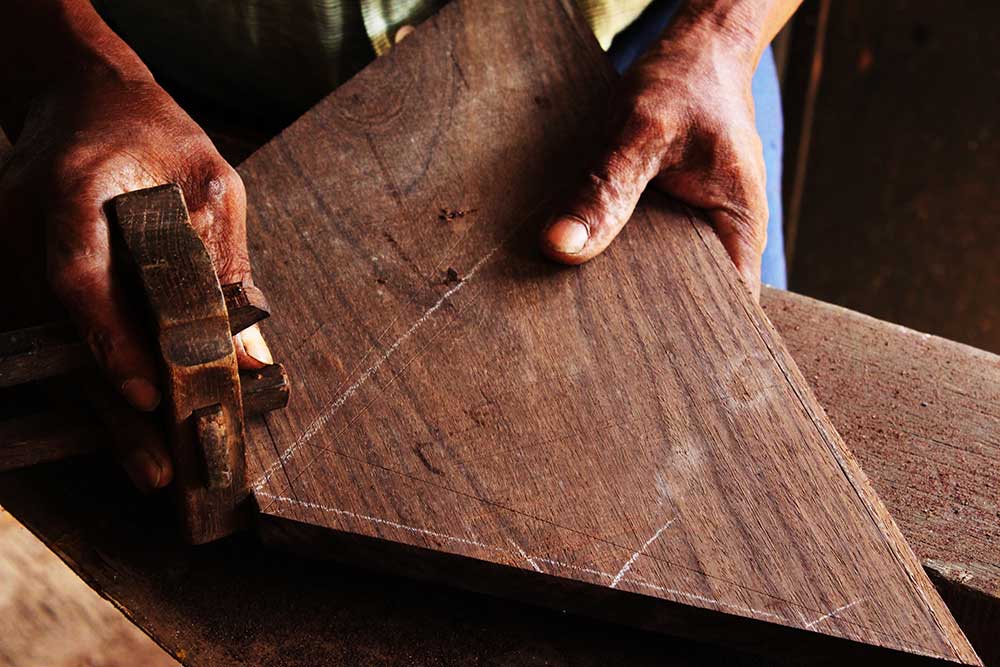
Marking the measurement by using the tool called Gushimottam
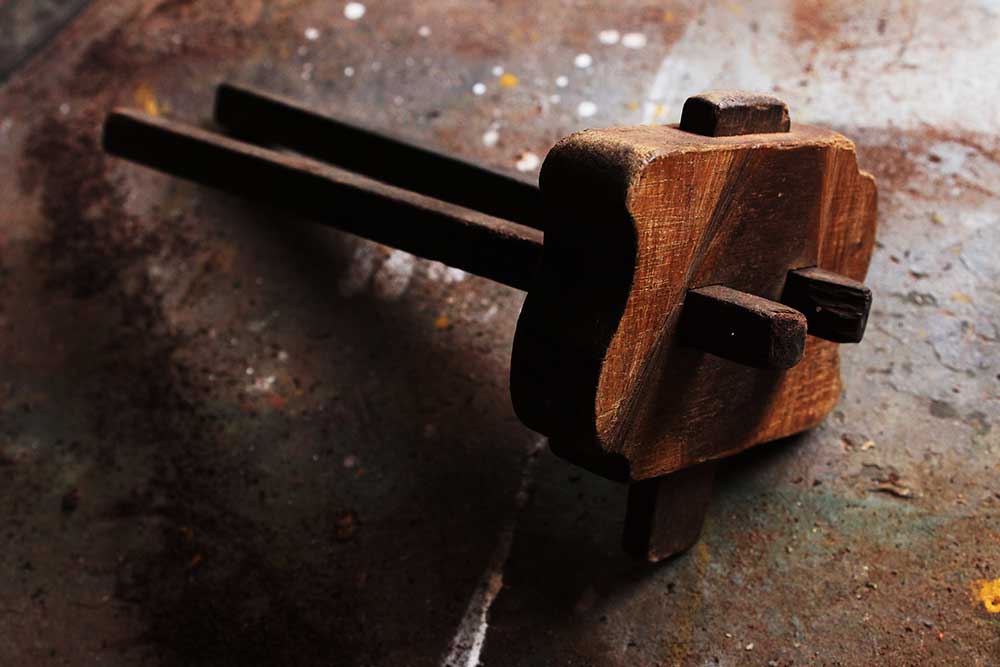
Gushimattom; a tool used for marking measurement.
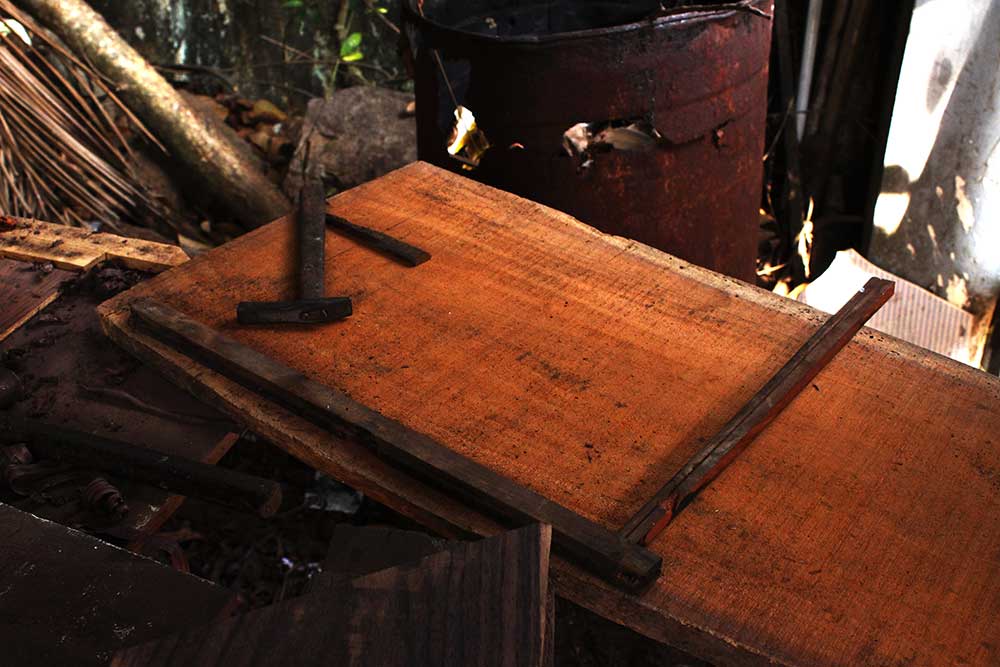
Creating a wooden frame.
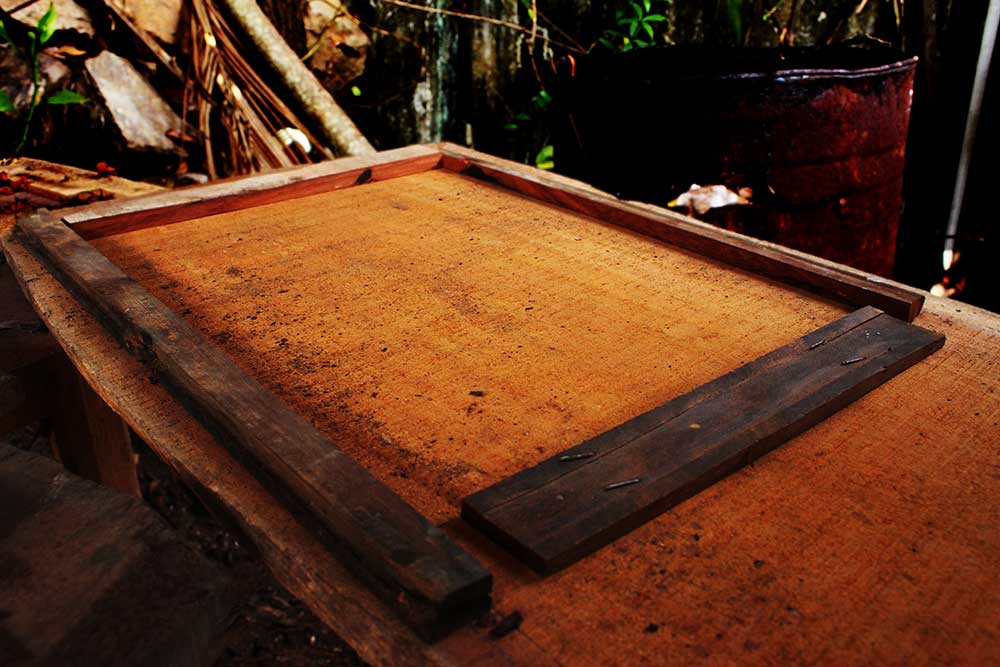
Completed form of wooden frame.
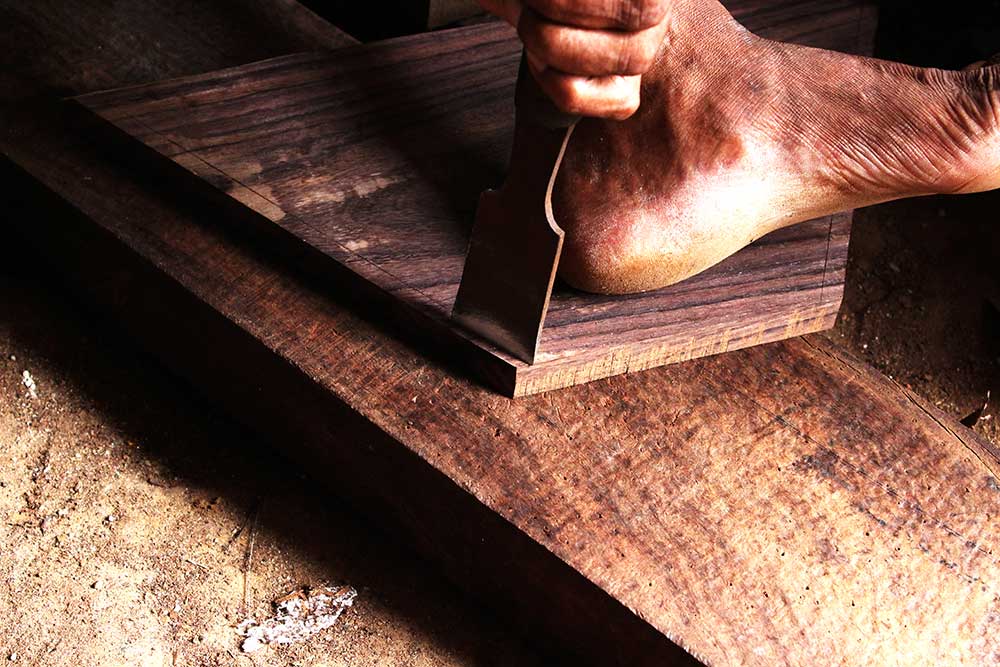
Craftsmen chiseling the edges of the plank.
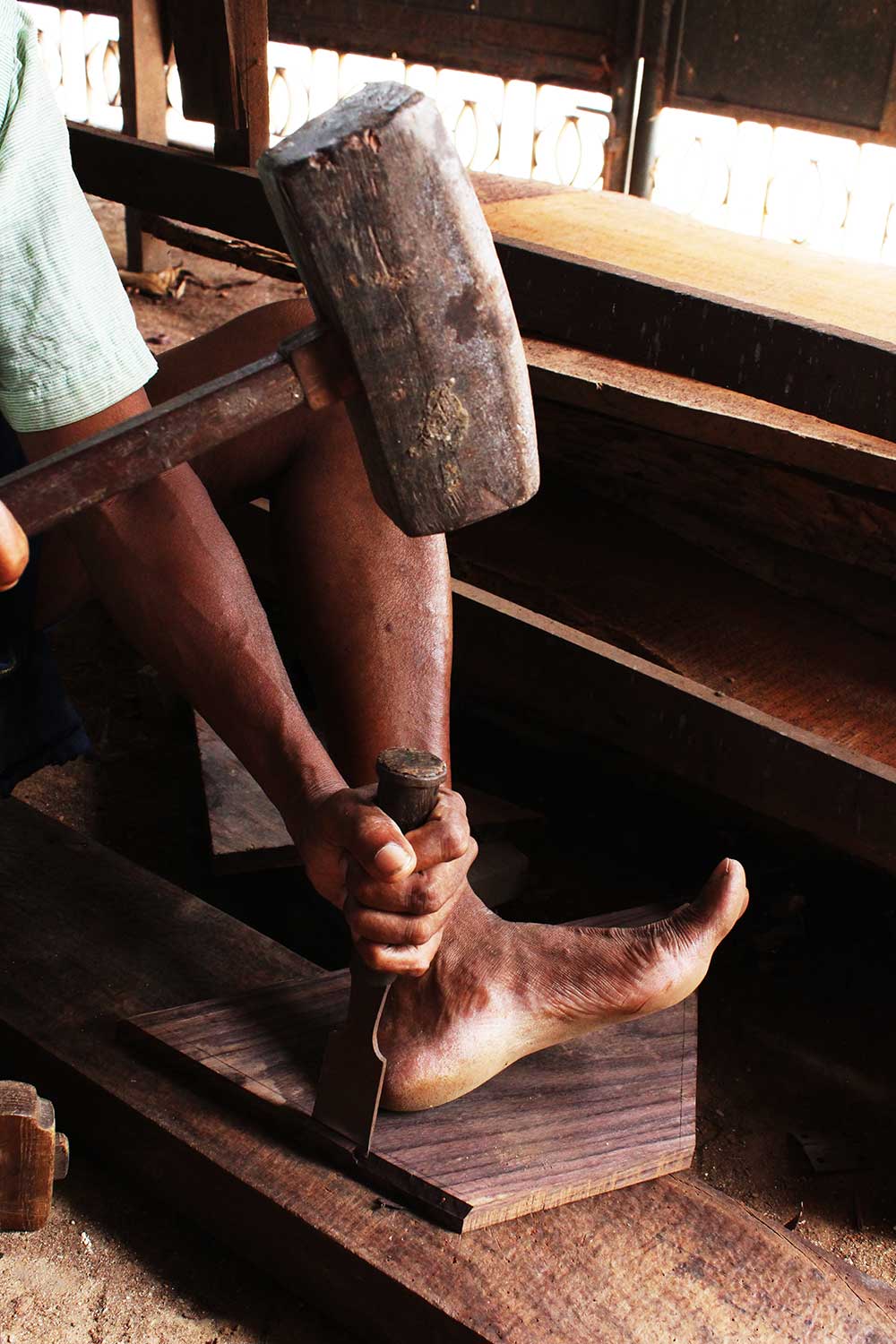
Craftsmen chiseling the edges of the plank.
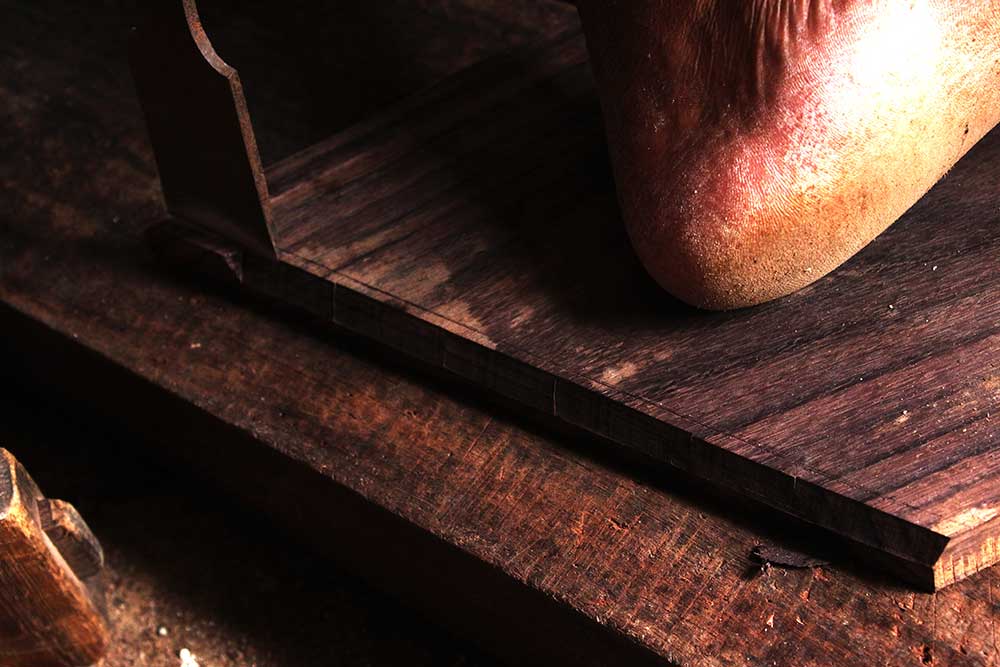
Chiseled edge of plank.
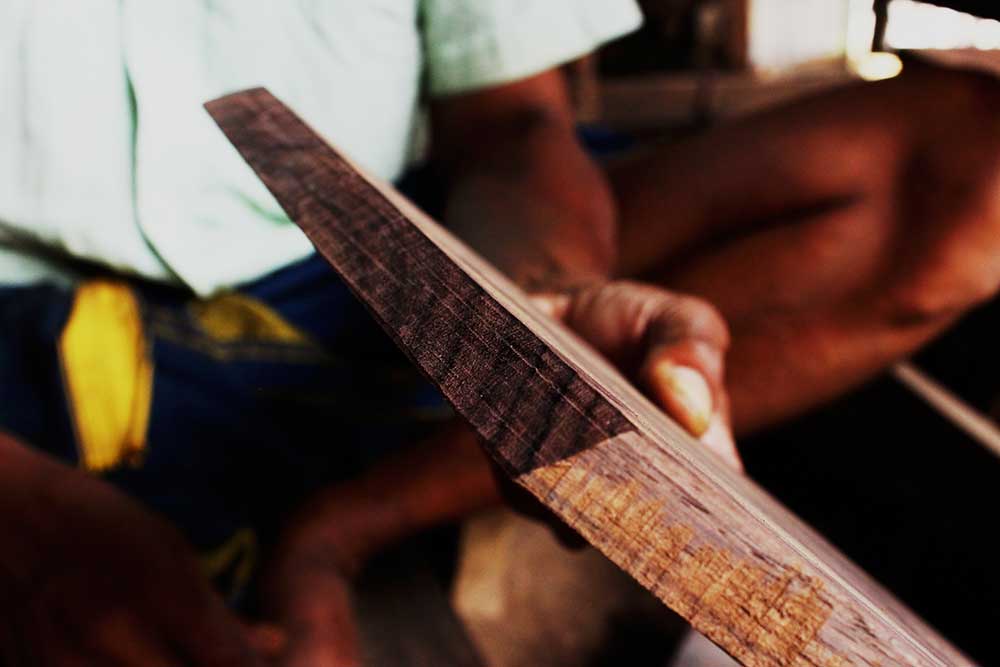
Finely chiseled edge of the plank.
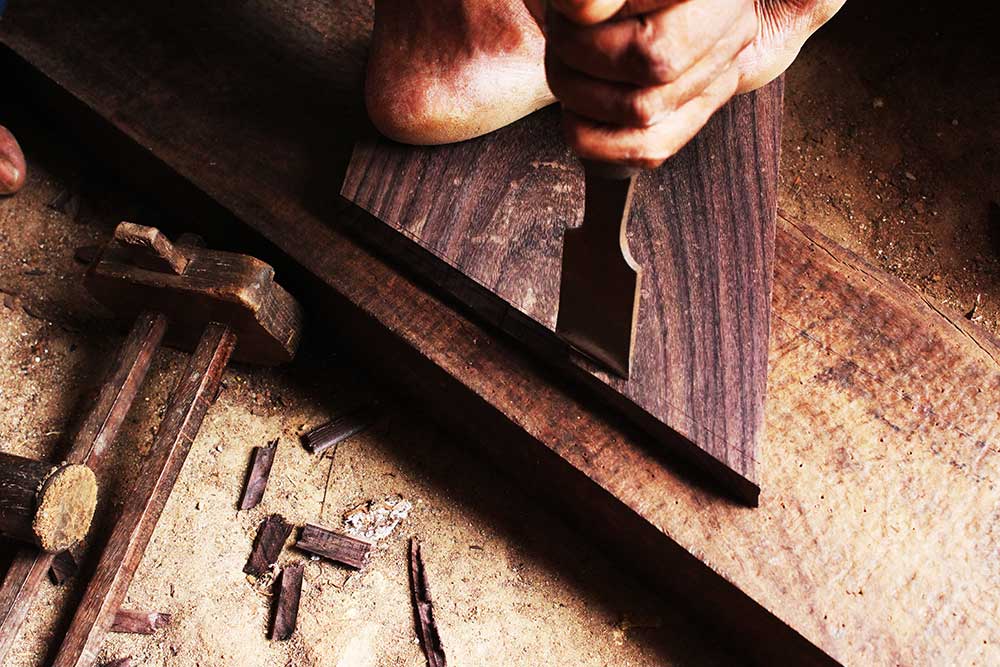
Craftsman chiseling the edges of the plank.
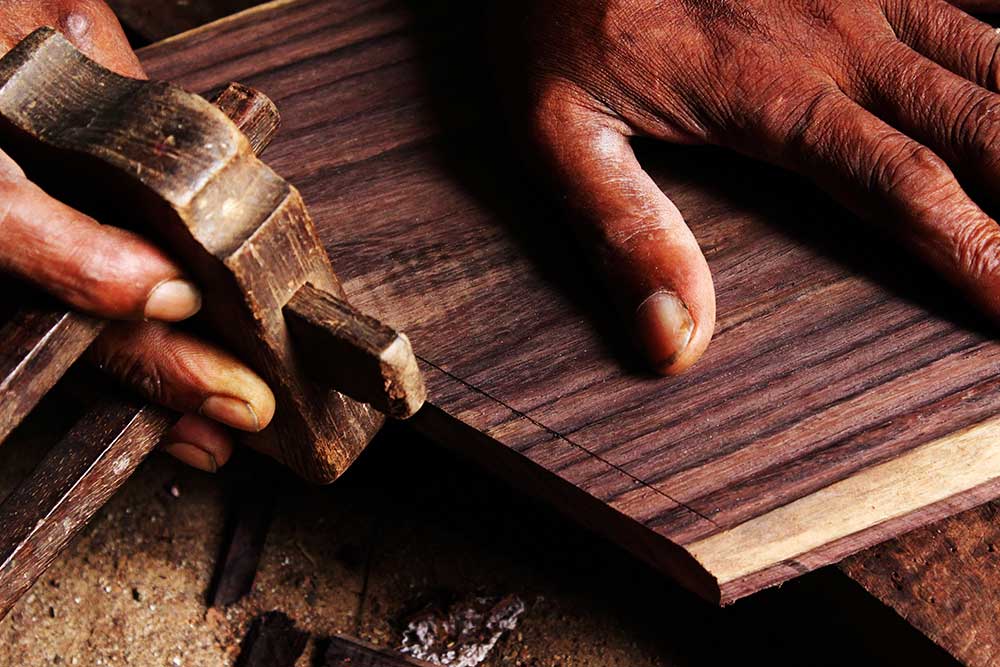
Marking the measurement by using the tool called Gushimottam
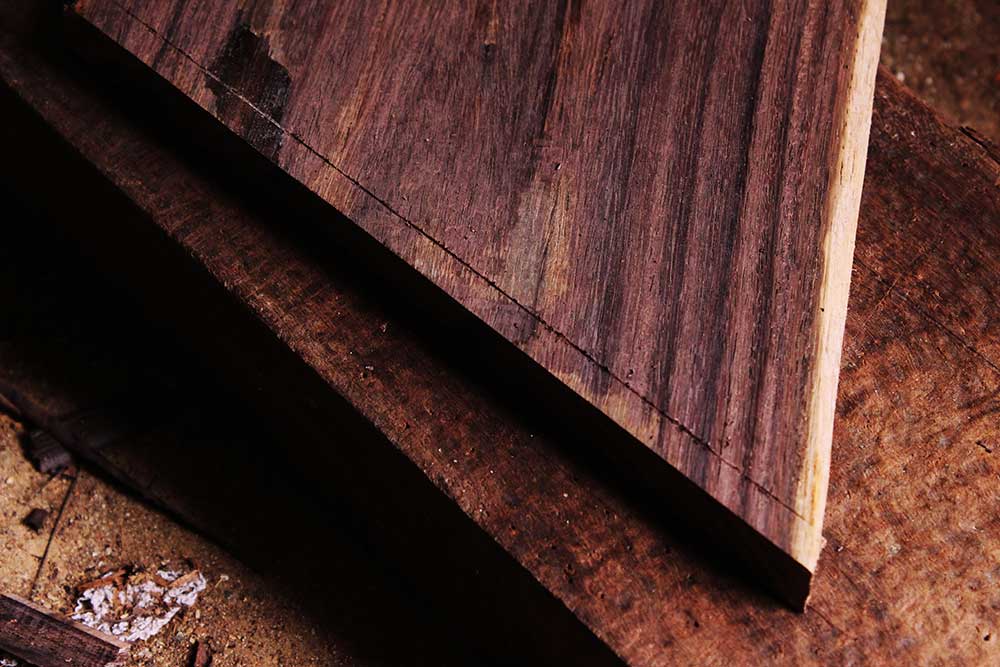
Marked edge of plank.
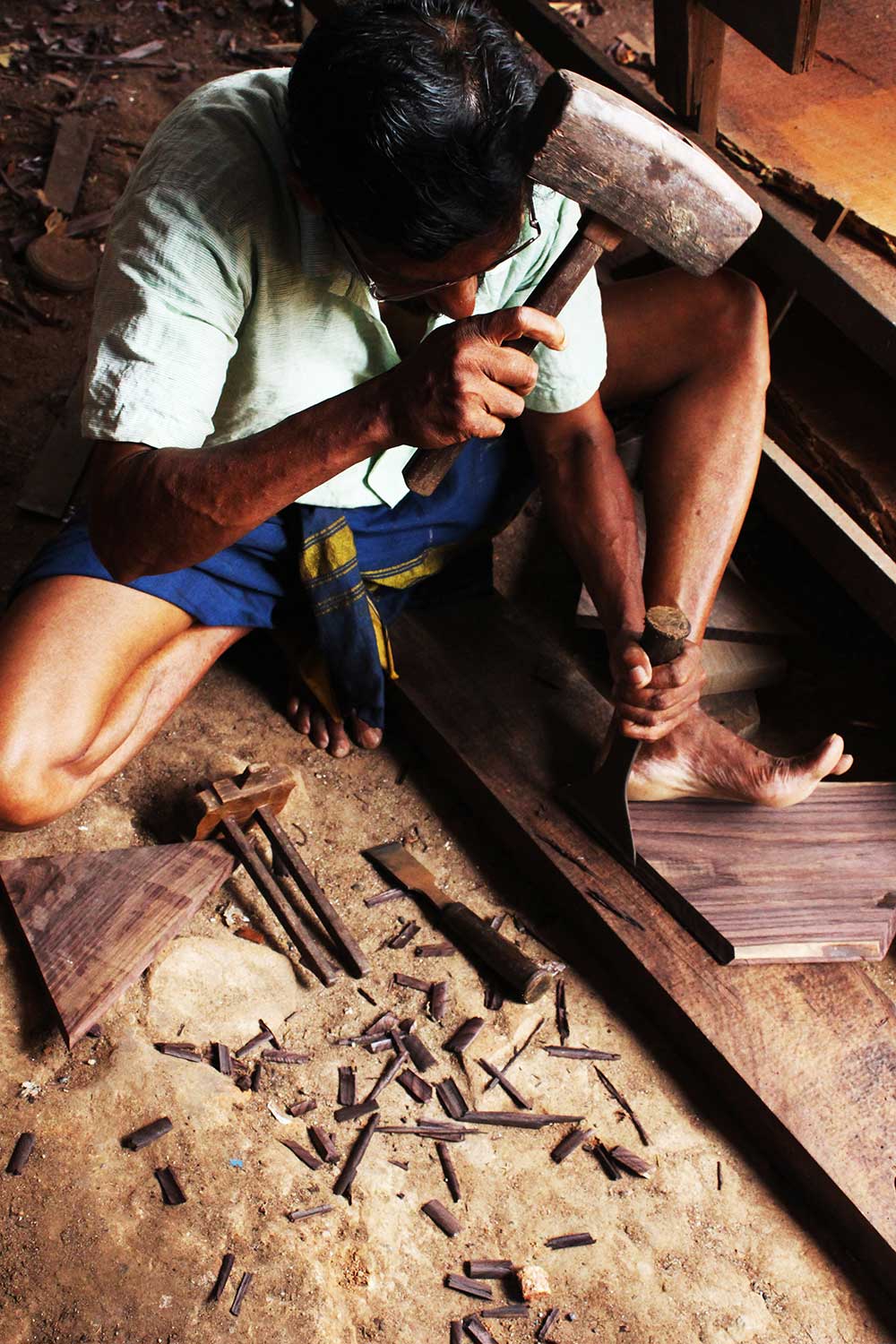
Craftsman chiseling the edges of the plank.
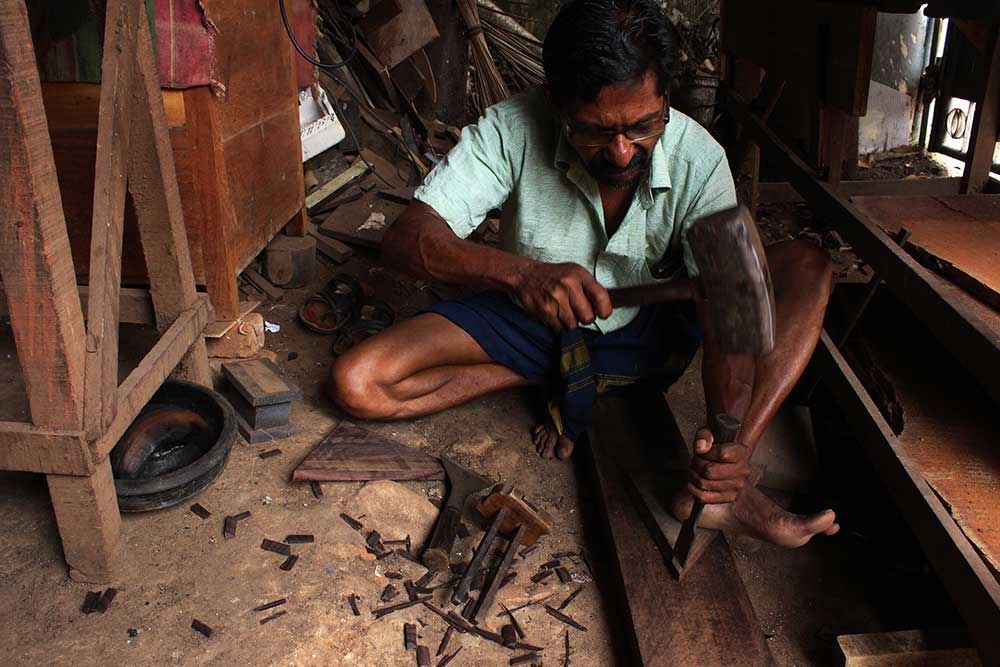
Craftsman chiseling the edges of the plank.
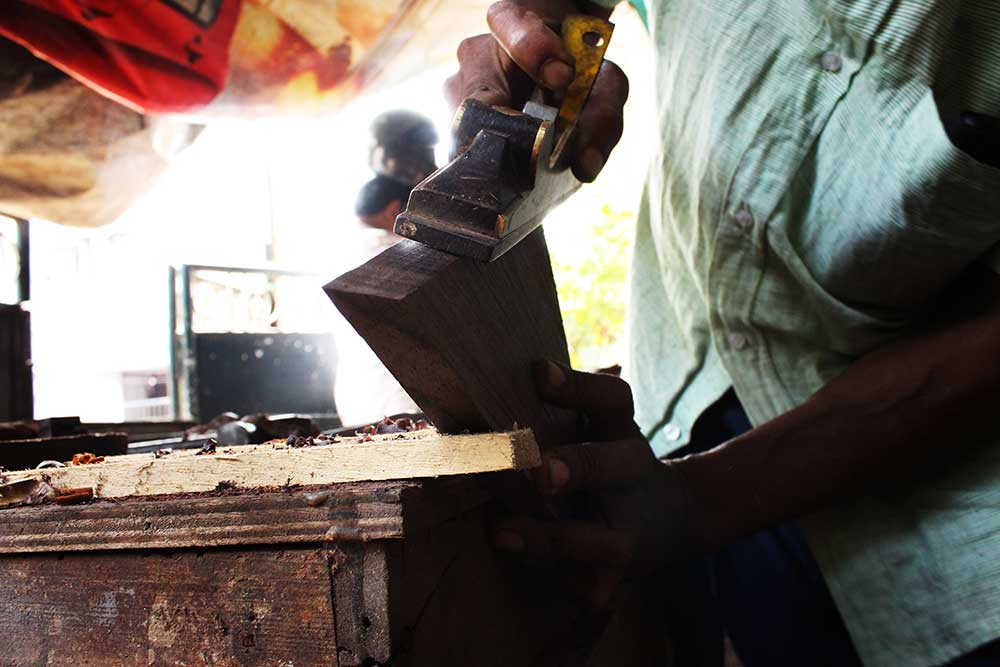
Craftsman using Pozhichuli to smooth the surface.
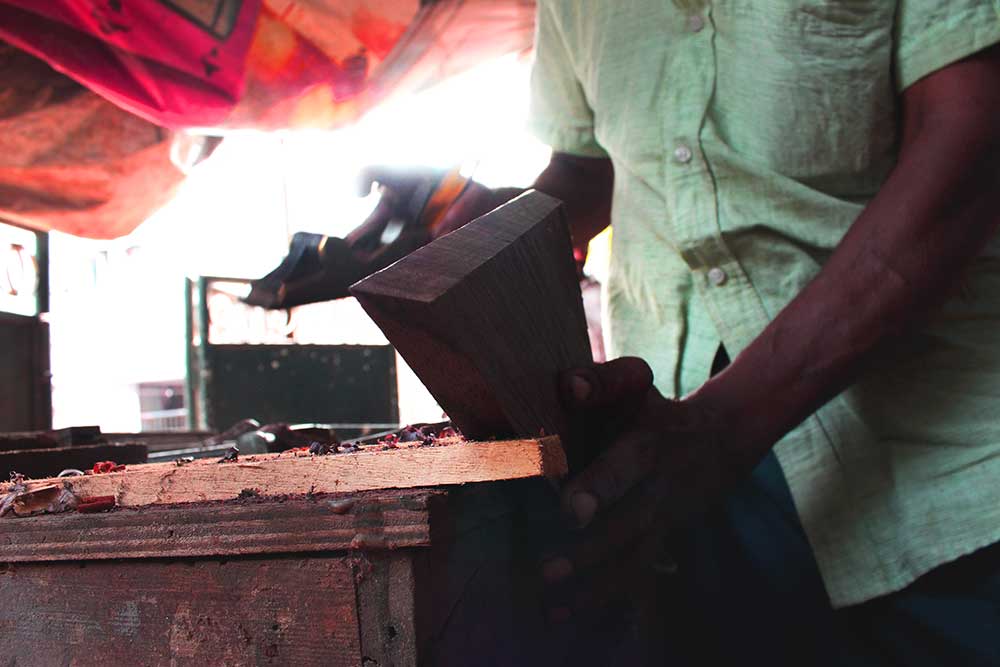
Craftsman using Pozhichuli to smooth the surface.
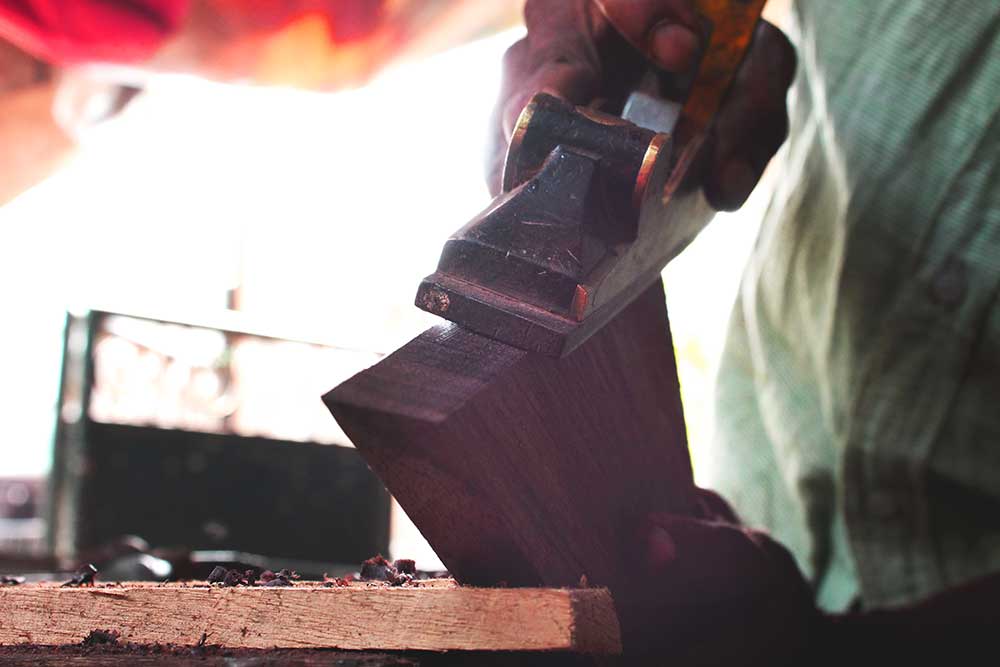
Craftsman using Pozhichuli to smooth the surface.
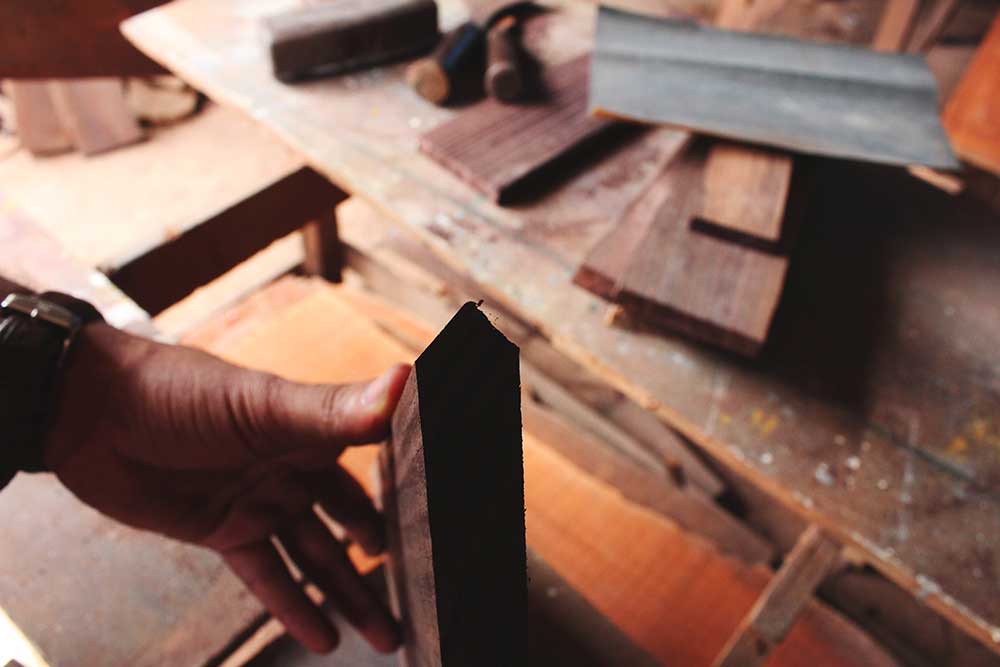
Smoothened edge of plank.
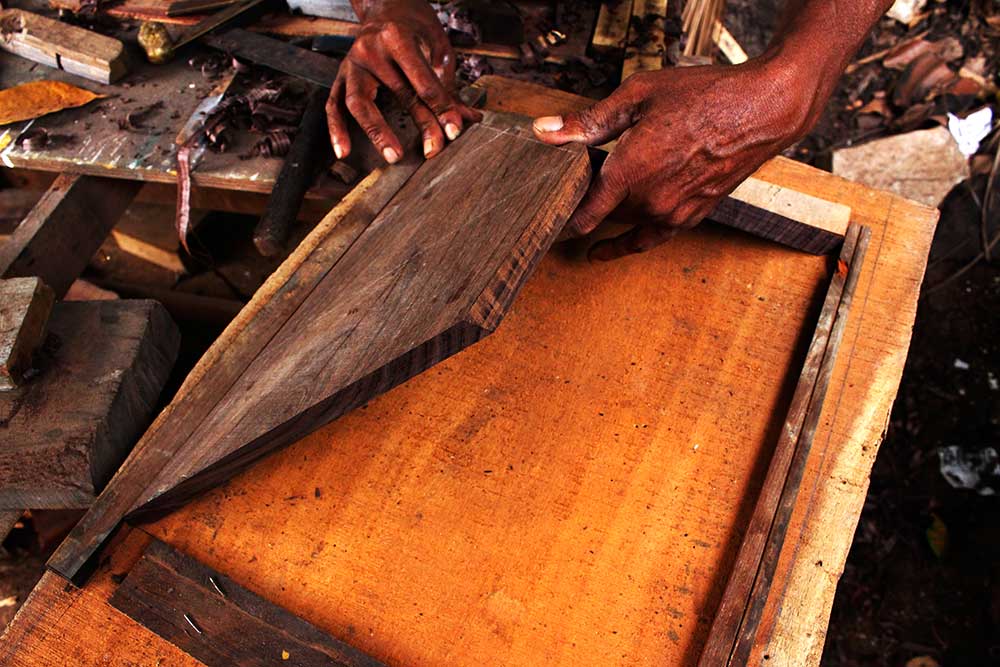
Craftsman arranged the cut plank inside the frame and inspecting the measurements.
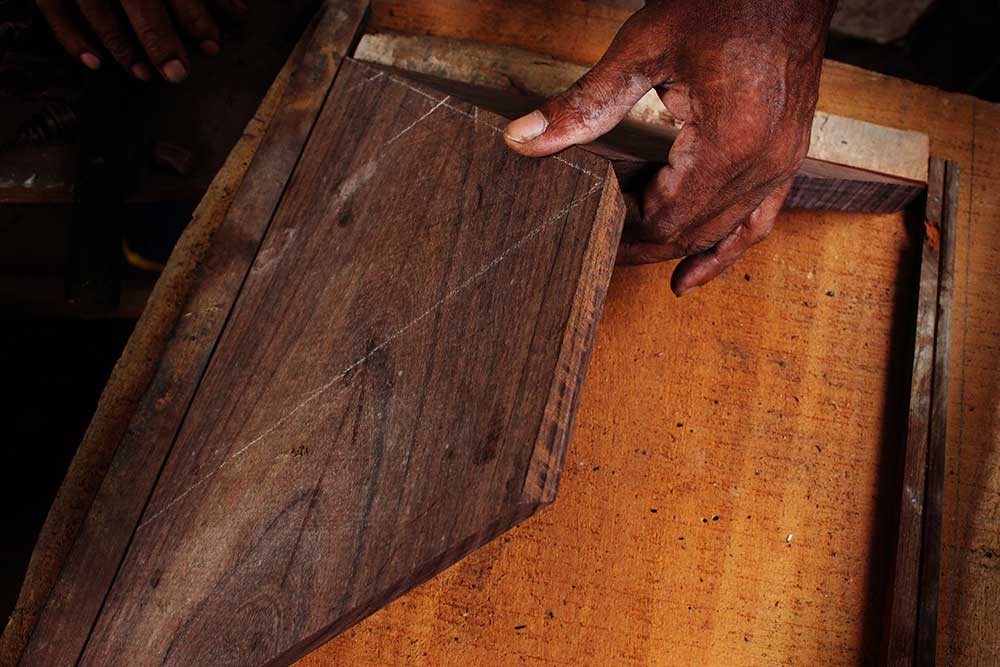
Craftsman arranged the cut plank inside the frame and inspecting the measurements.
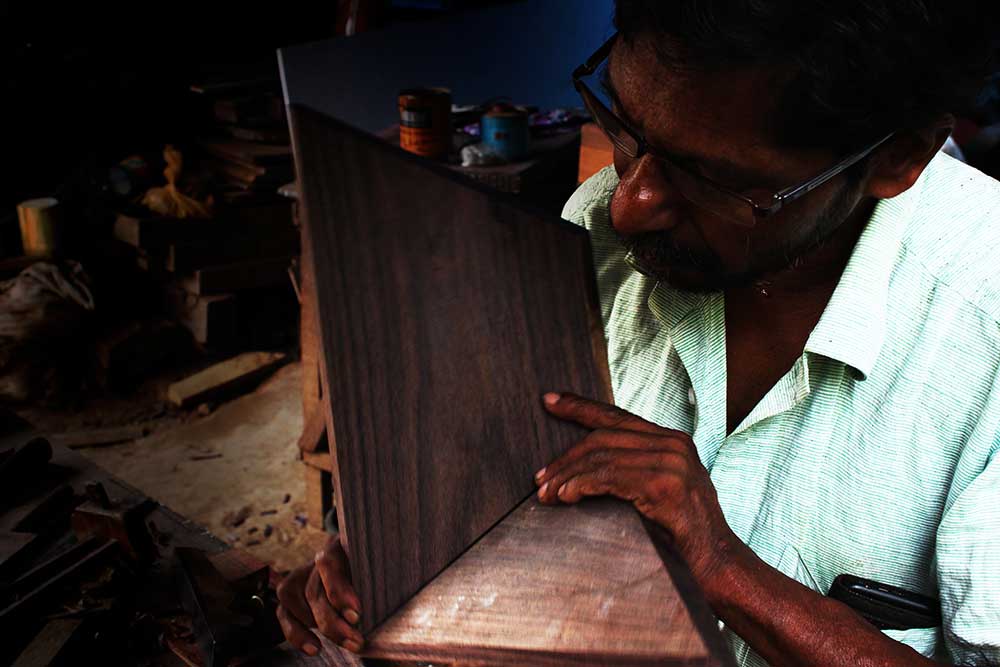
Craftsman inspecting the fitting of the parts.
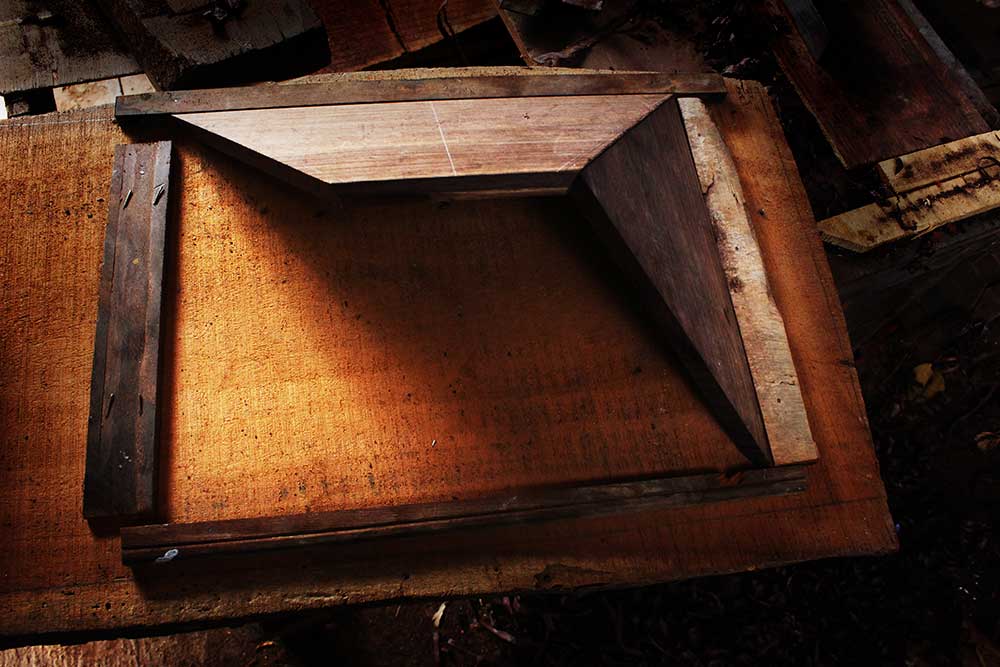
Wooden parts fixed inside the layout frame.
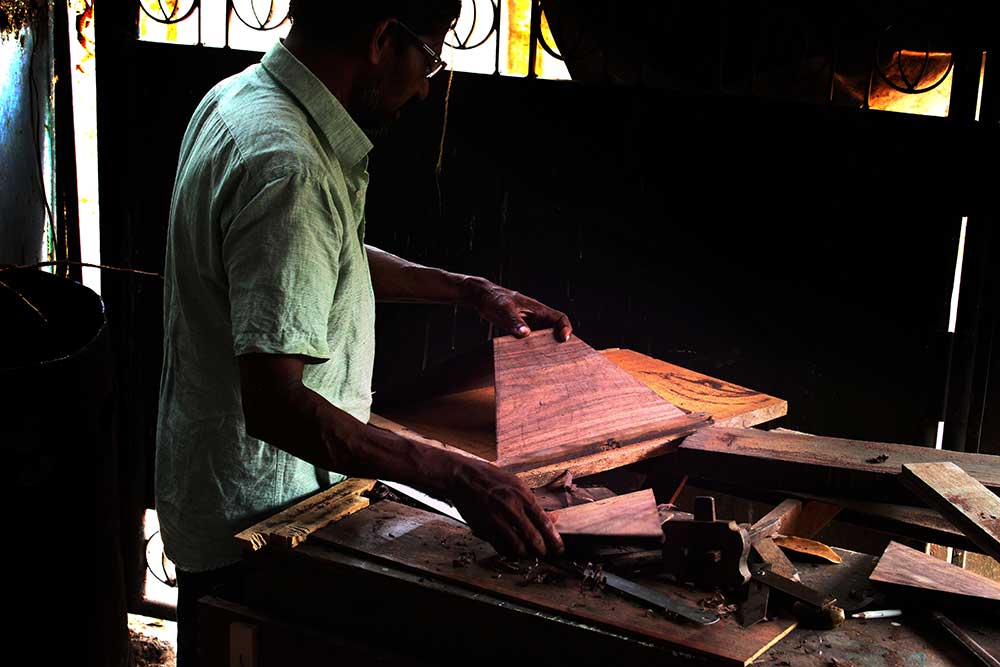
Craftsman fixing the wooden parts inside the layout.
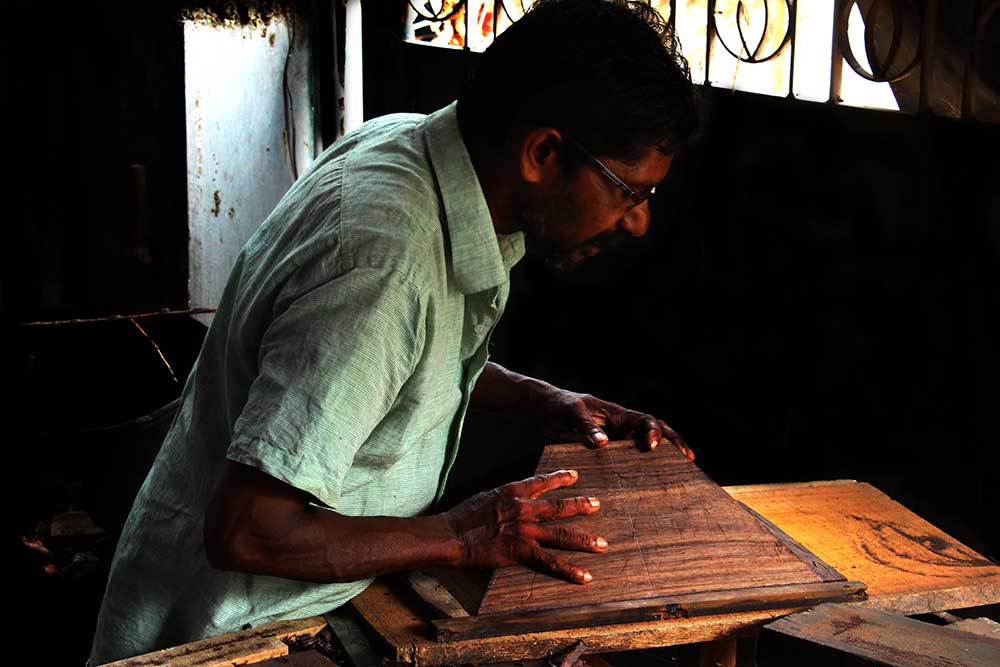
Craftsman inspecting the fitting.
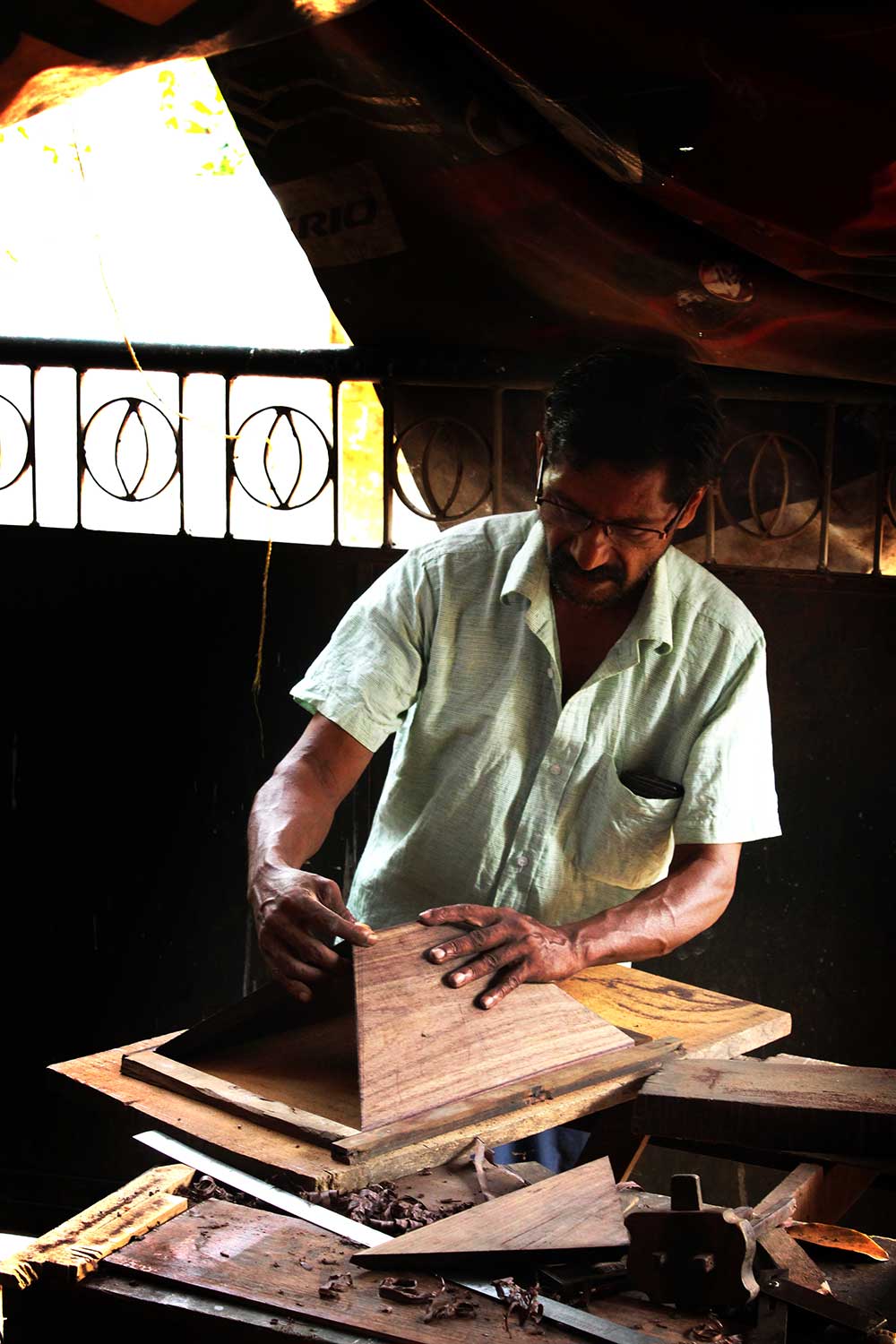
Craftsman inspecting the fitting.
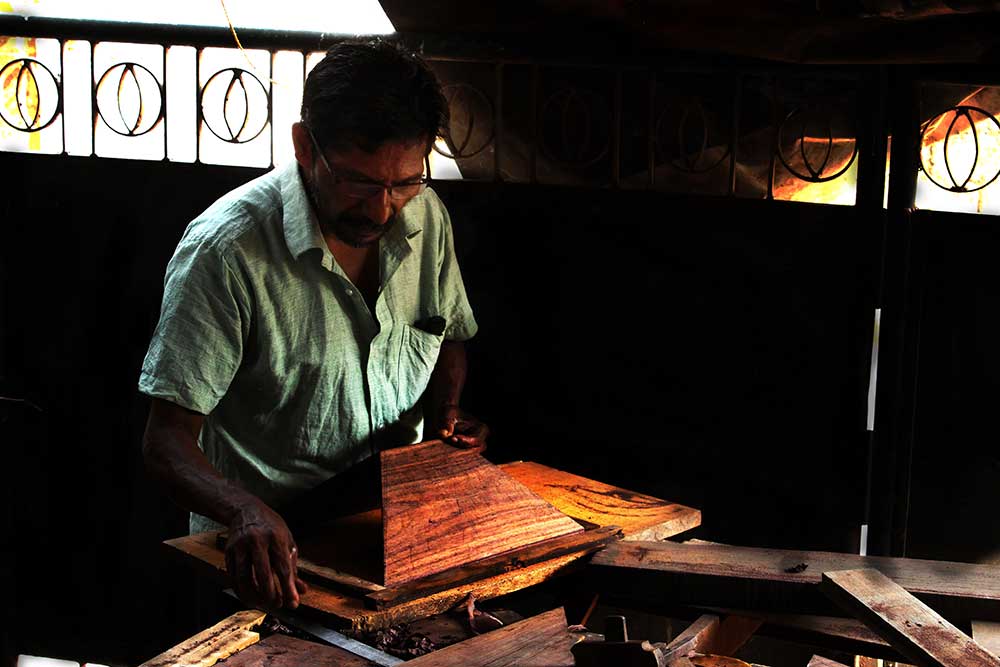
Craftsman nailing the planks and fixing the parts.
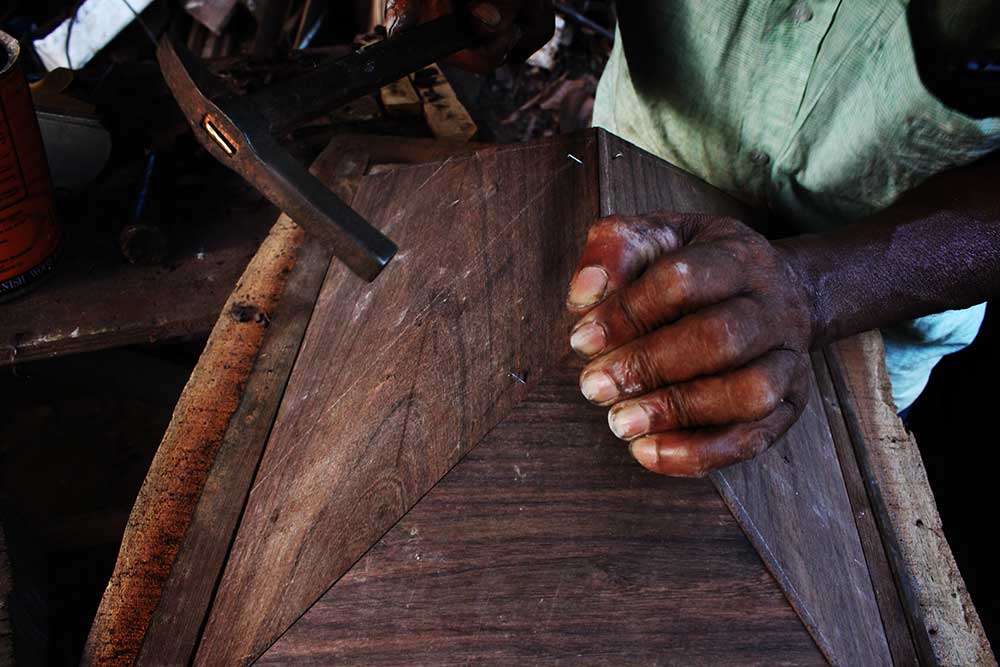
Craftsman nailing the planks and fixing the parts.
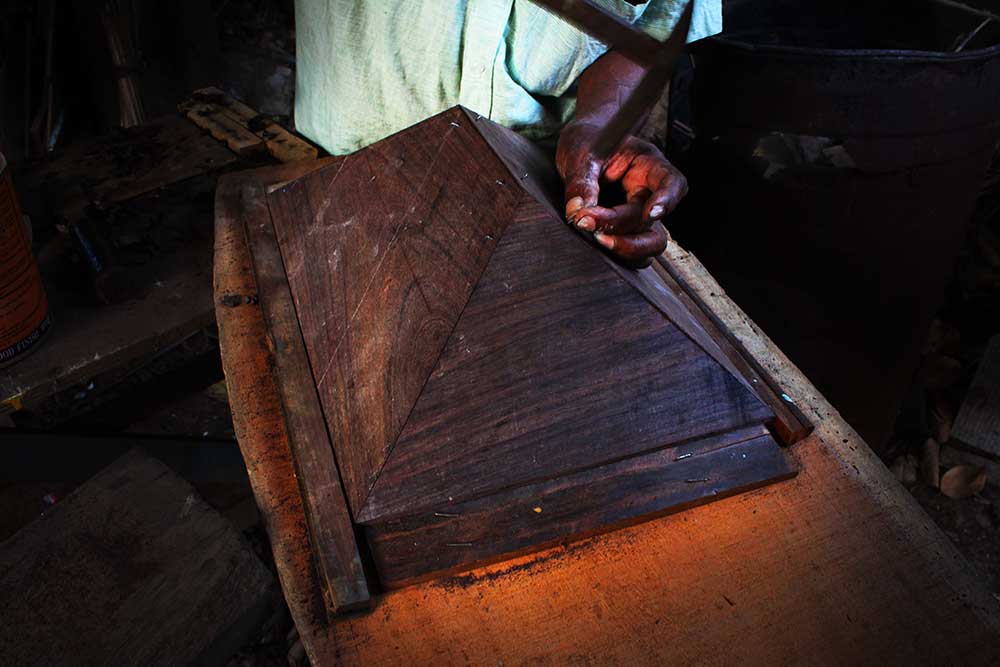
Craftsman nailing the planks and fixing the parts.
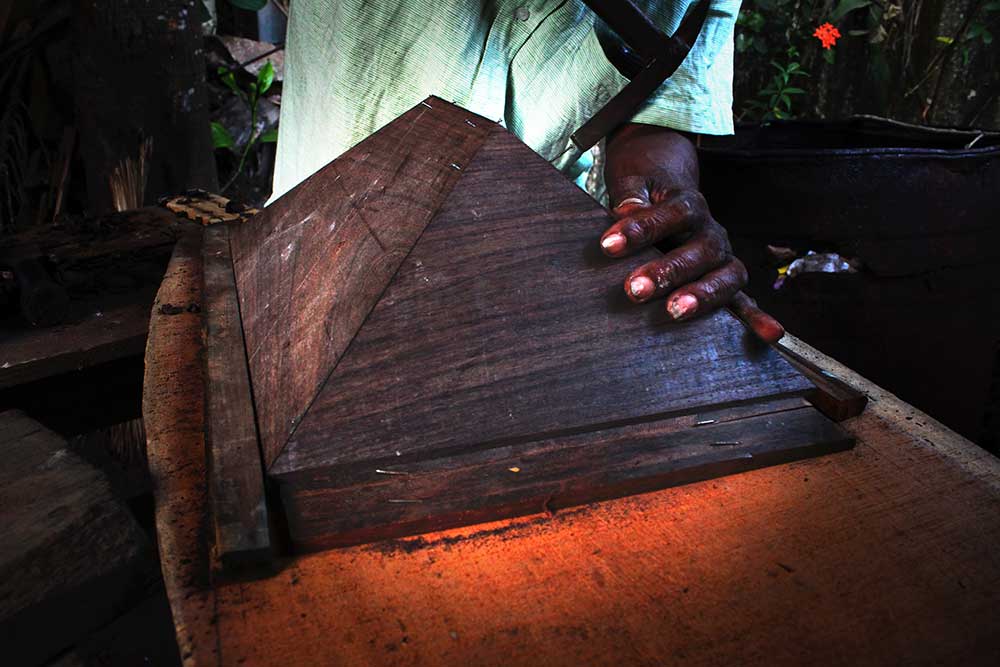
Craftsman nailing the planks and fixing the parts.
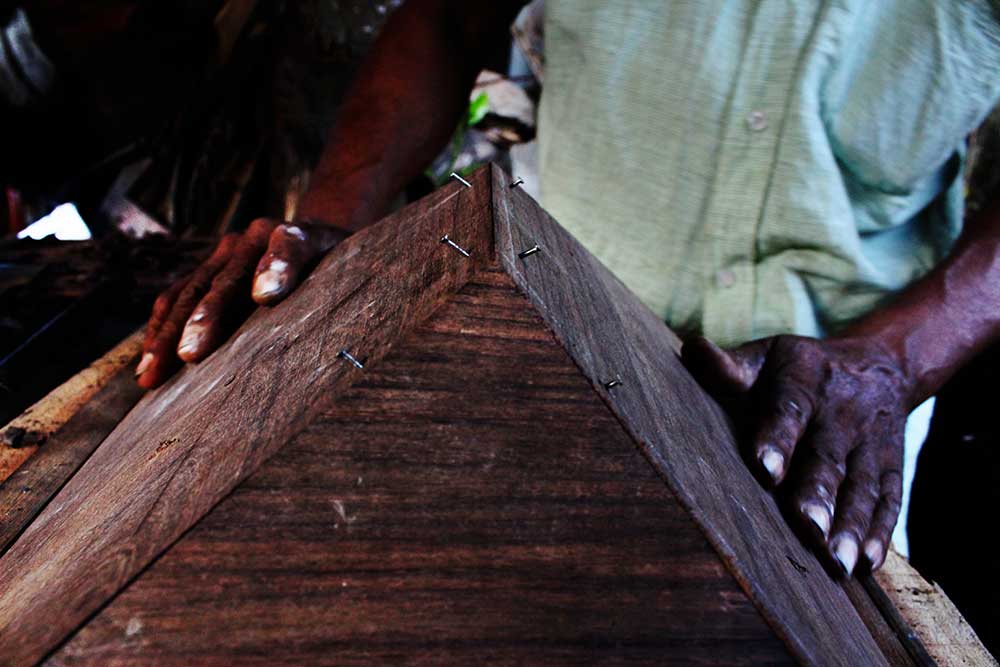
Temporarily nailed roof of Nettur petti
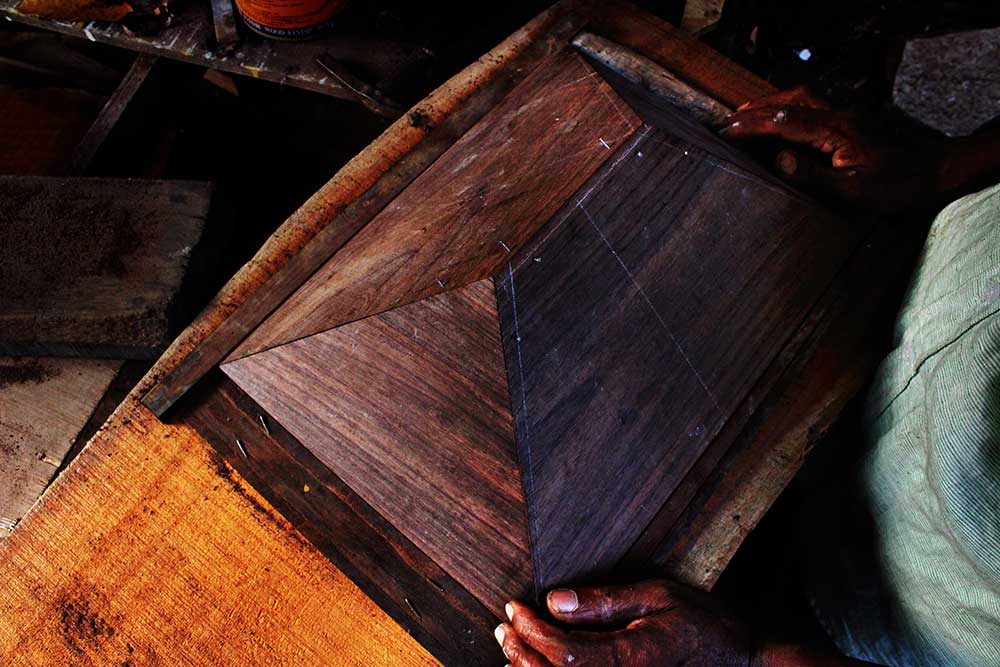
Top view of temporarily nailed roof of Nettur petti
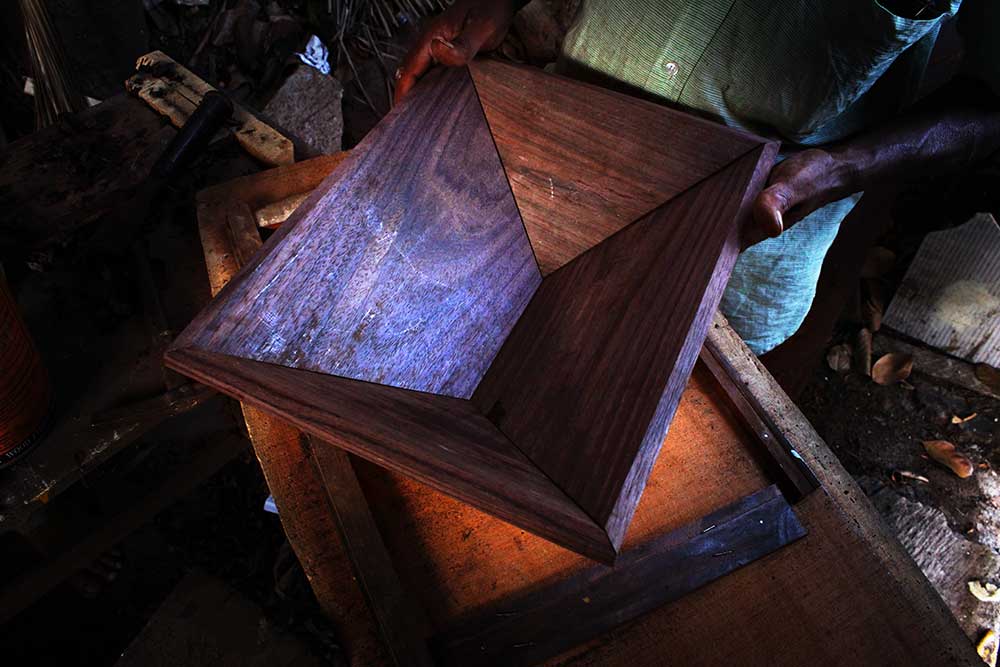
Interior view of the roof of Nettur Petti.
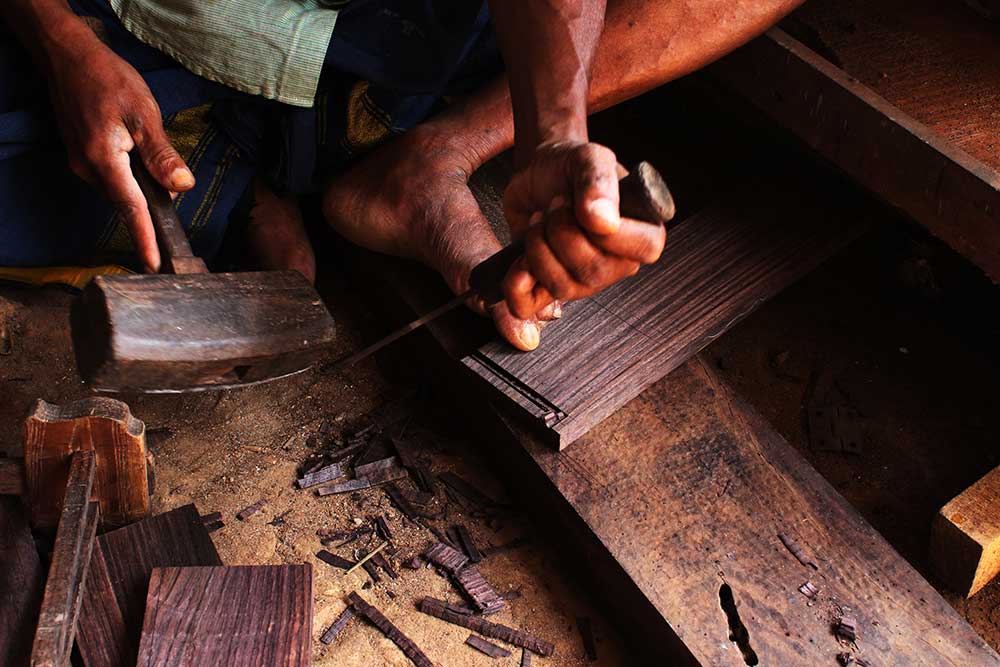
Craftsman engaged in chiseling.
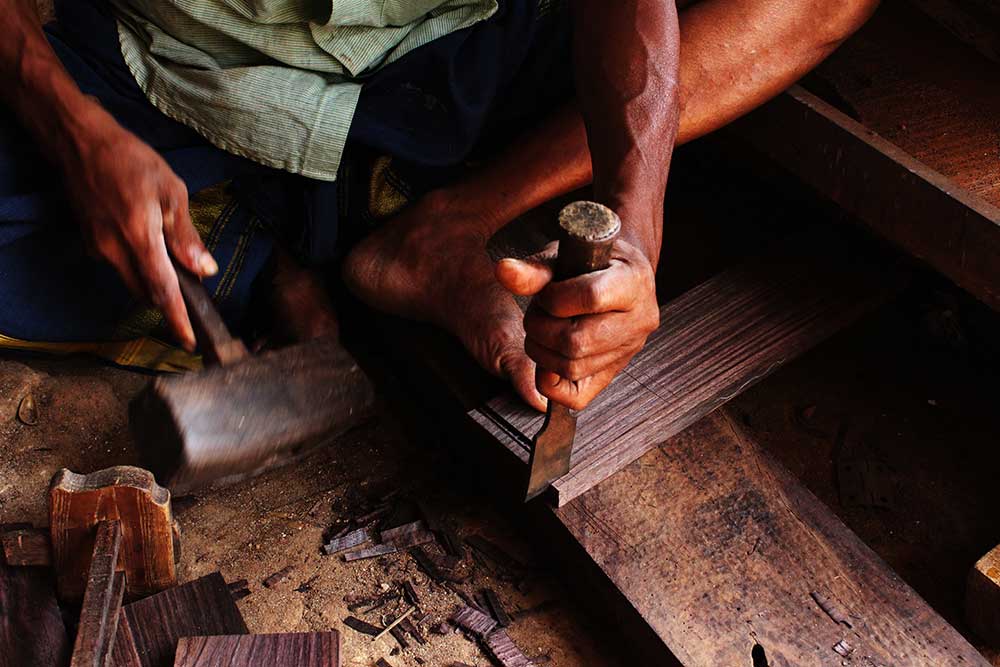
Craftsman engaged in chiseling.
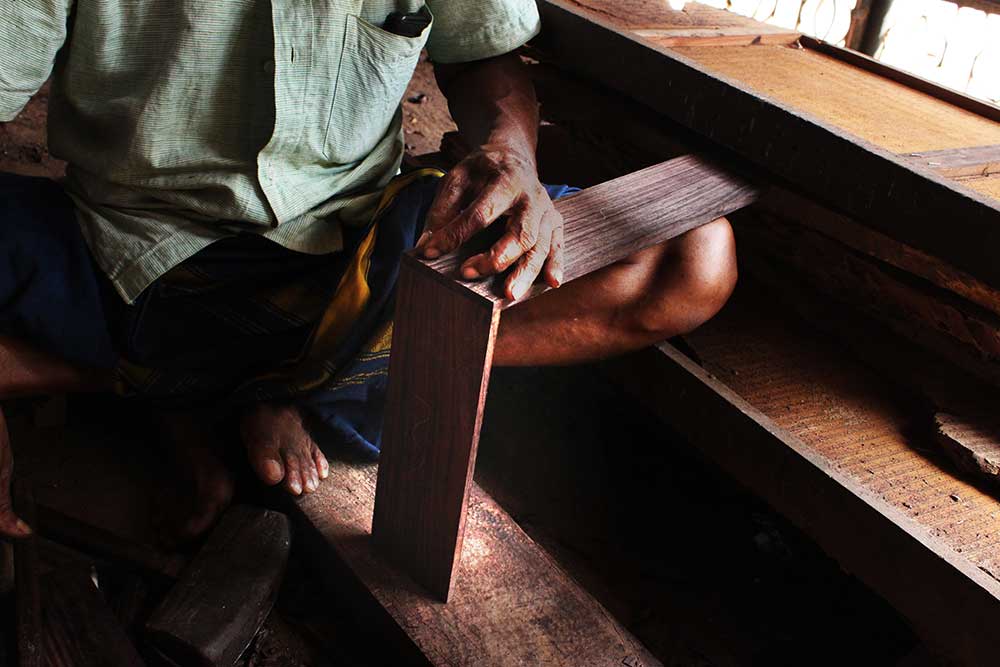
Nailing the sides and attaching the parts.
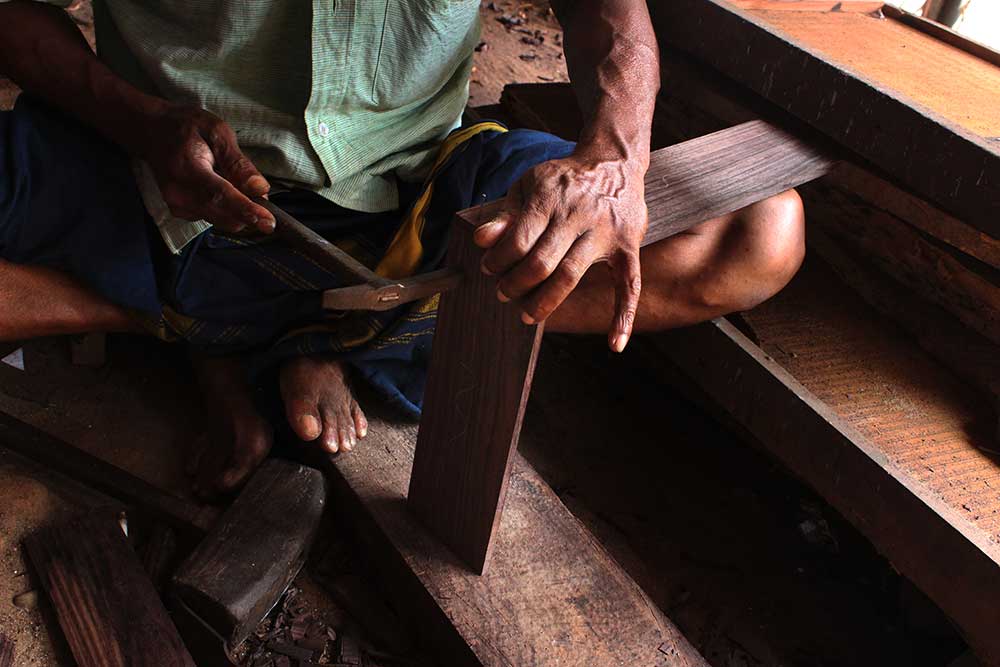
Hammering the nails and fixing the walls of box.
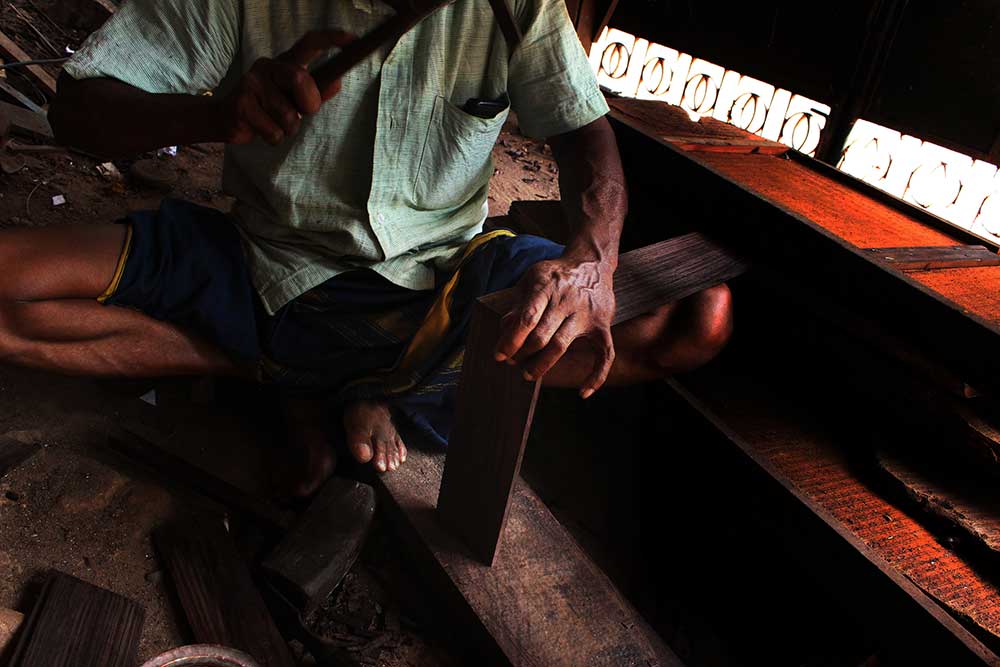
Nailing the sides and attaching the parts.
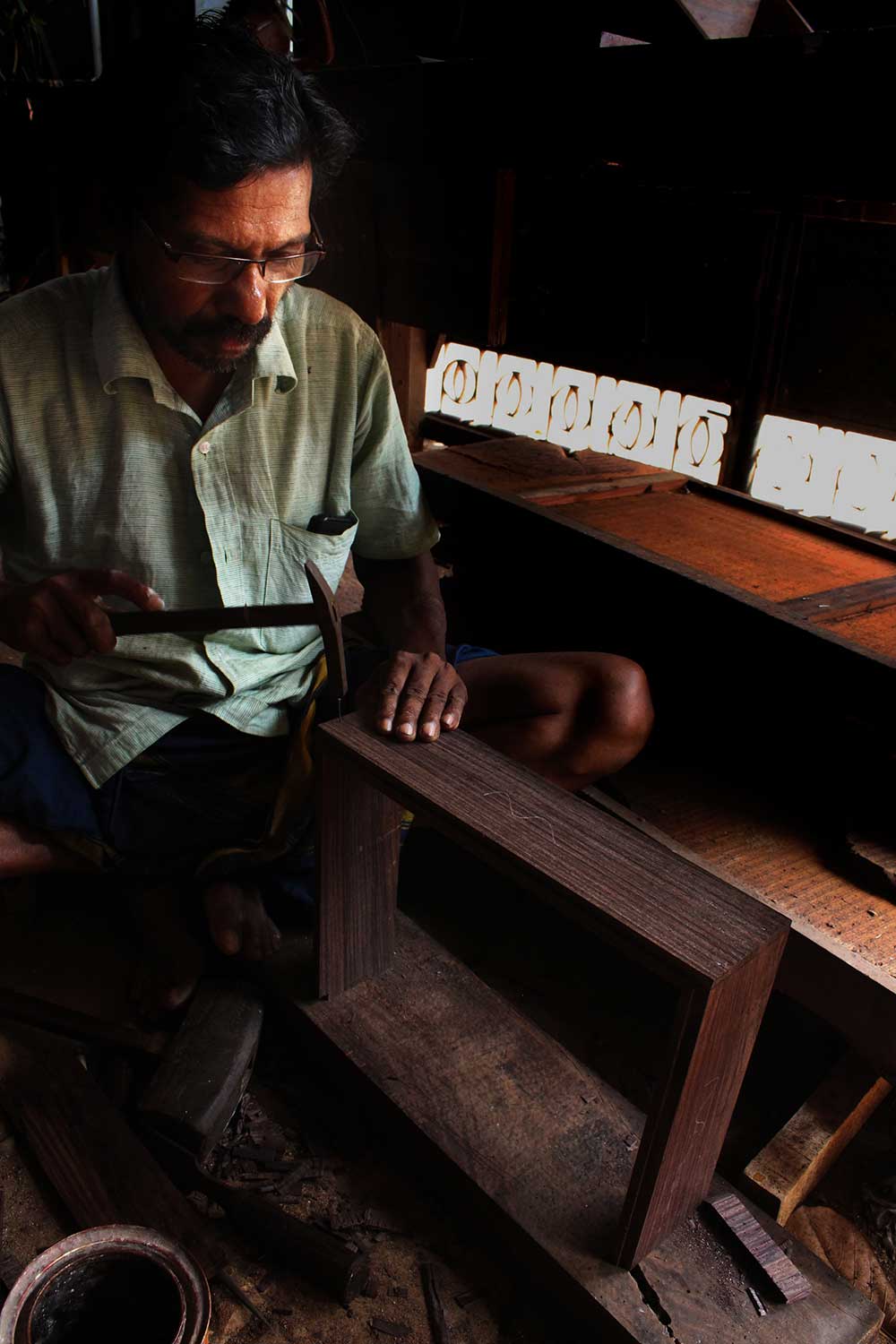
Nailing the sides and attaching the parts.
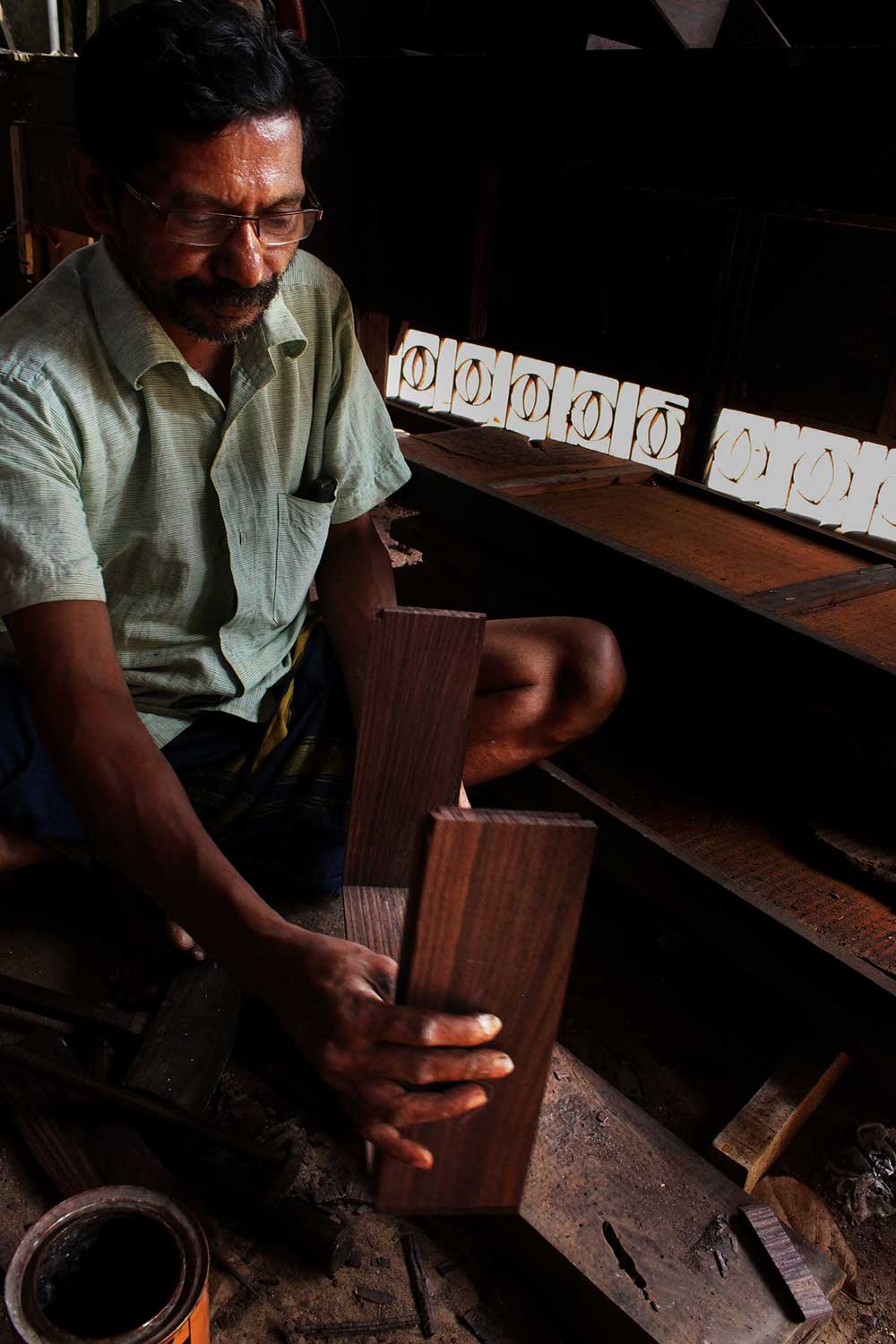
Craftsman engaged in attaching the walls of box.

Fixing the lid of interior utility area.
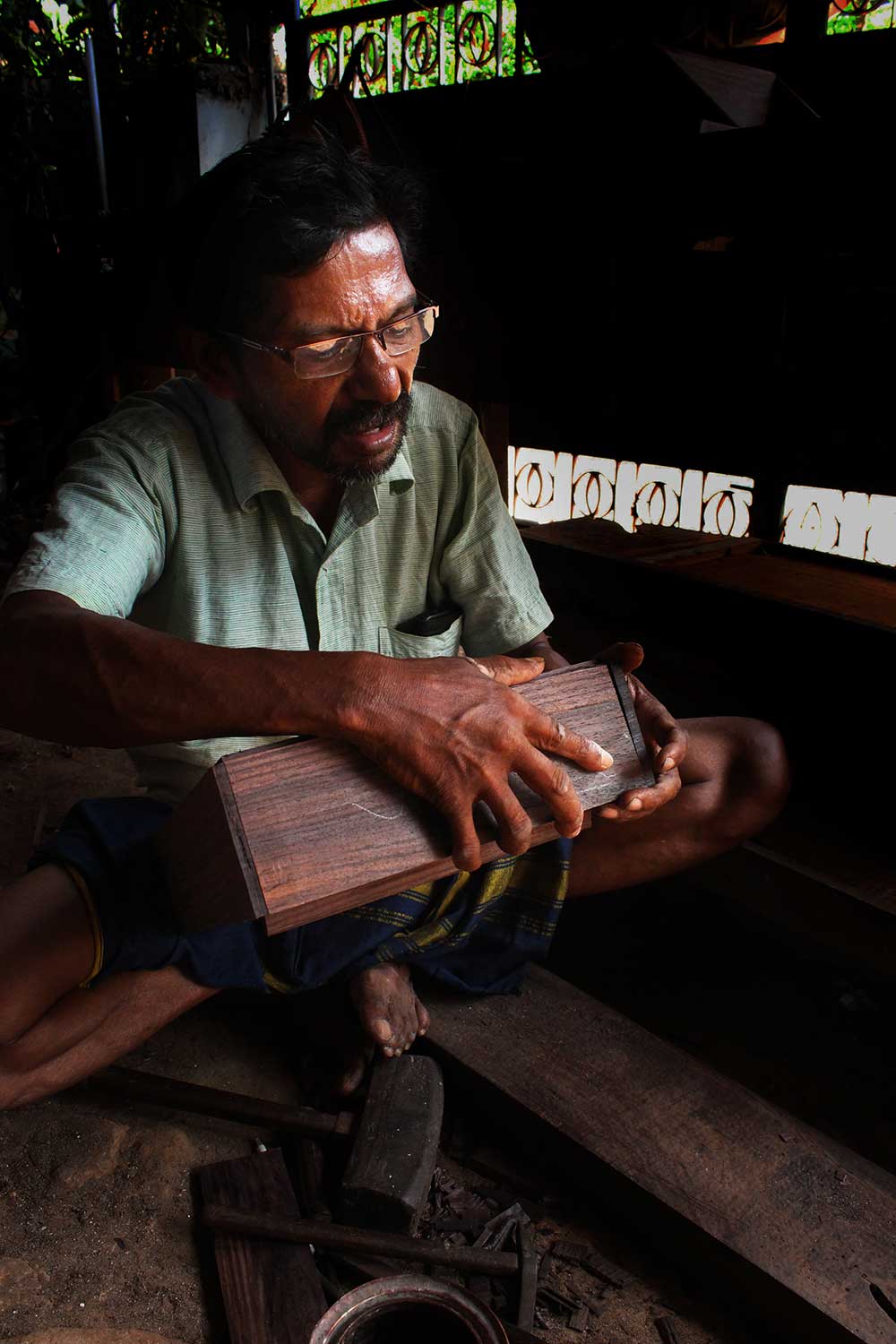
Craftsman engaged in attaching the walls of box.
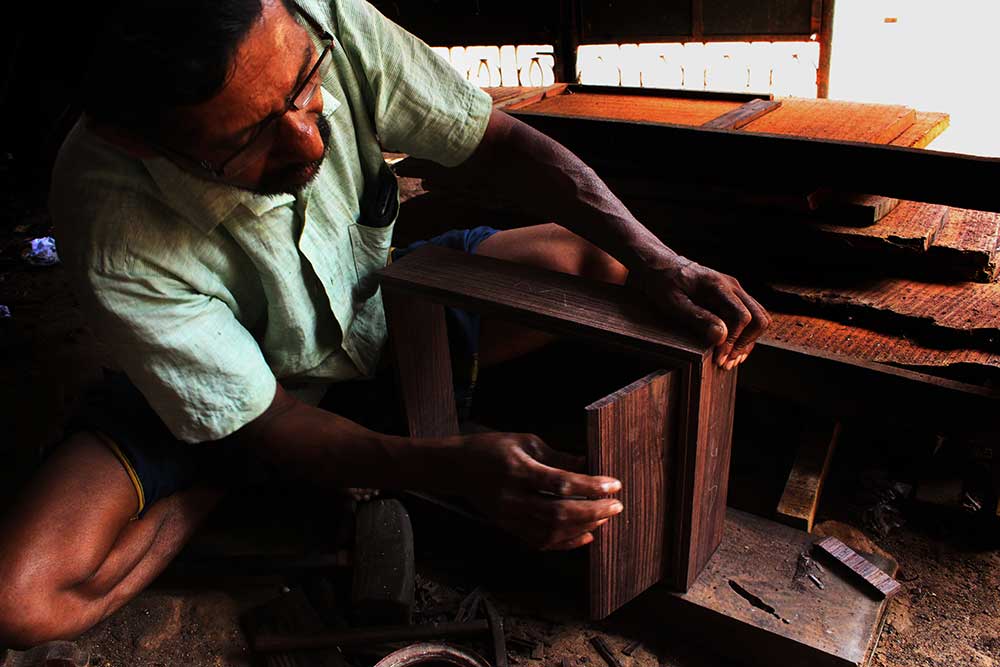
Craftsman engaged in inspection.
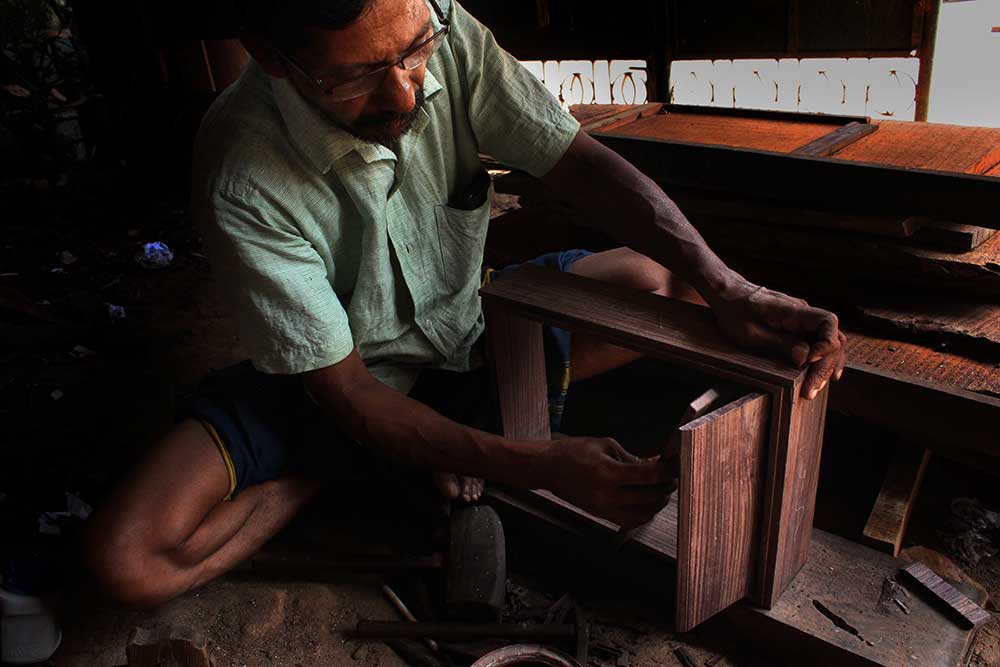
Craftsman engaged in attaching the walls of box.
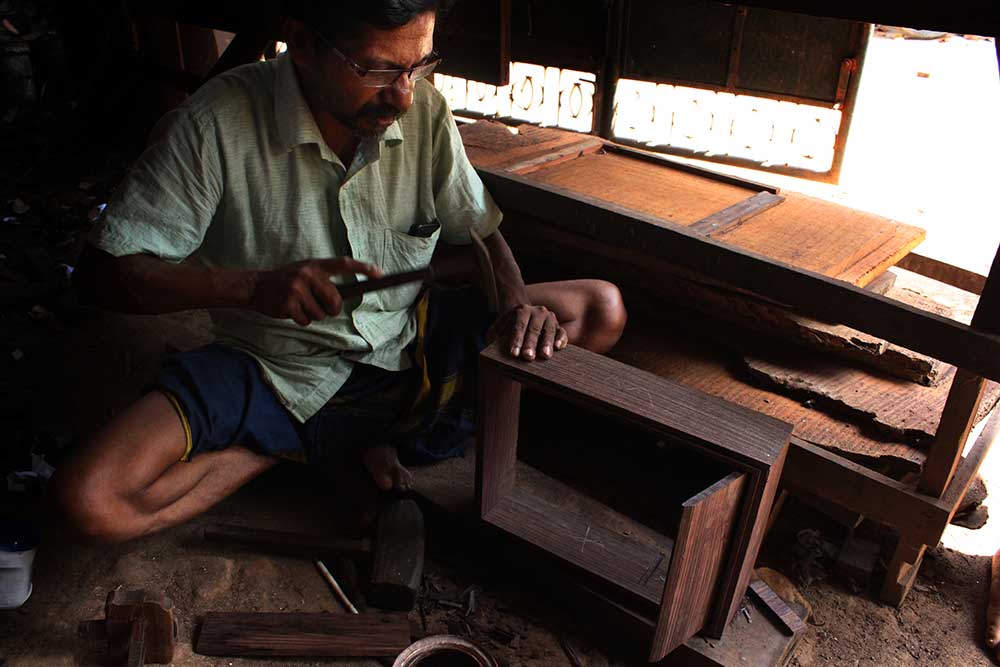
Craftsman engaged in attaching the walls of box.
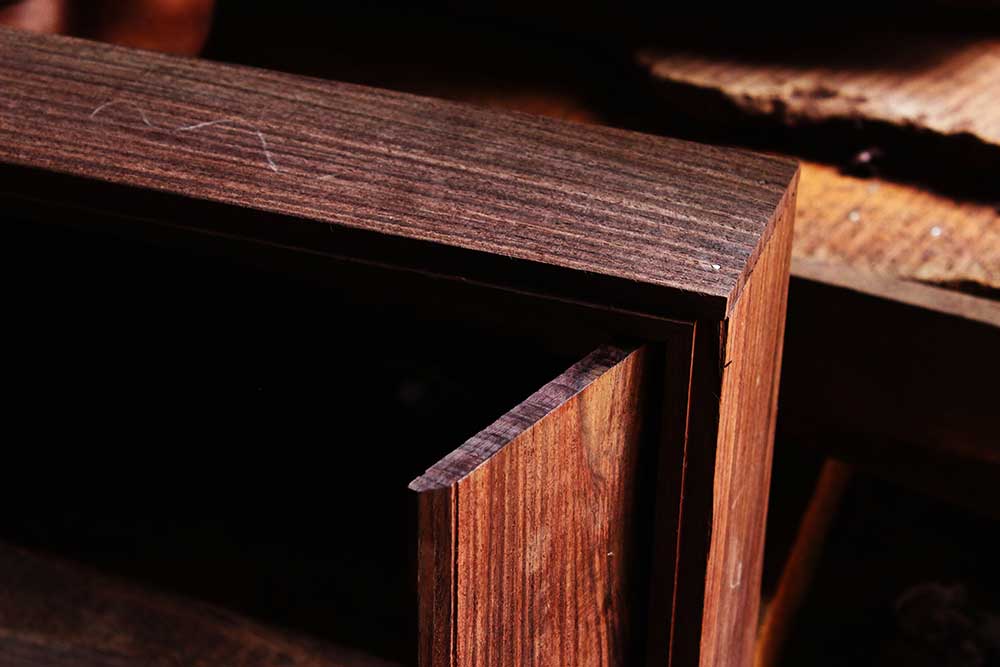
Close up view finished edges.
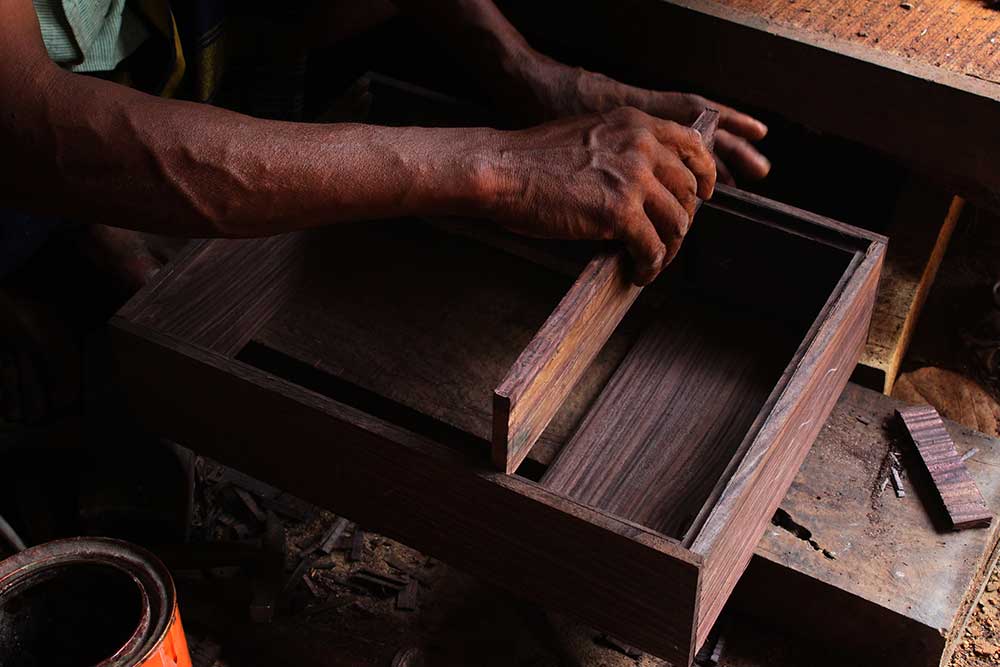
Fixing the interior partition.
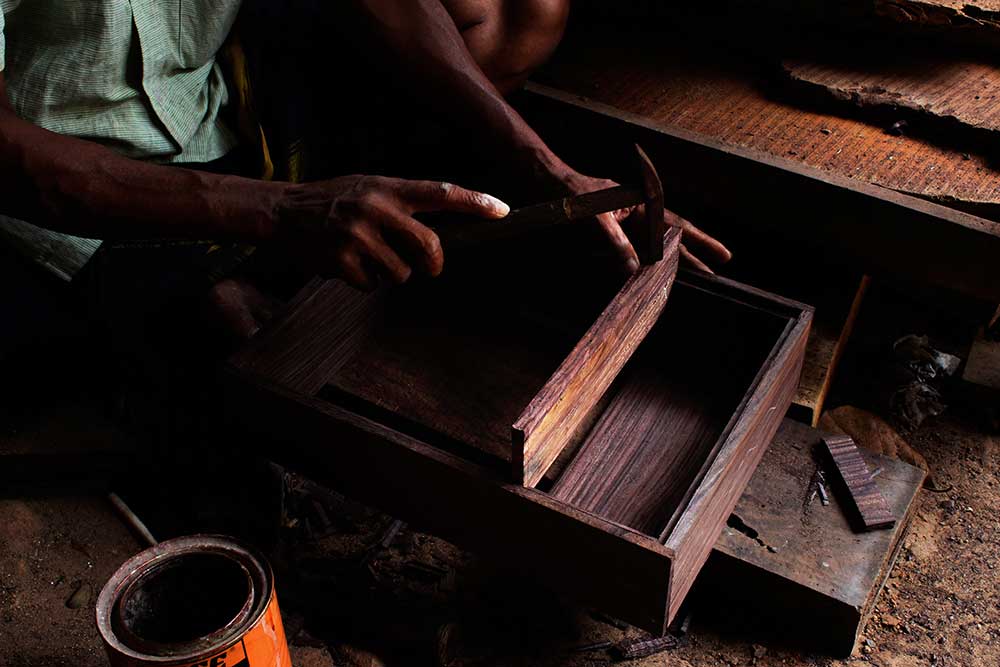
Hammering the wooden plank and fixing the interior partition.
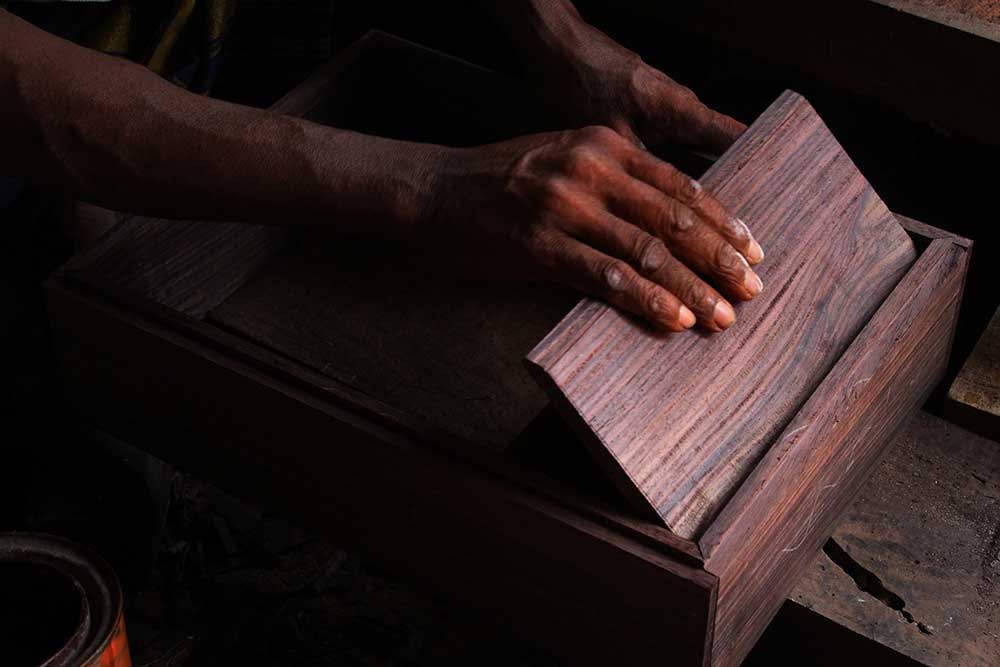
Inspecting the functionality of wooden lid.
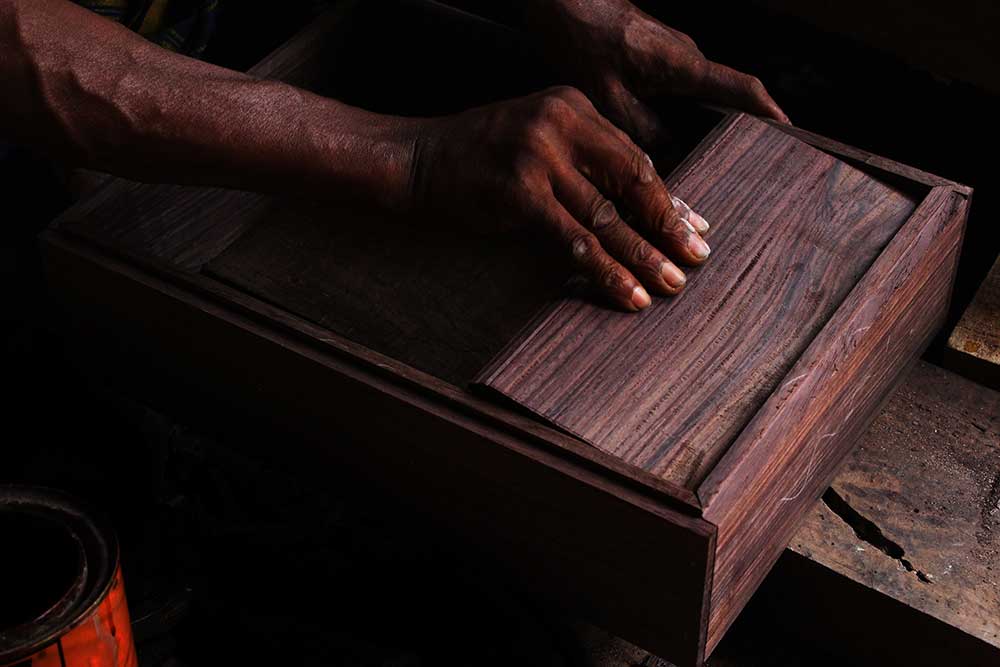
Inspecting the functionality of wooden lid.
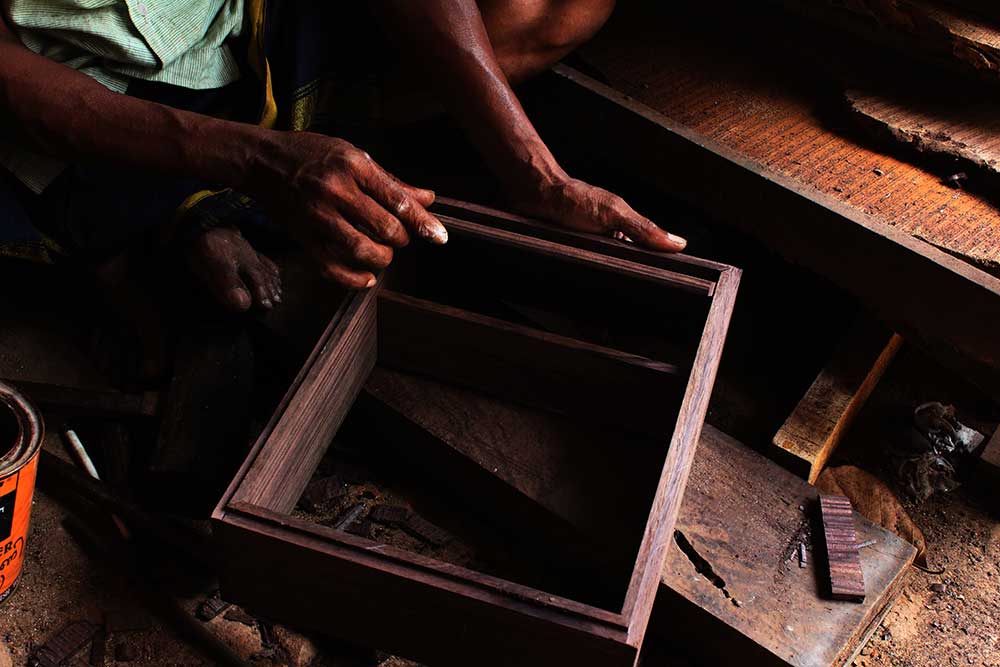
Inspecting the functionality of wooden lid.
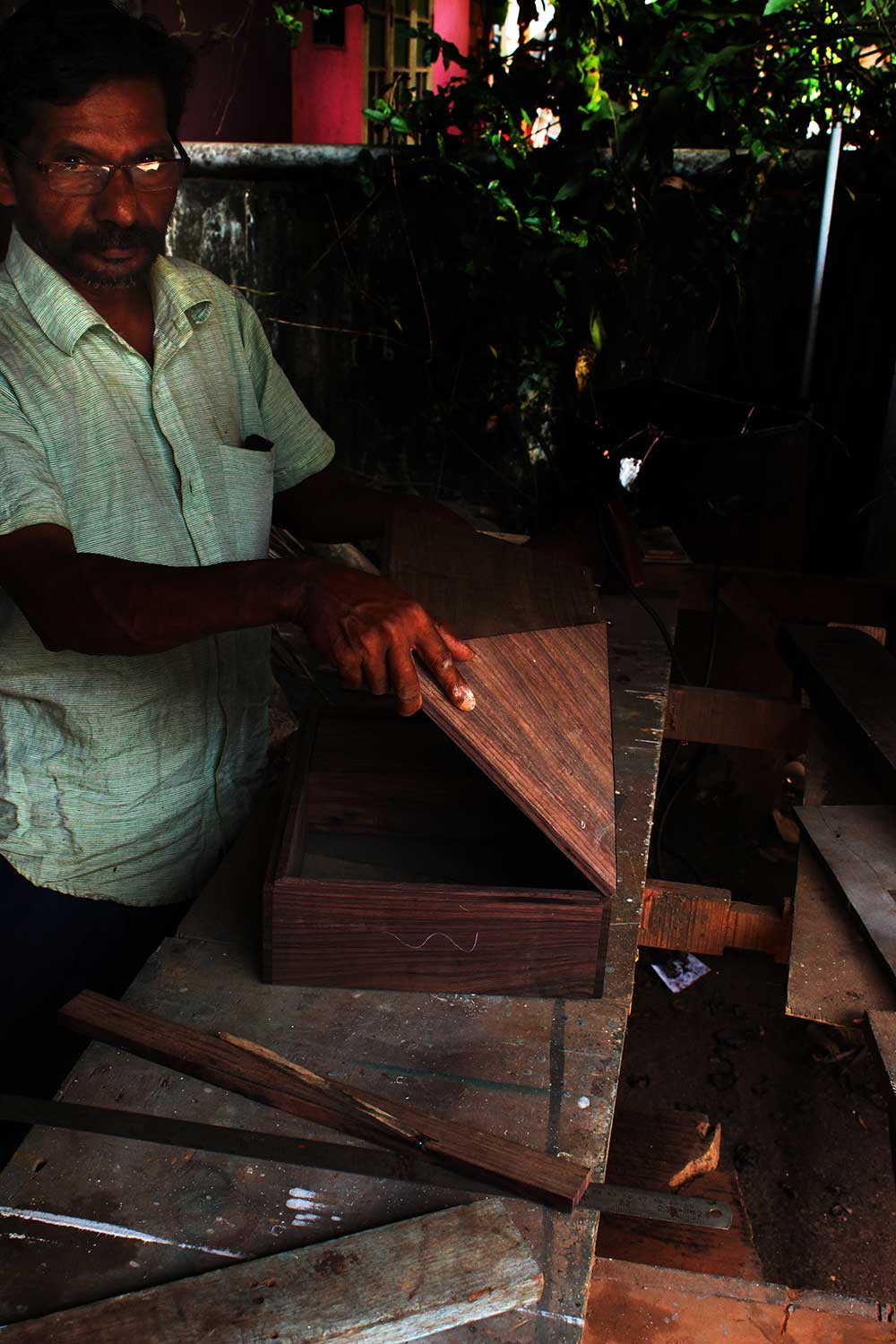
Final wooden composition of Nettur Petti.
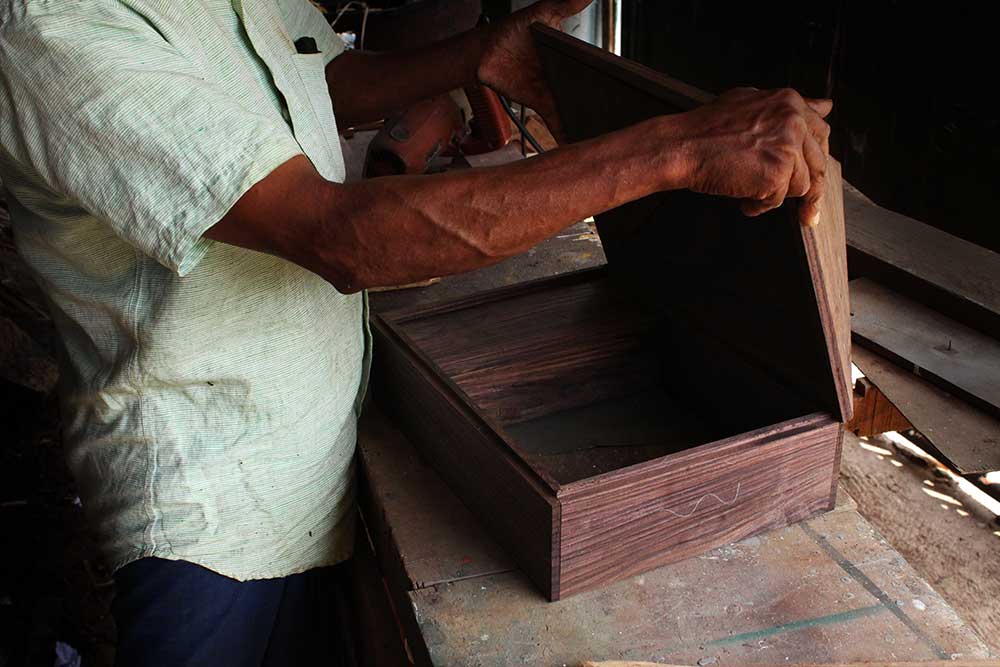
Final wooden composition of Nettur Petti, a close up view.
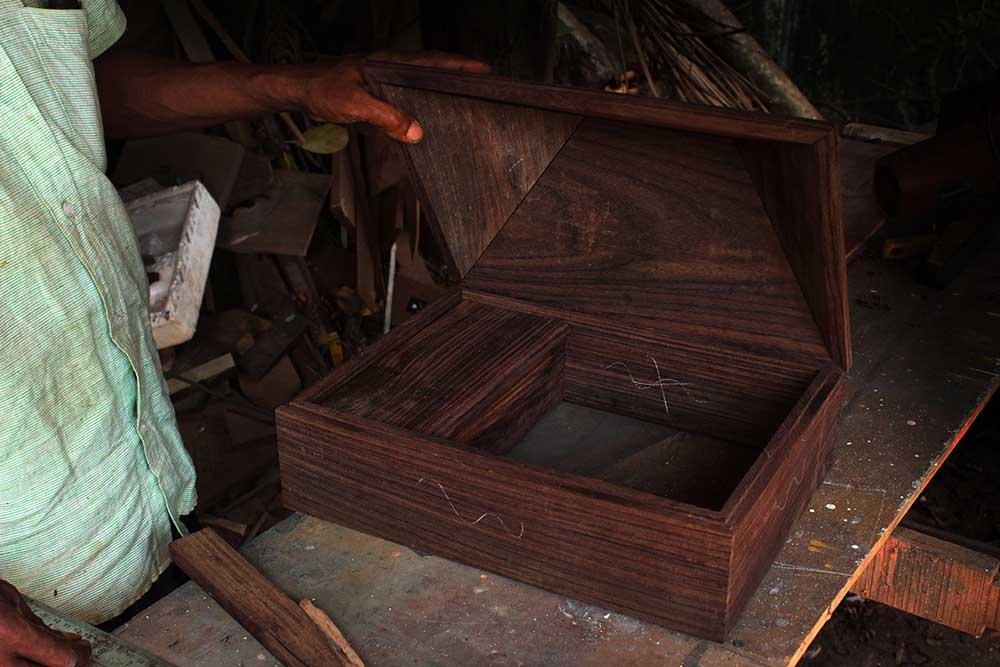
Interior view of final wooden composition of Nettur Petti.
The method of casting followed for Nettur petti is die casting becos of the repeated use of motifs and patterns. The motifs of brass fittings are also inspired from the ancient architecture of North Kerala. The process starts from the making of die which is casted in iron and the artisan is having a set of dies which is around 50 – 60 years old. There are sets of dies according to the size of the boxes. Once the size of the design is decided accordingly the mooshari selects the die and then starts with the process of melting brass in a vessel called “Kurichipul or musha”. Once the casting is done the casted artifacts are detached from the die once it is cool enough to handle. Then the artifacts are kept in water for sometime later on outside. Then the artifacts are polished in buffing machine as well as the sides are filed by using a filer. In olden days different types of sand papers were used for buffing. Nowadays another method used for making brass motifs are cutting the brass sheets, the main reason for using this method is the lack of skilled metal casting labors.
The parts of the brass casted pieces have different names. Moolakkettu is the corner piece used for supporting the side corners. Thavala Kettu is for supporting the base, Thangu kettu is used for supporting the sides of box. Pulikal is literally means tiger legs used as base support. Pidi is handle which is fixed on the top of the roof.
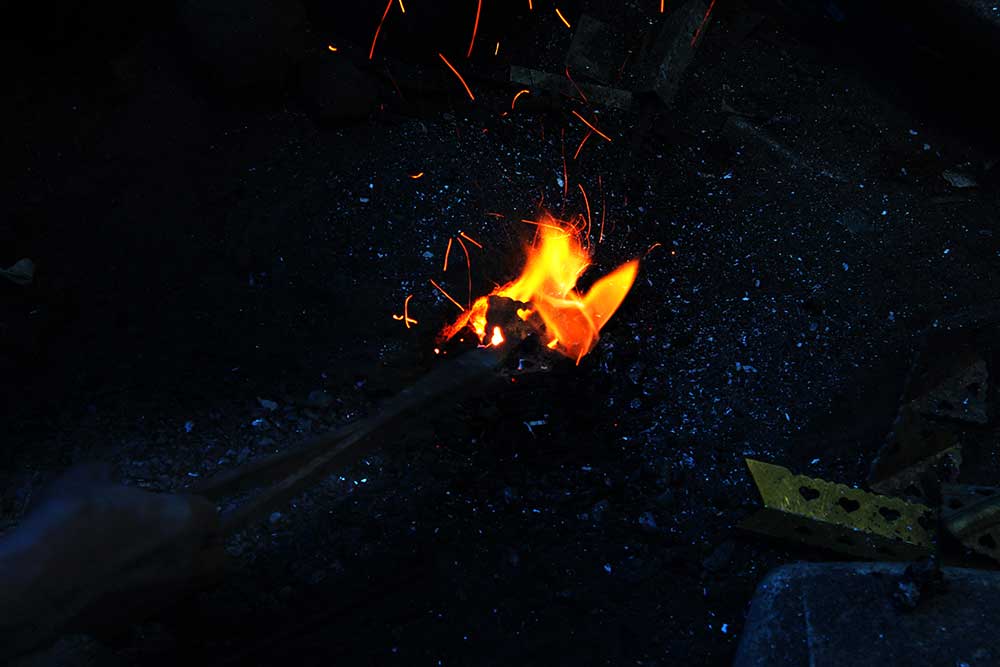
Firing the casted brass artifact.
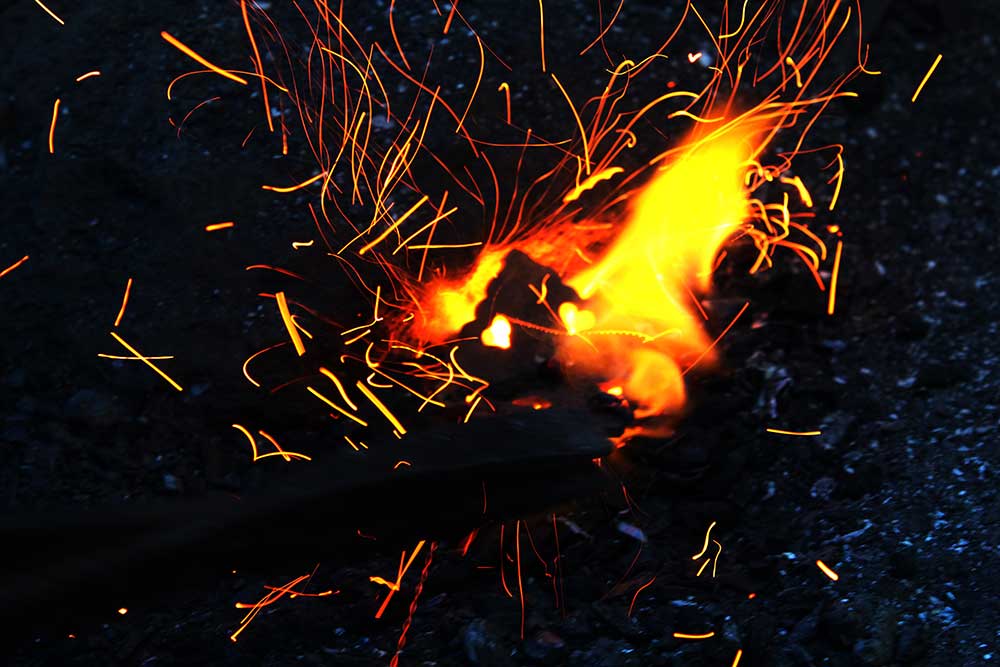
Firing the casted brass artifact.
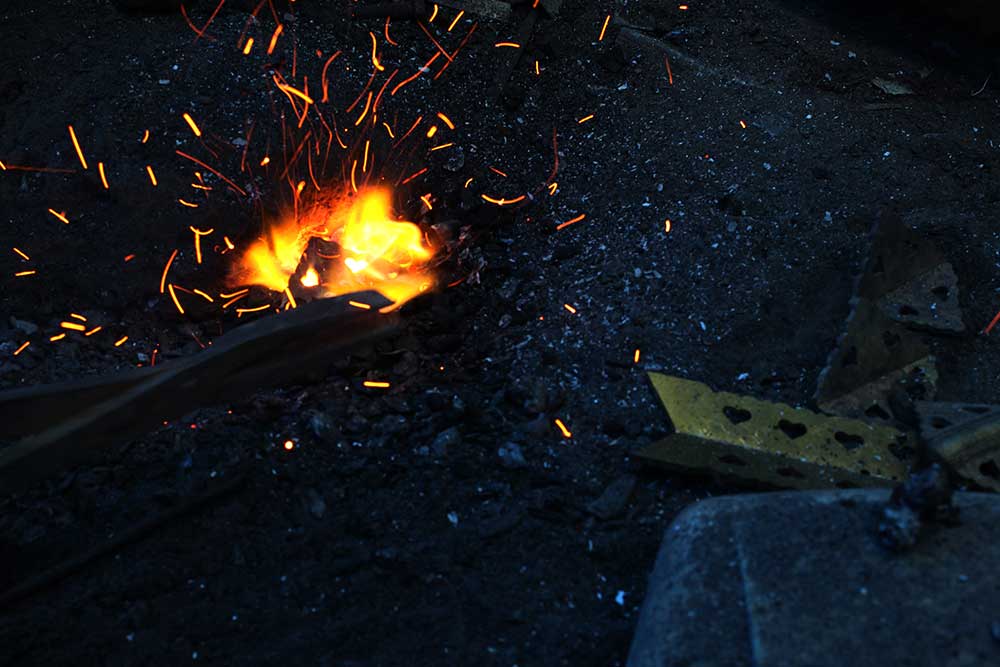
Firing the casted brass artifact.
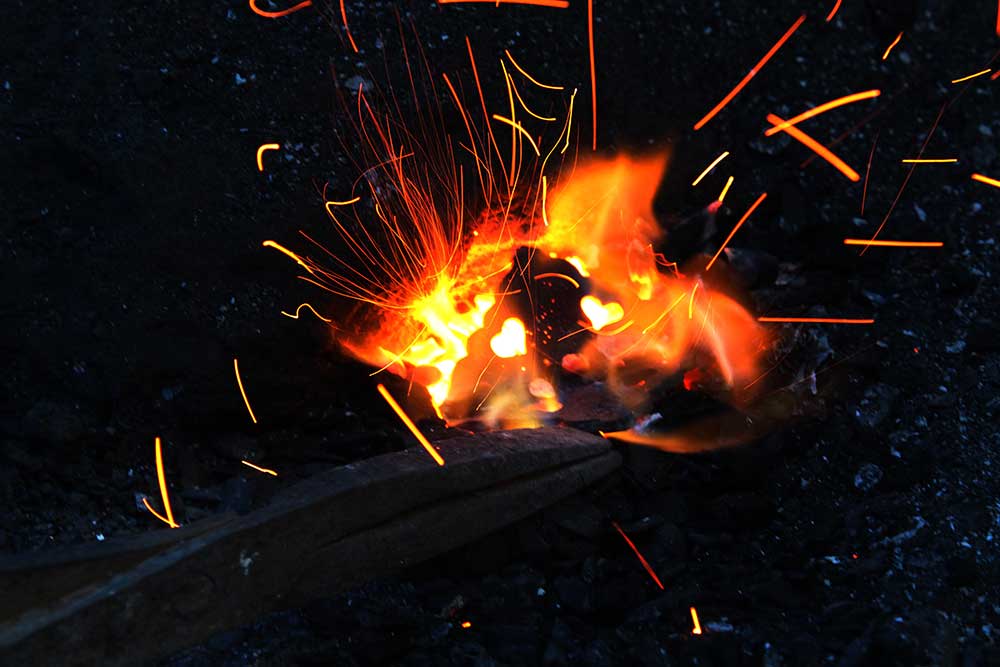
Firing the casted brass artifact.
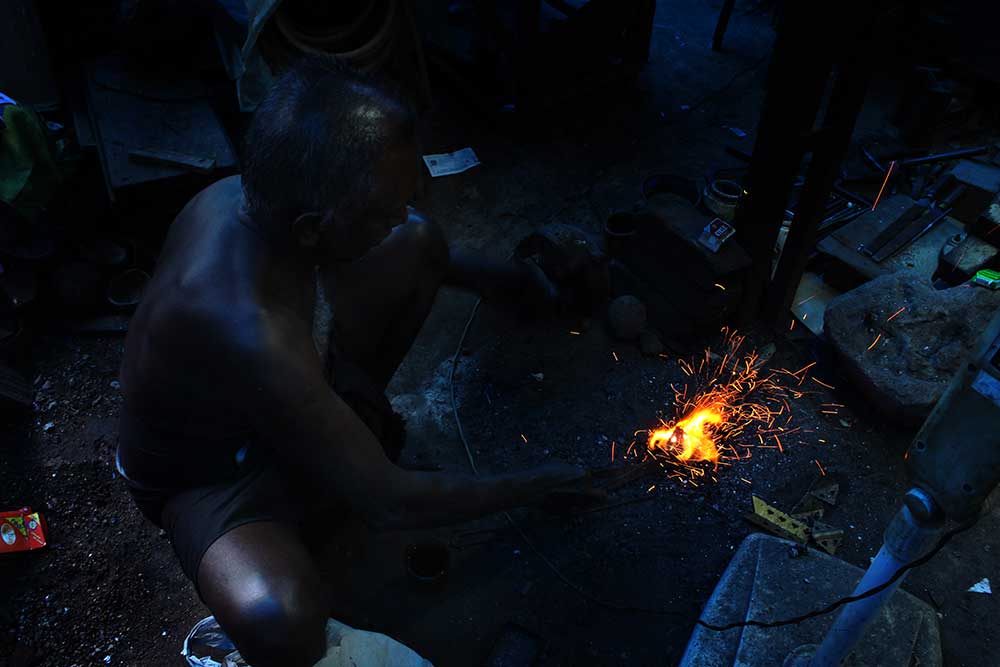
Artisan engaged in firing the casted brass artifact.
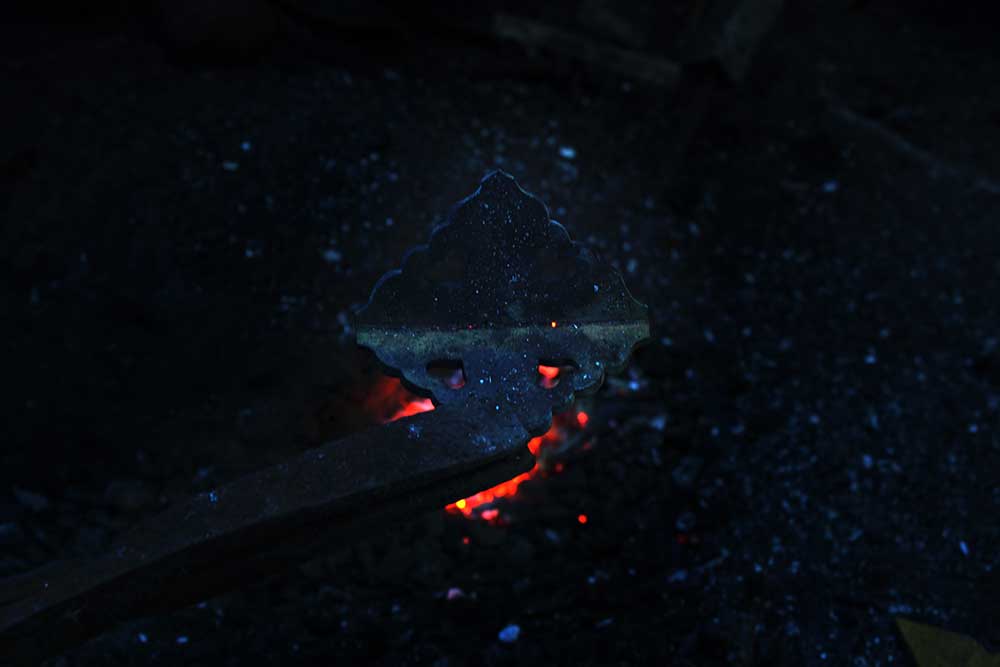
The fired brass artifact.
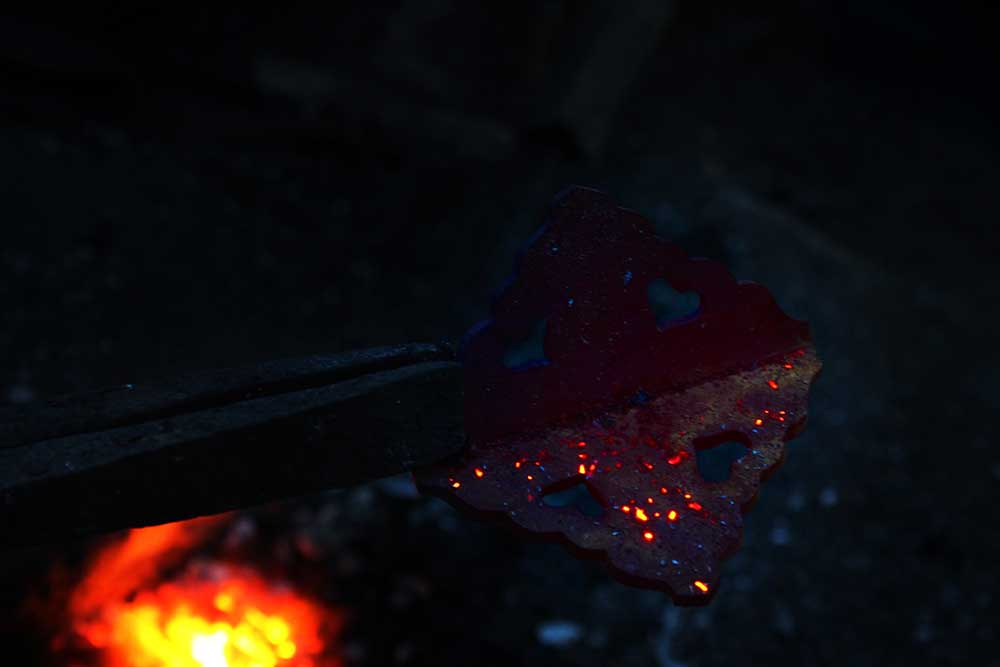
The fired brass artifact.
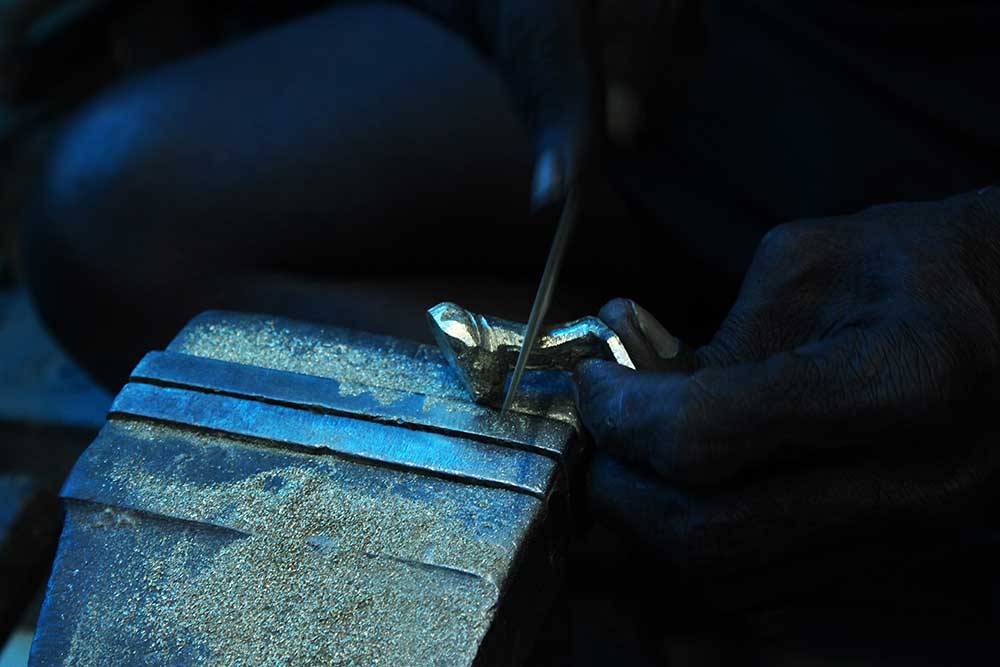
Firing the casted brass artifact.
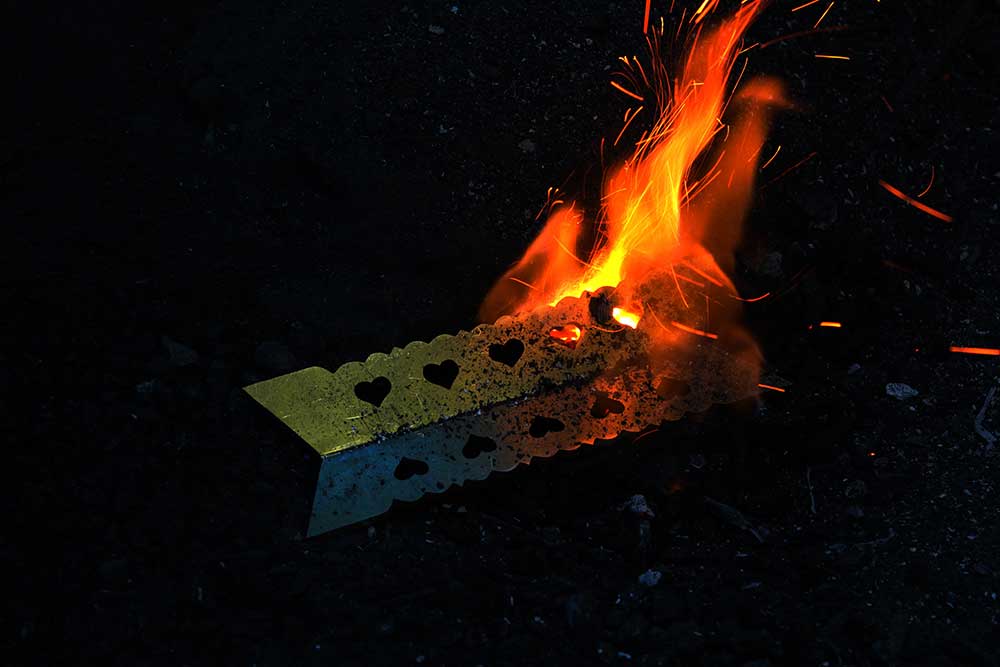
Firing the casted brass artifact.
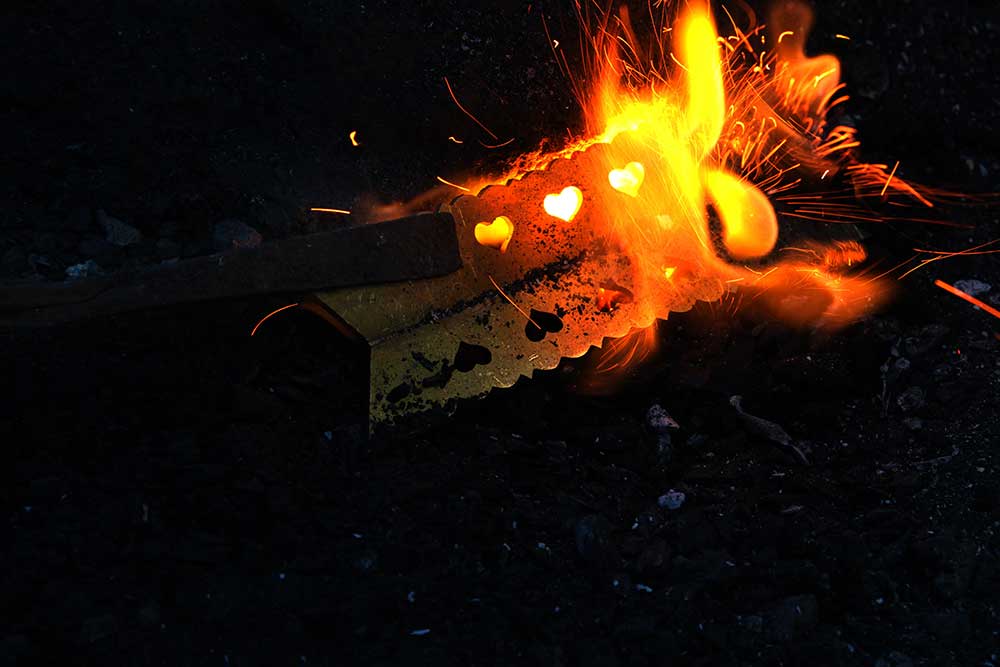
The fired brass artifact.
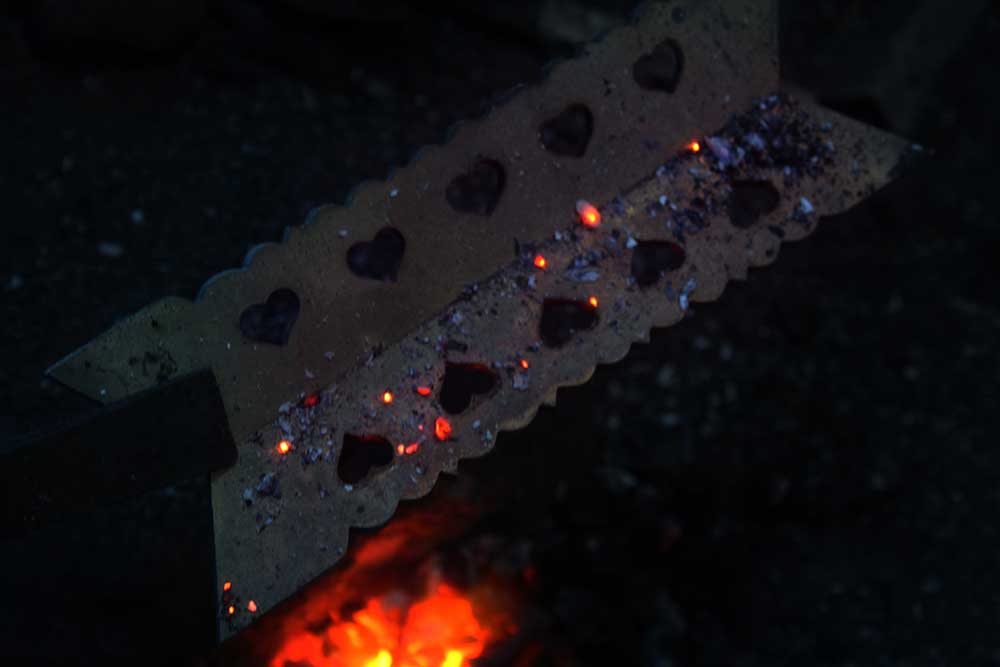
The fired brass artifact.
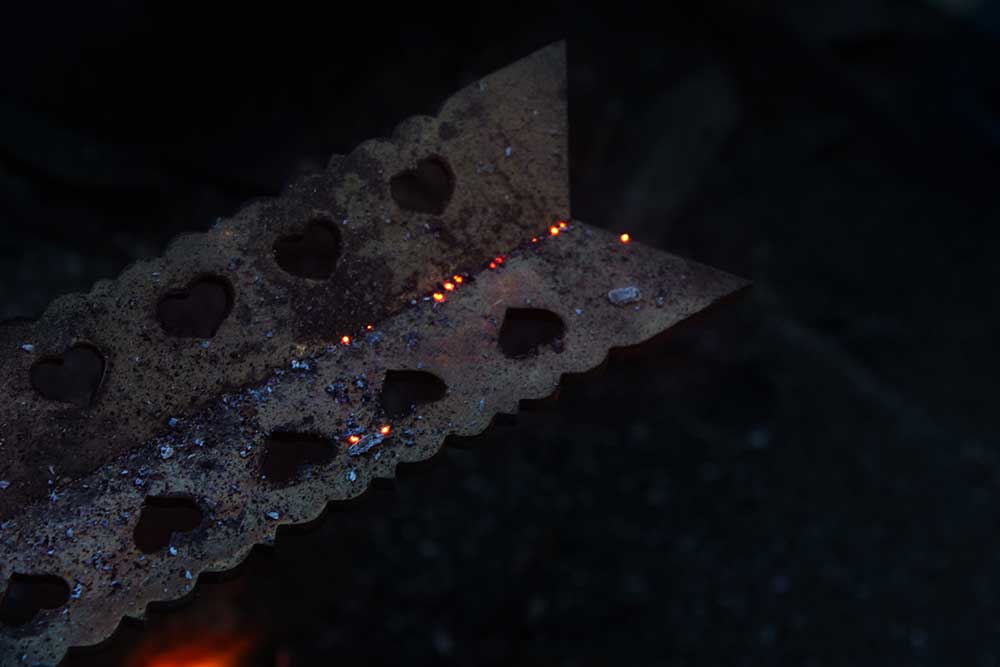
The fired brass artifact.
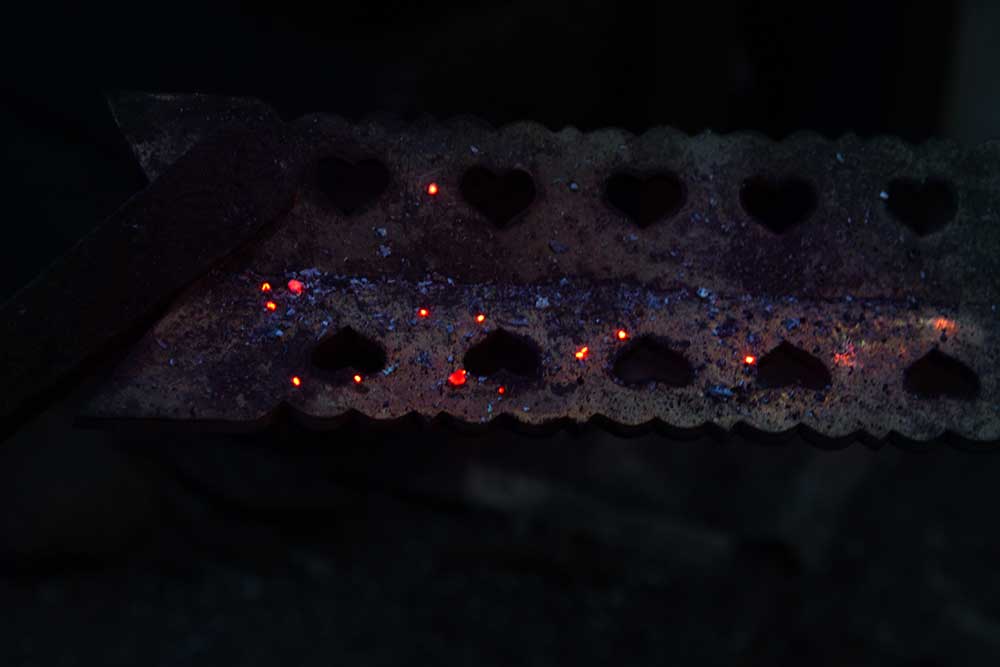
The fired brass artifact.
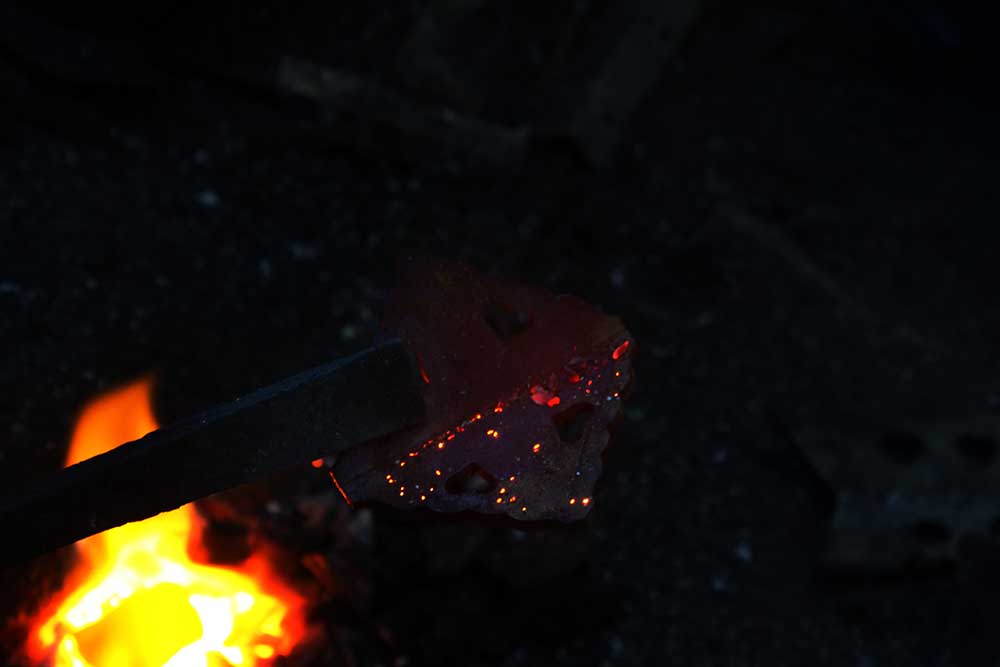
Artisan checking the fitting of artifacts.
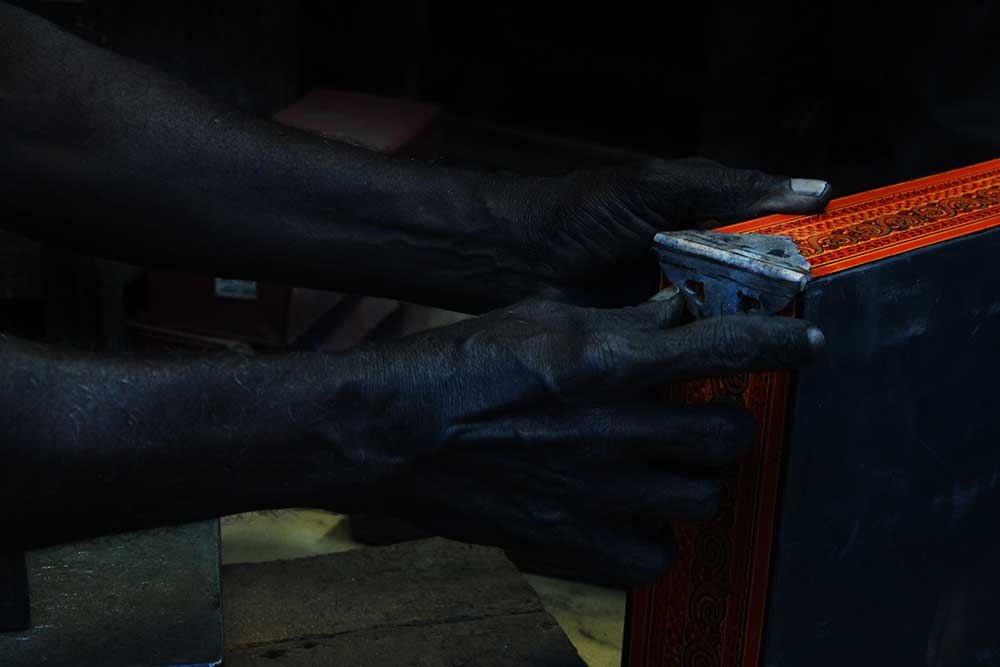
Artisan rectifying the defects.
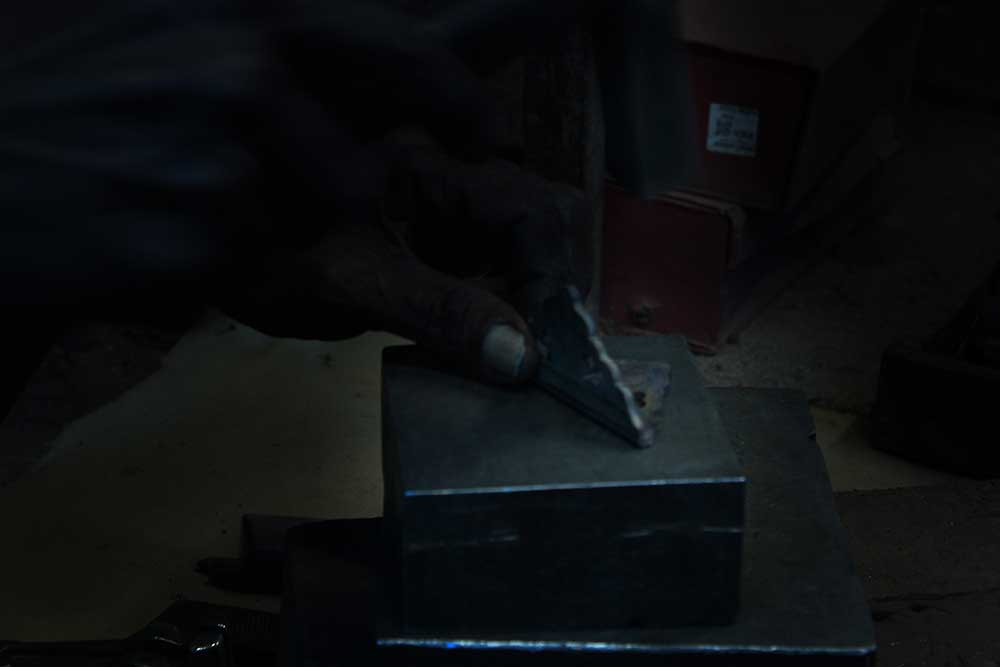
Casted brass artifact.
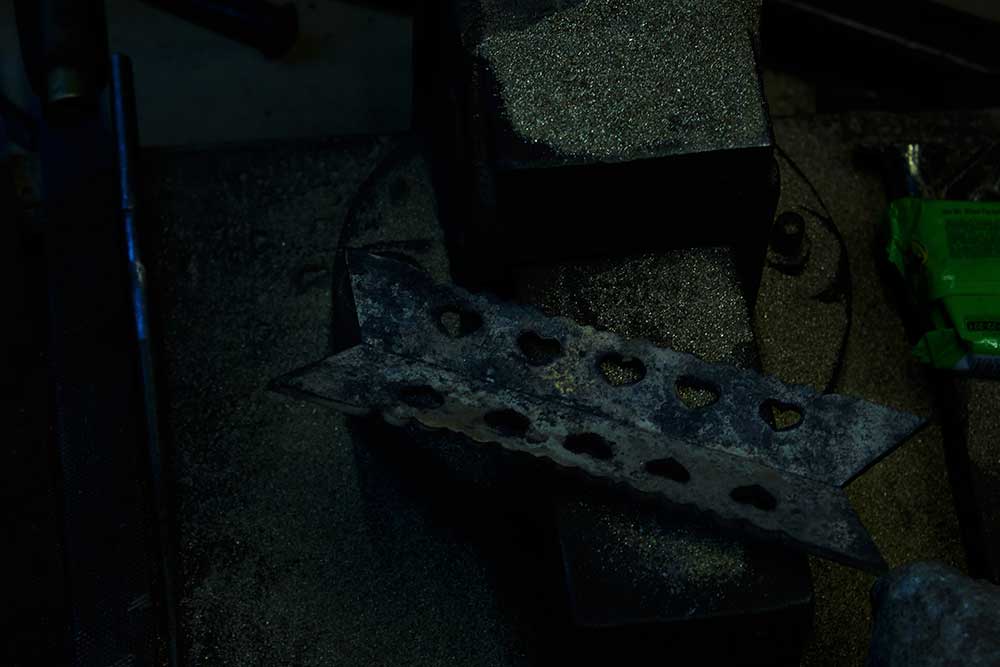
Artisan engaged in filing and finishing of Pulikkal or Tiger leg.
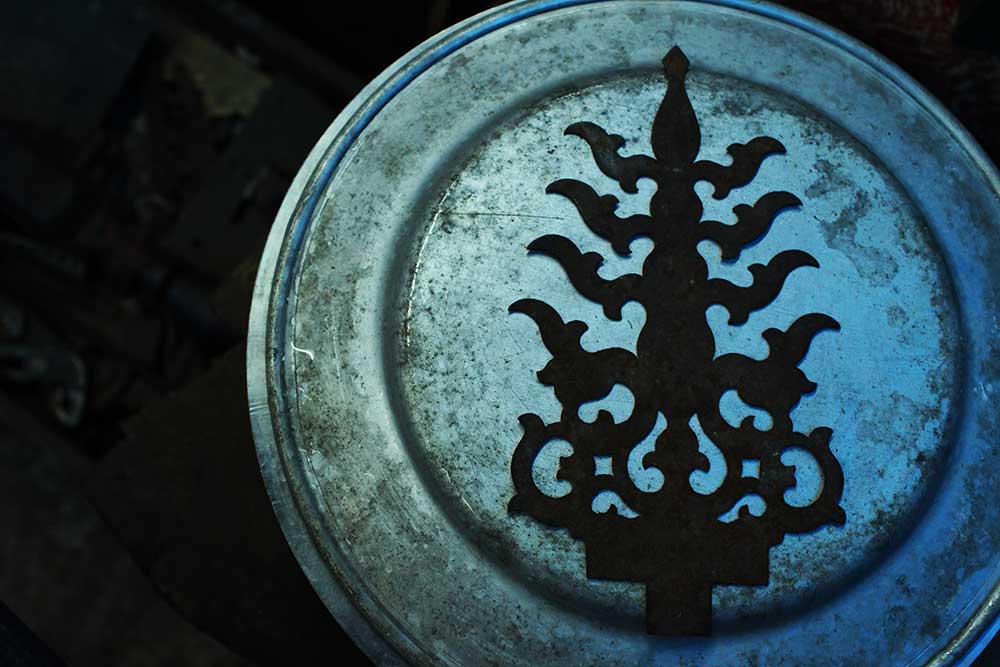
Stencil of brass artifact.

Brass casted artifact.
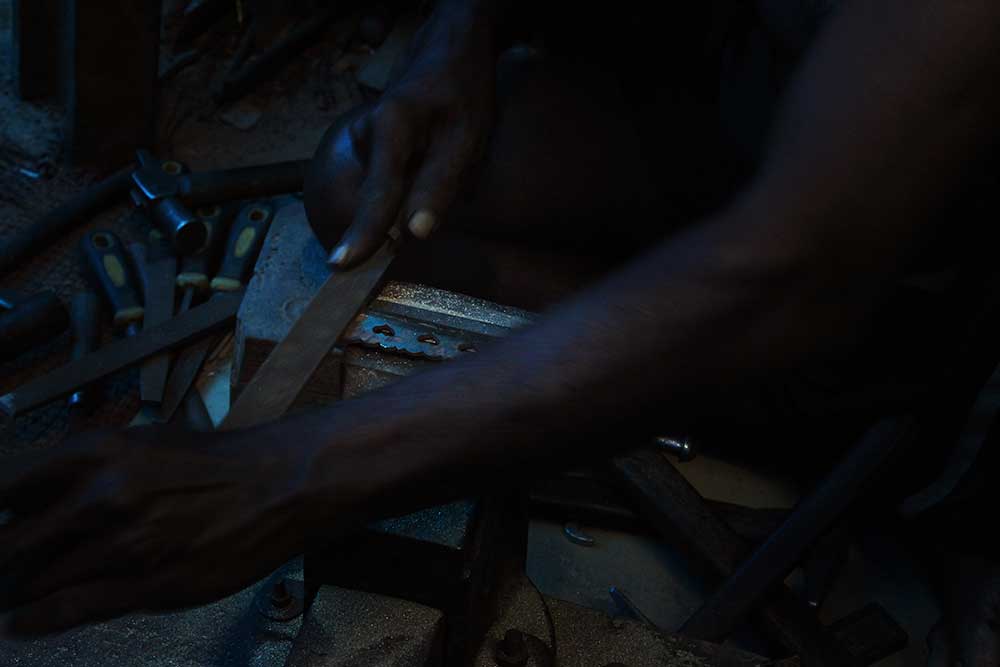
Artisan engaged in filing.
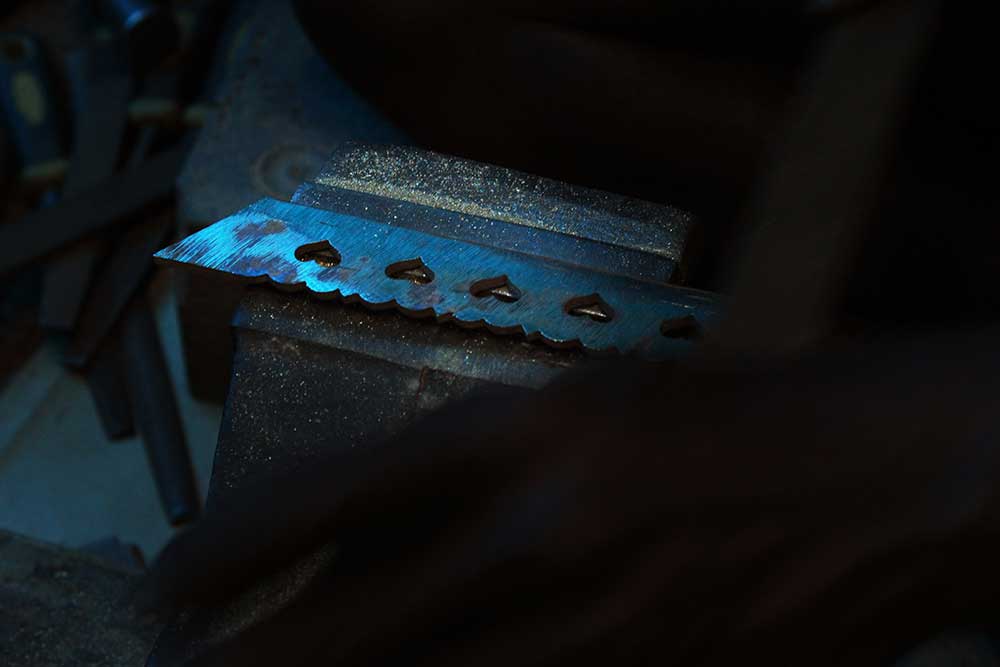
The process of filing.
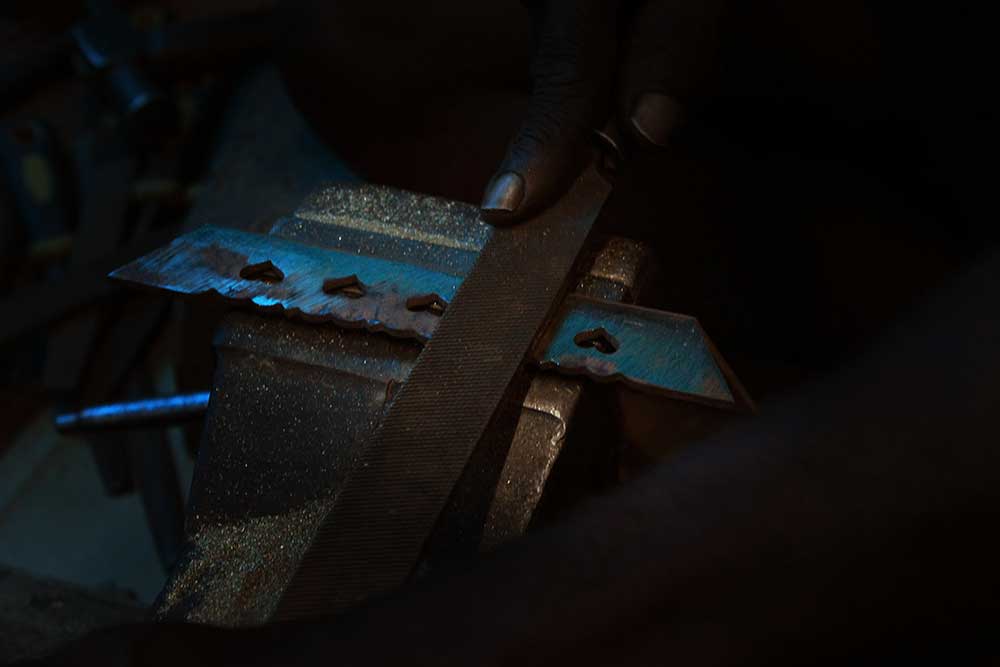
Artisan engaged in filing.
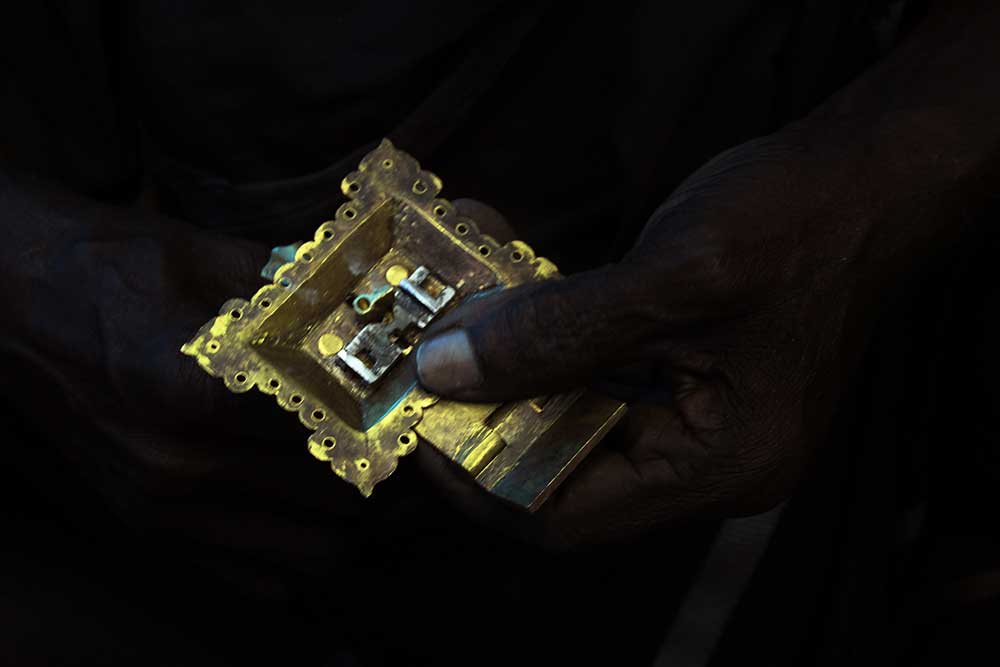
Artisan engaged in checking the functioning of lock system.
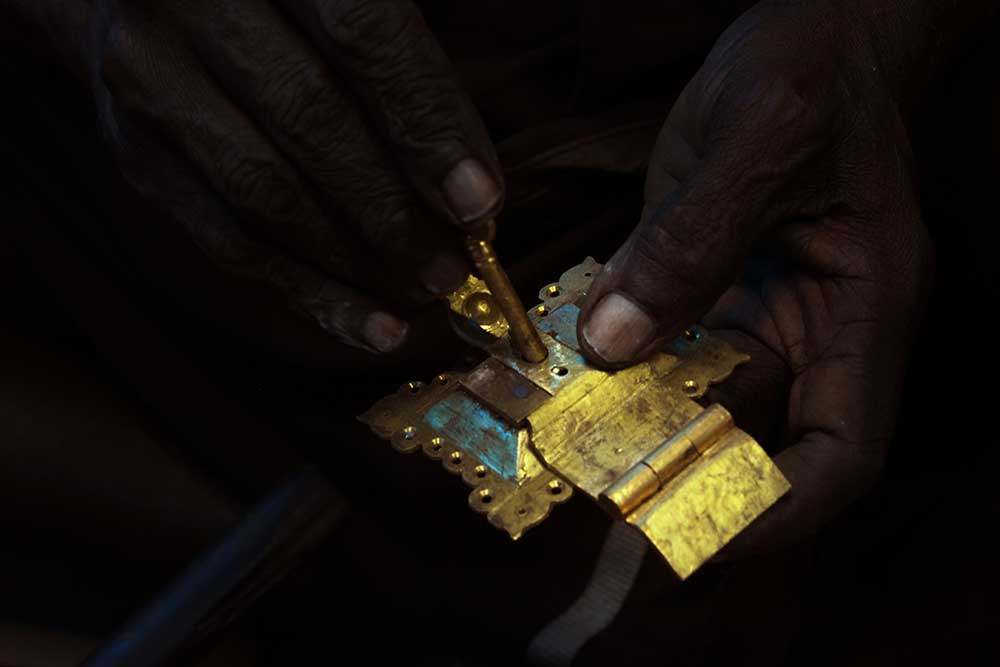
Artisan engaged in checking the functioning of lock system.
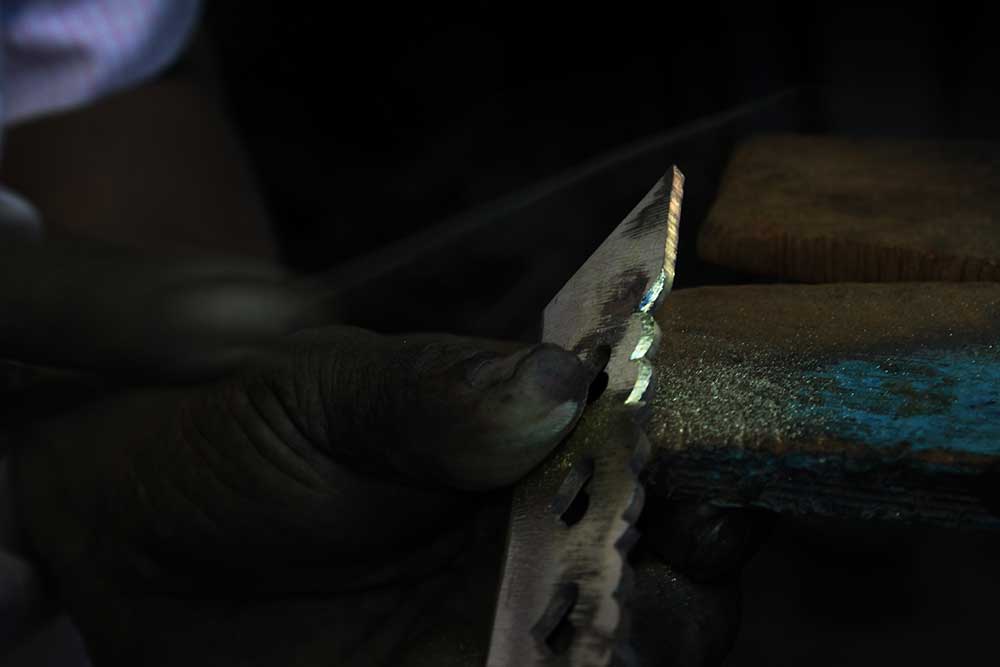
The process of filing.
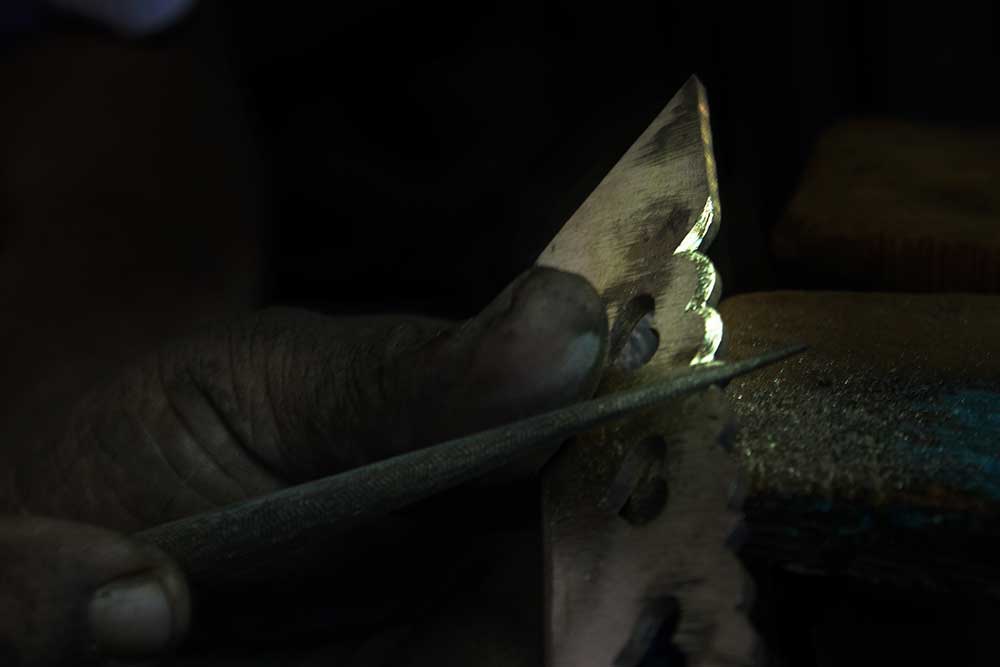
The process of filing.
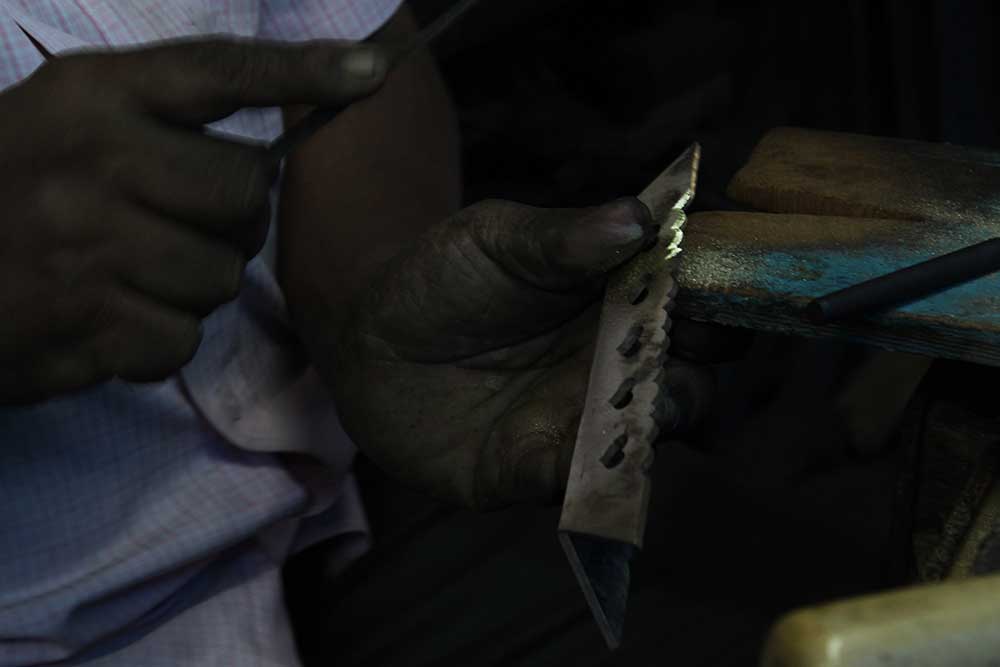
The process of filing.
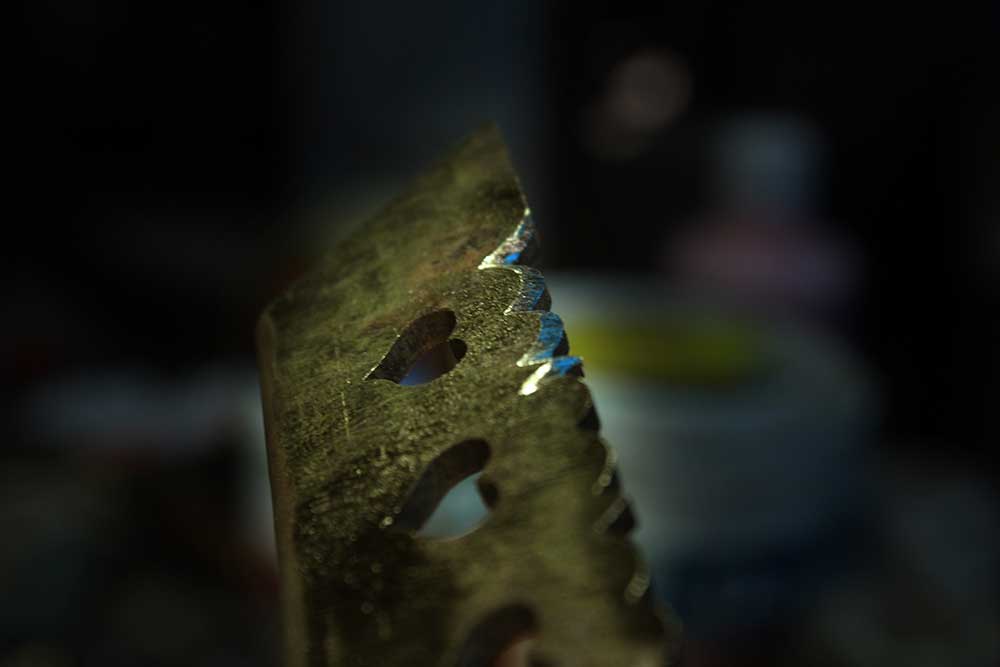
Close up view of filed edges of brass artifact.
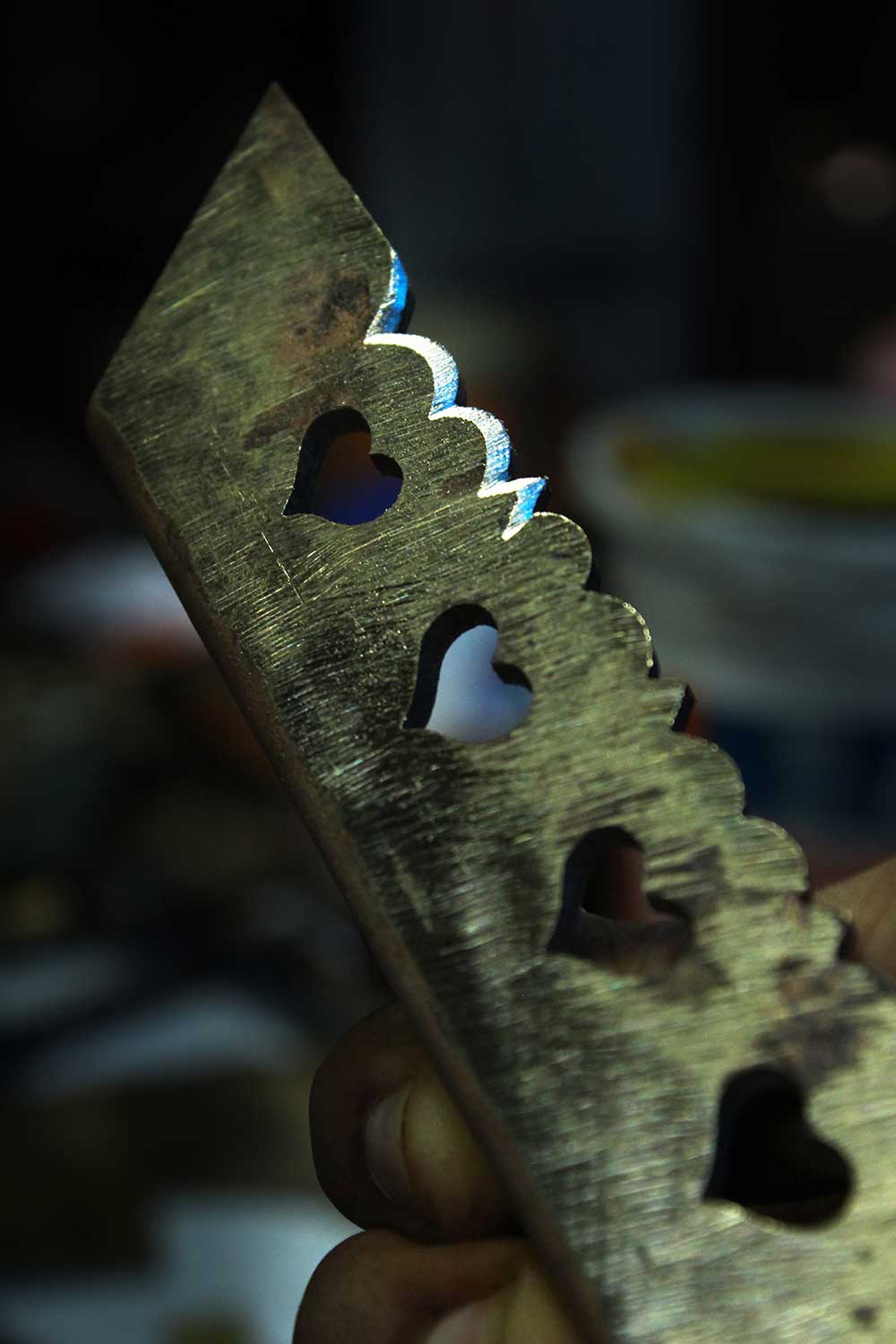
Close up view of filed edges of brass artifact.
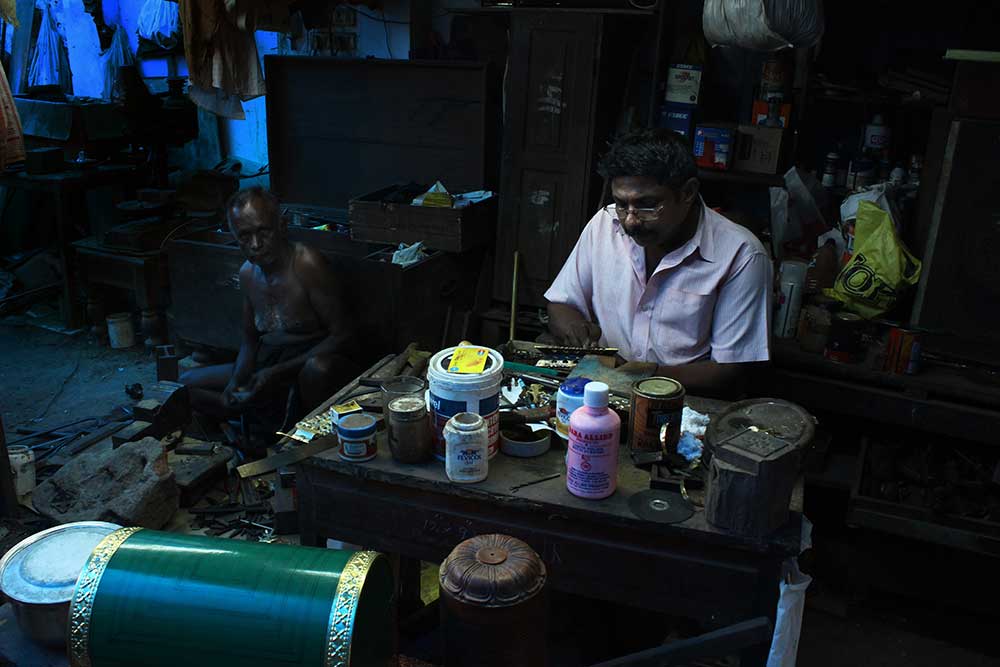
Artisans engaged in filing process.
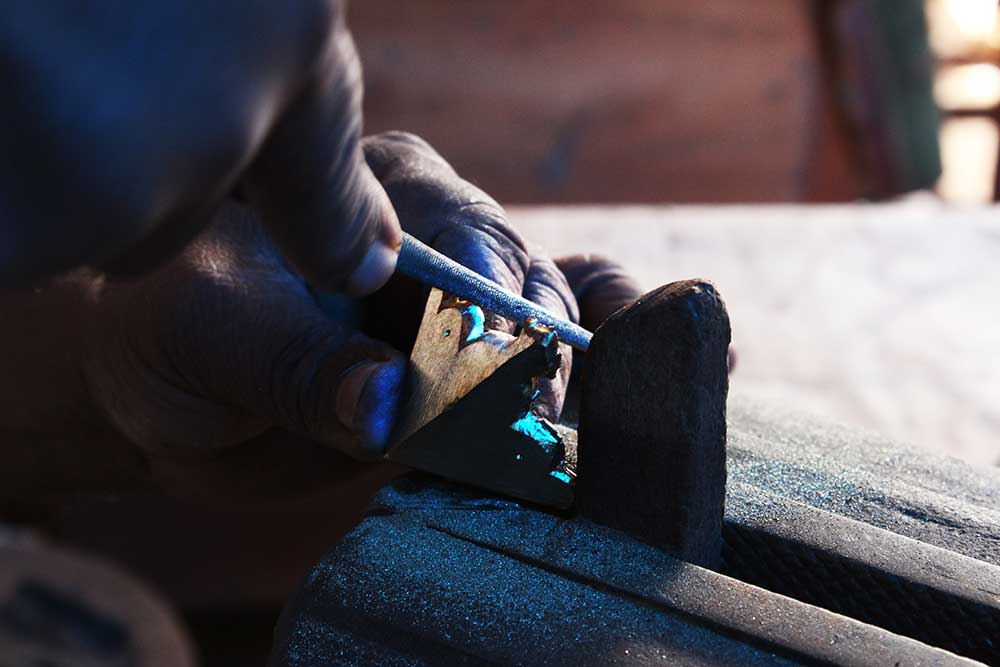
The process of filing.
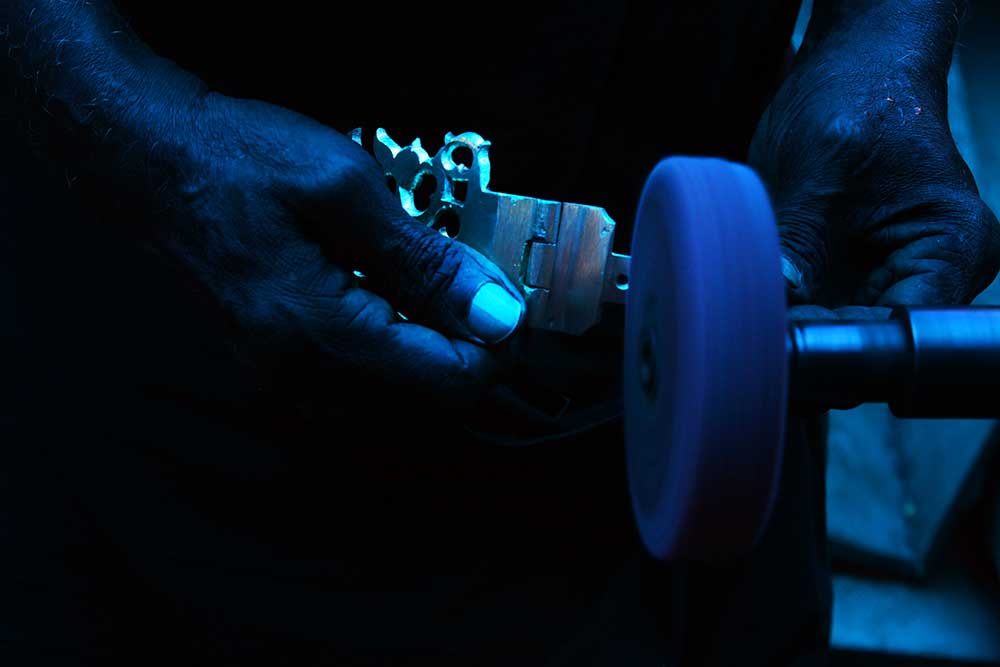
The process of polishing.
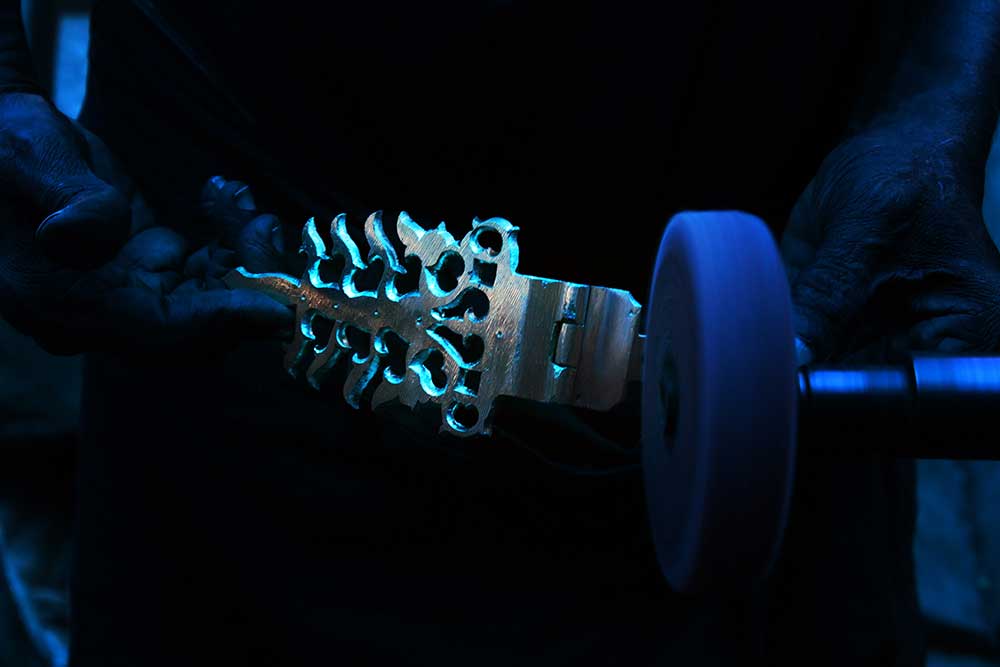
The process of polishing.
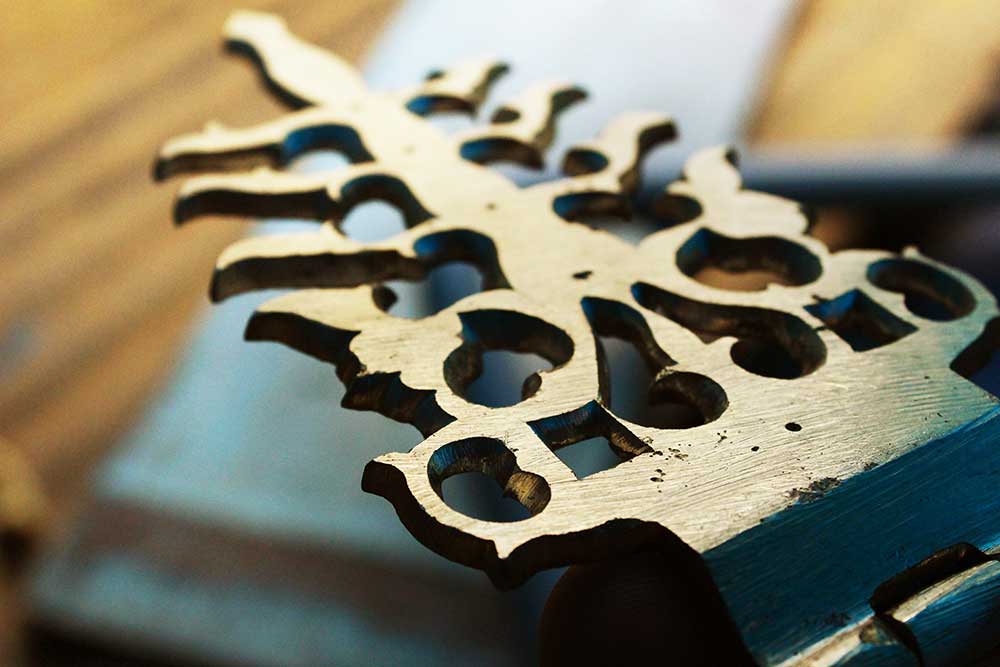
Polished brass artifact.
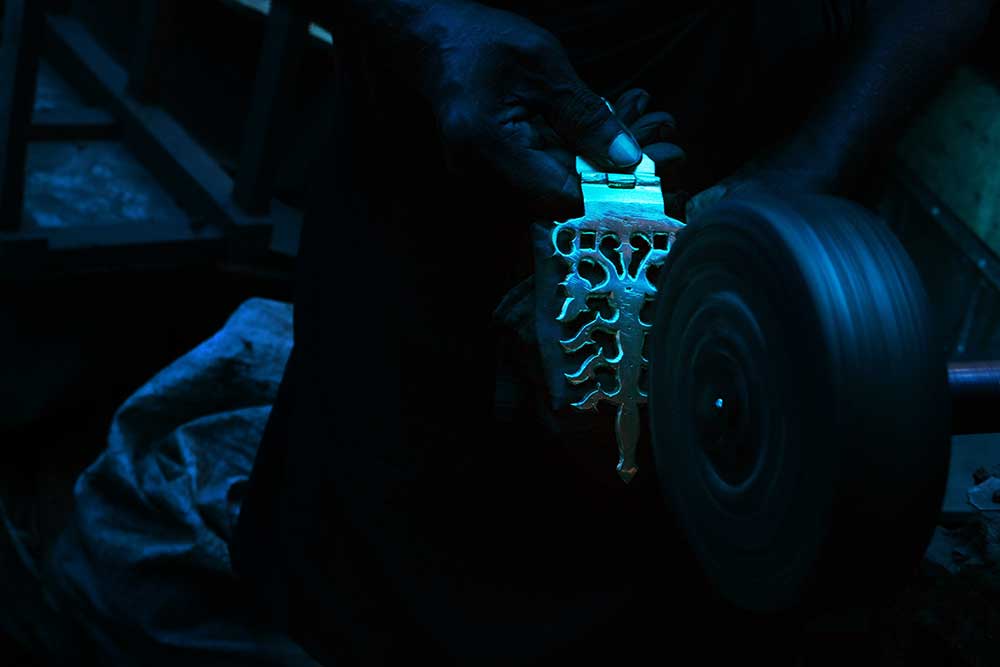
Process of buffing.
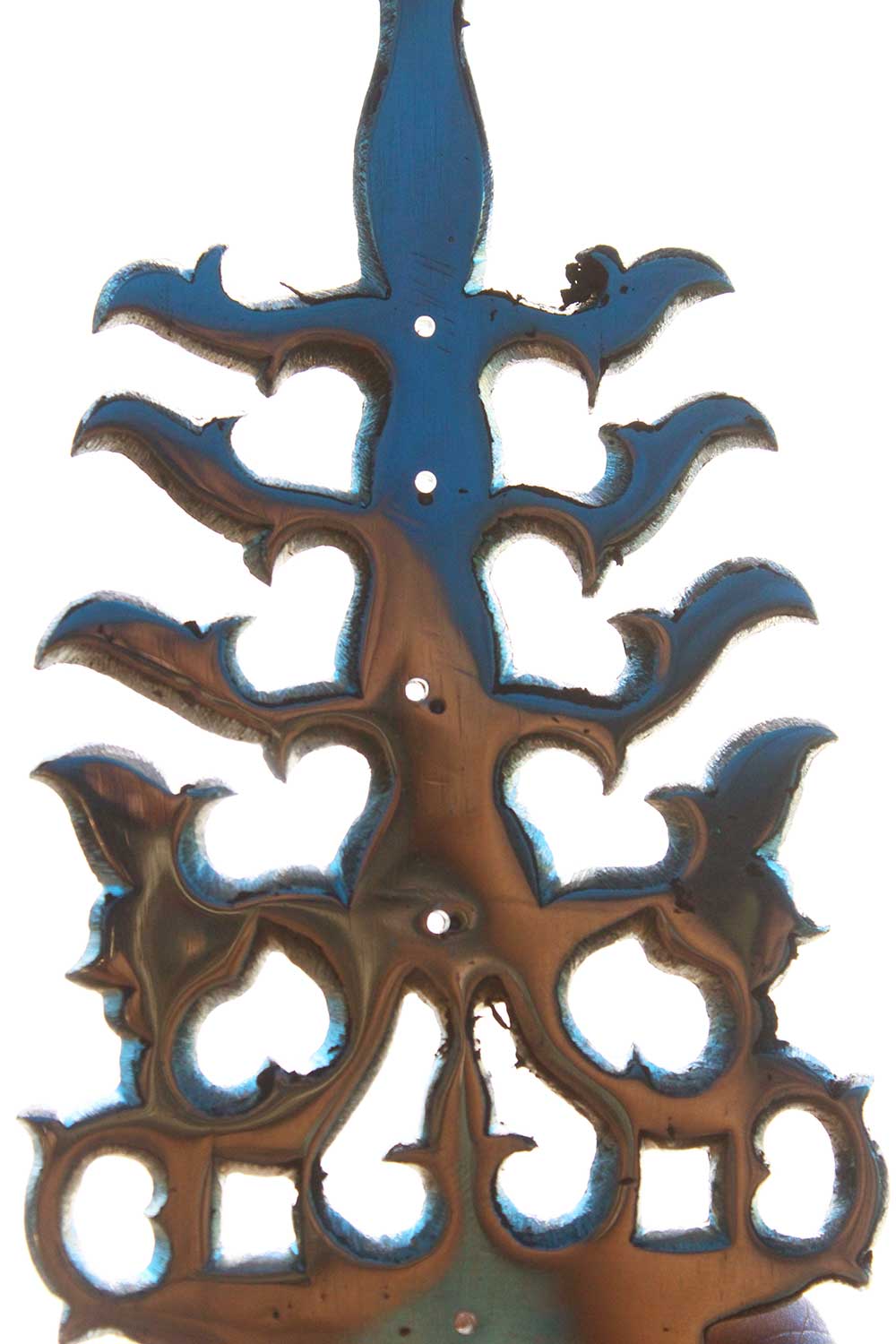
Process of buffing.
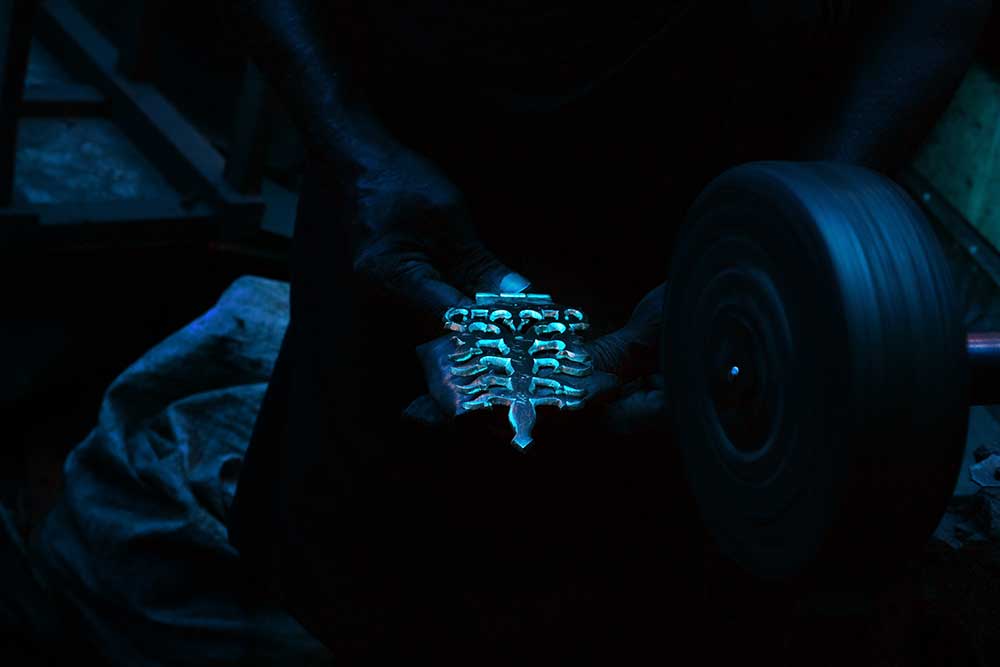
Buffed brass artifact.
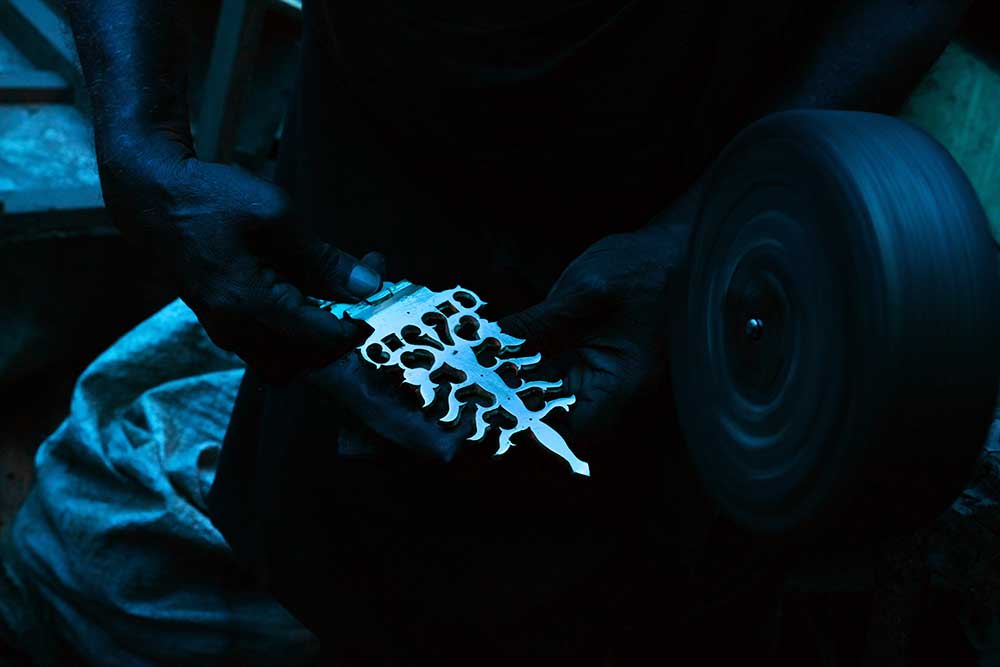
Process of buffing.
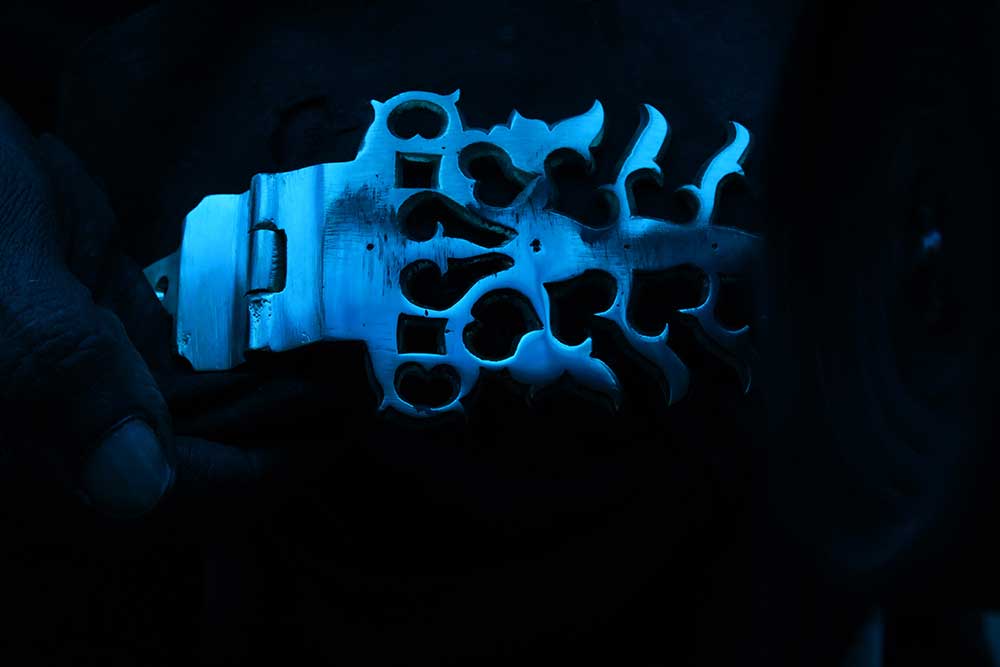
Process of buffing.
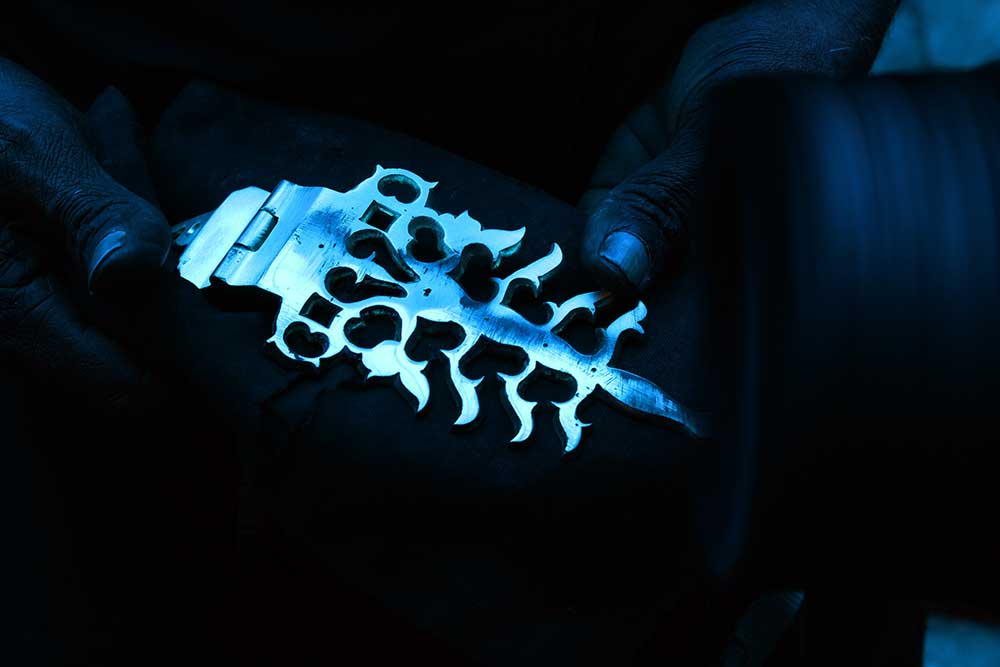
Buffed brass artifact.
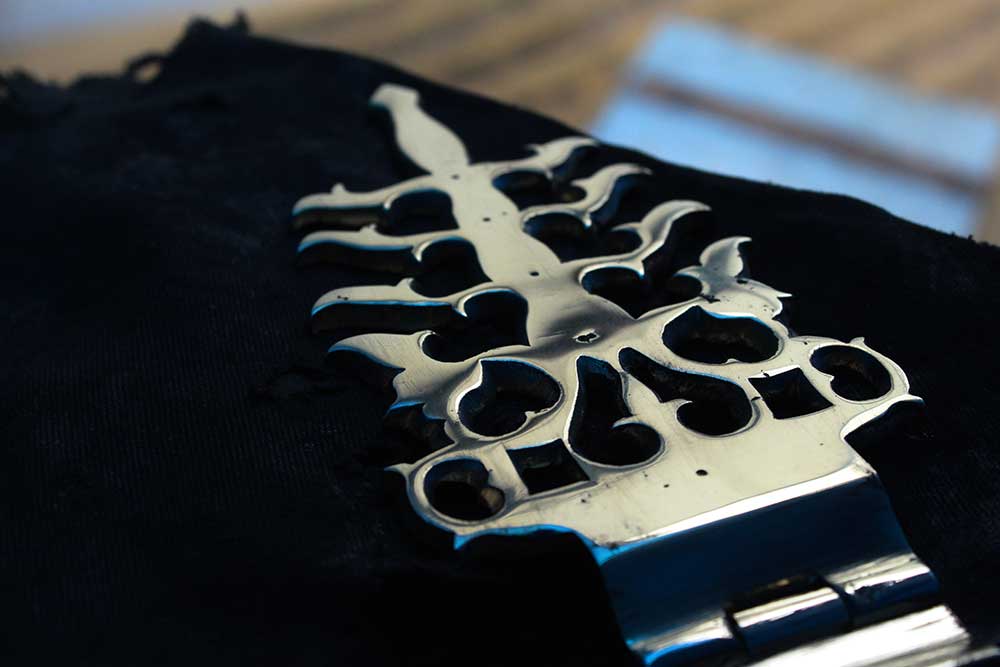
Drilling the brass artifact.
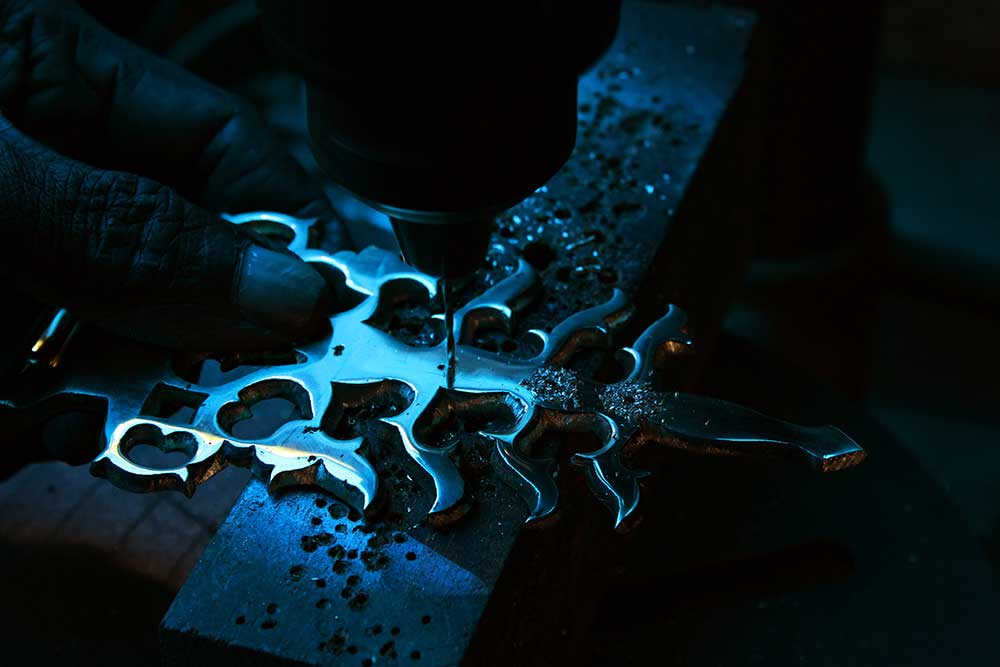
Drilling the brass artifact.
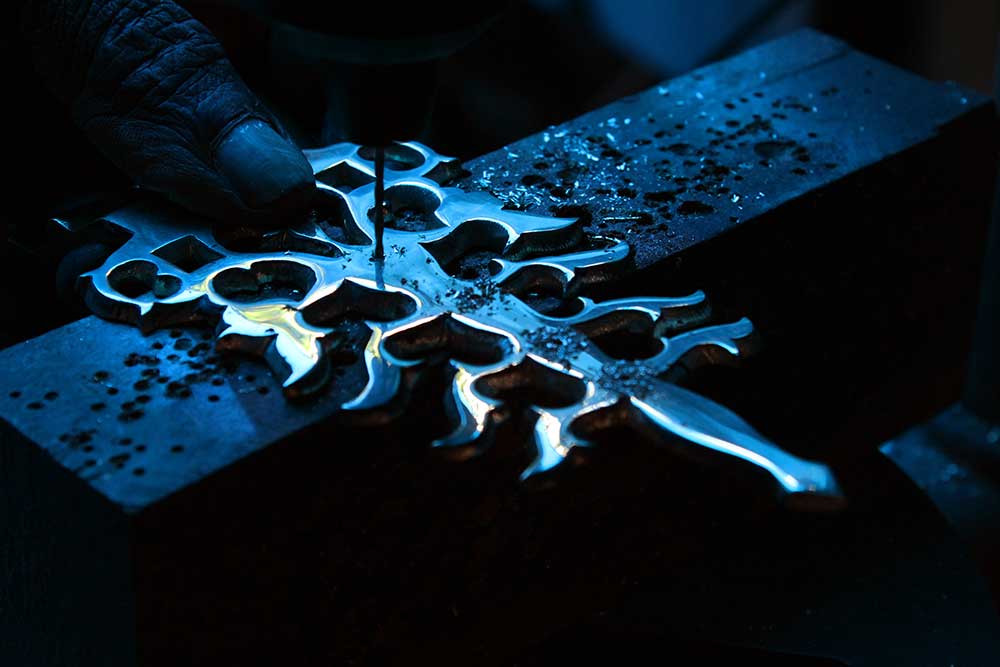
Drilling the brass artifact.
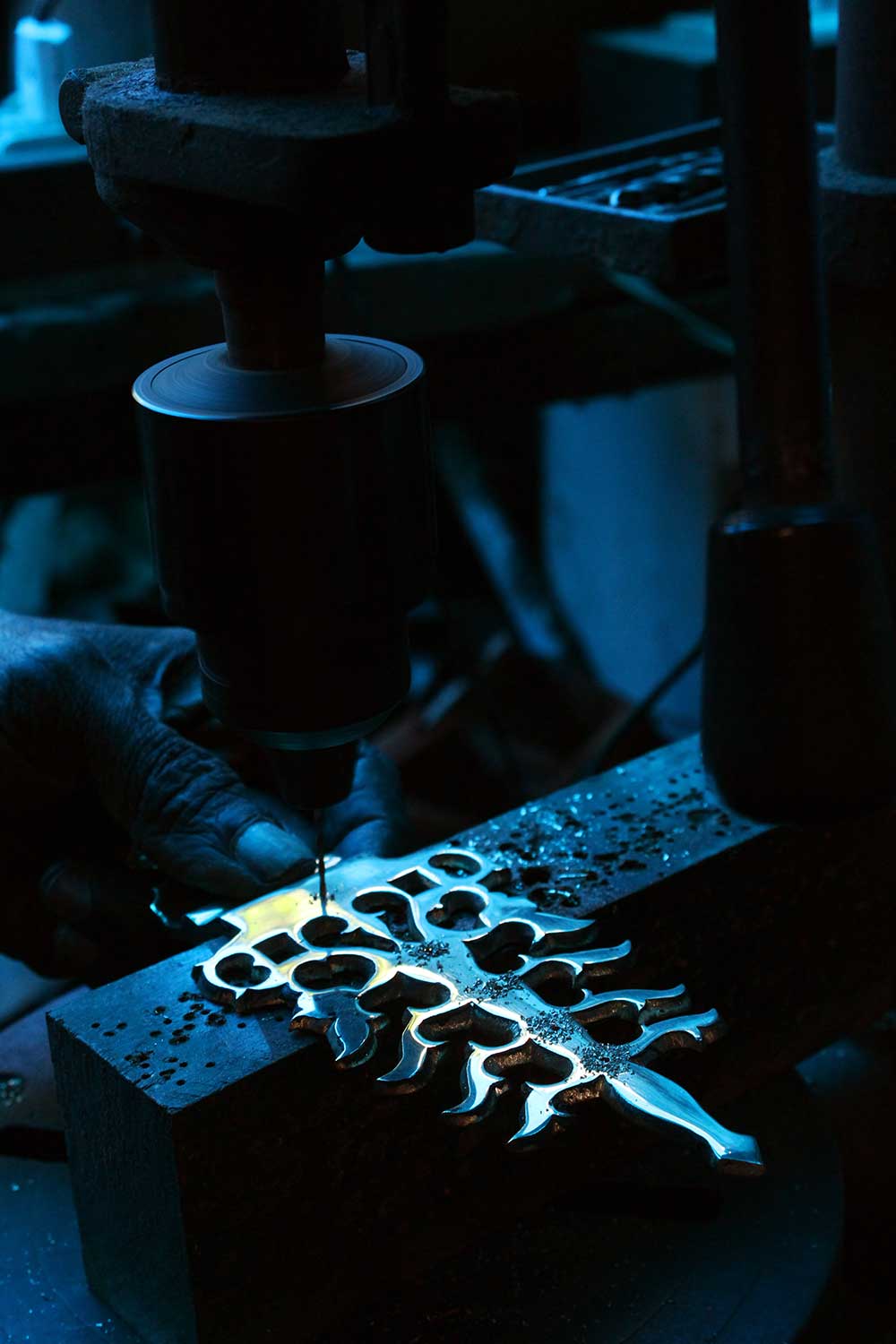
Close up view of finished brass artifact.
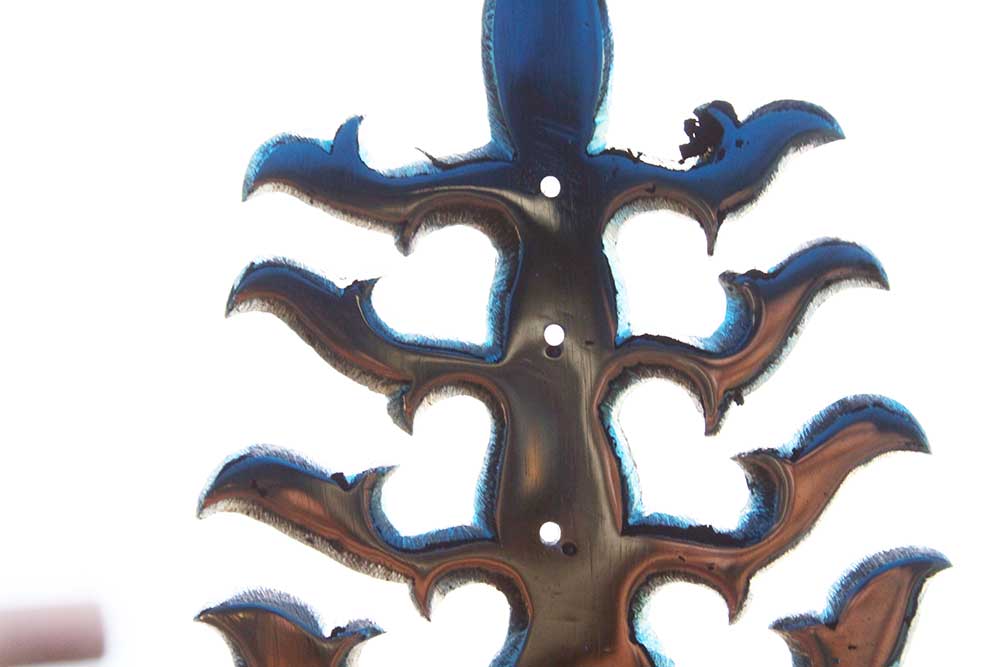
Close up view of finished brass artifact.
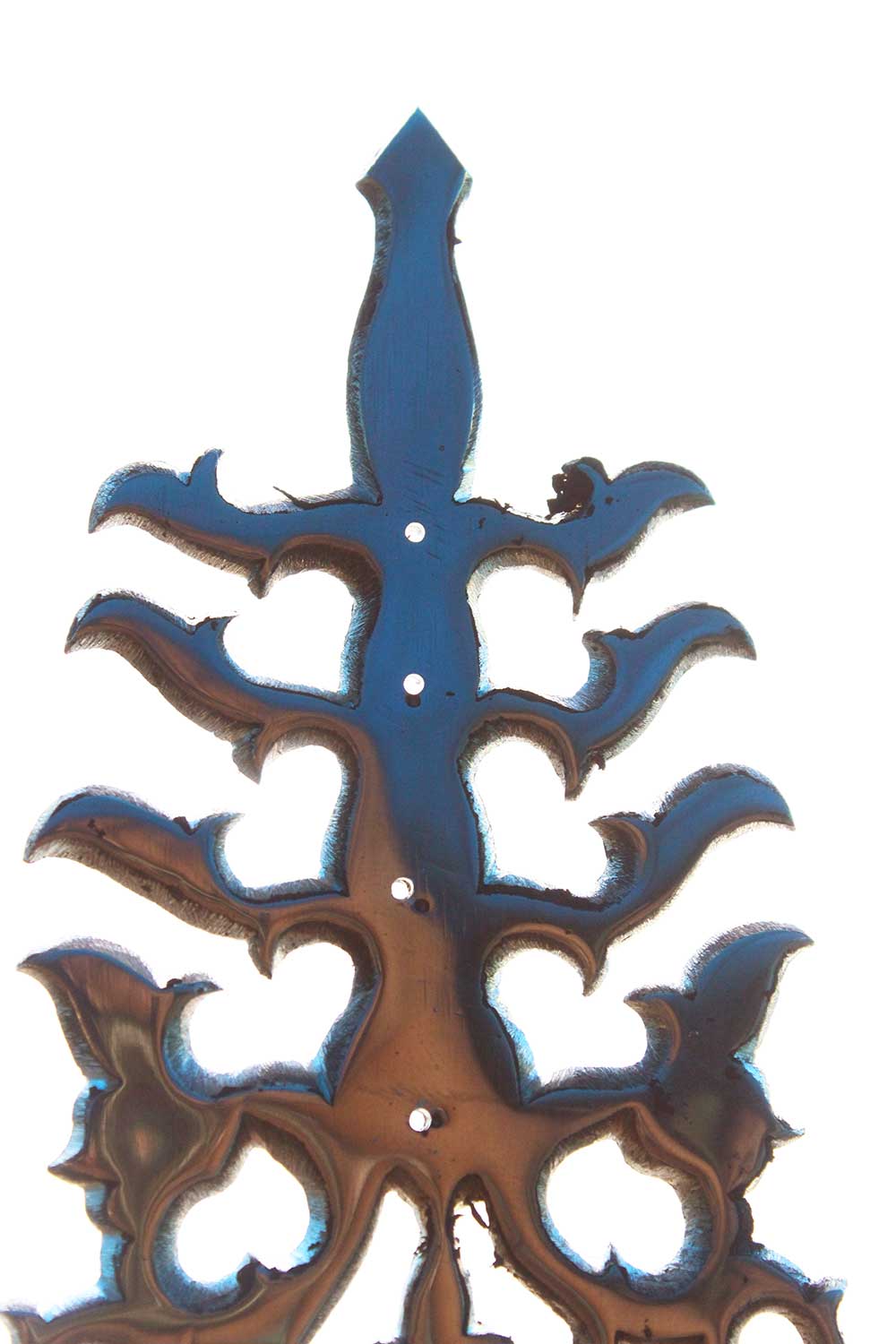
Close up view of finished brass artifact.
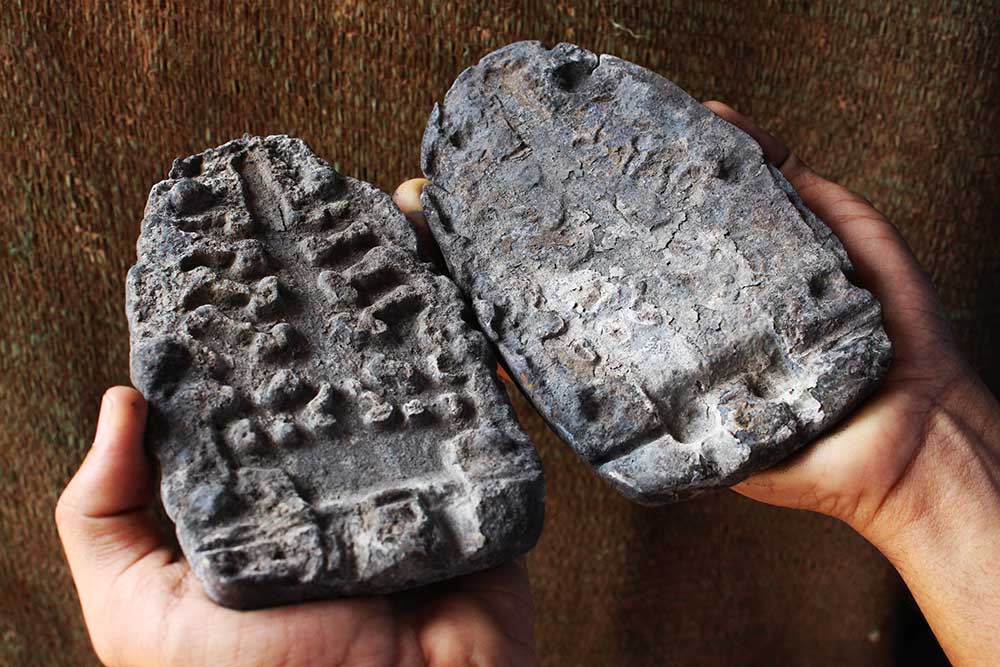
Die used for making brass artifact.

Die and casted brass artifact.
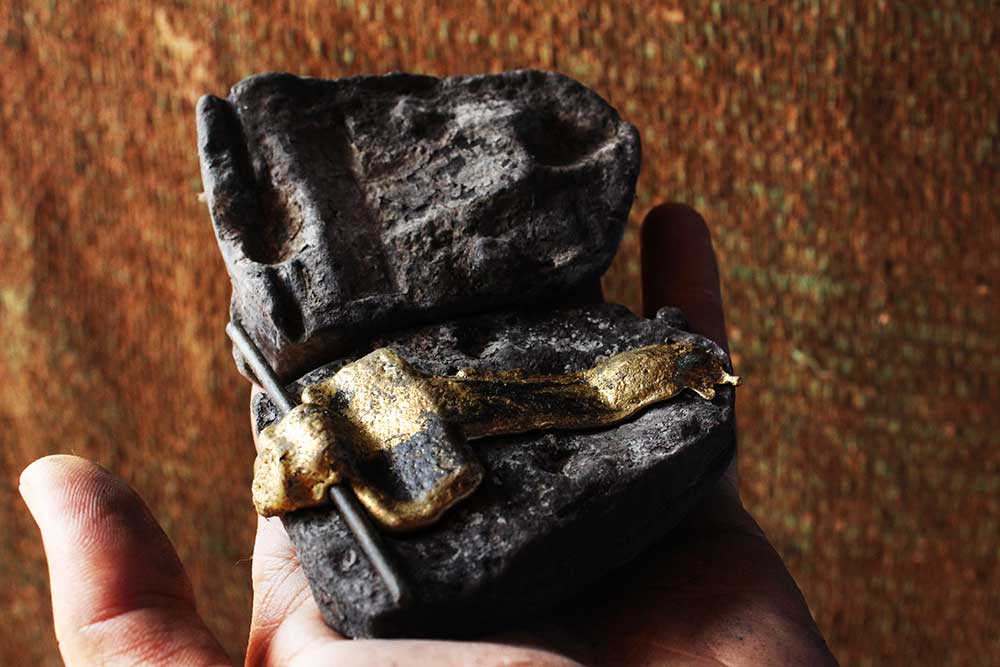
Die and casted brass handle.
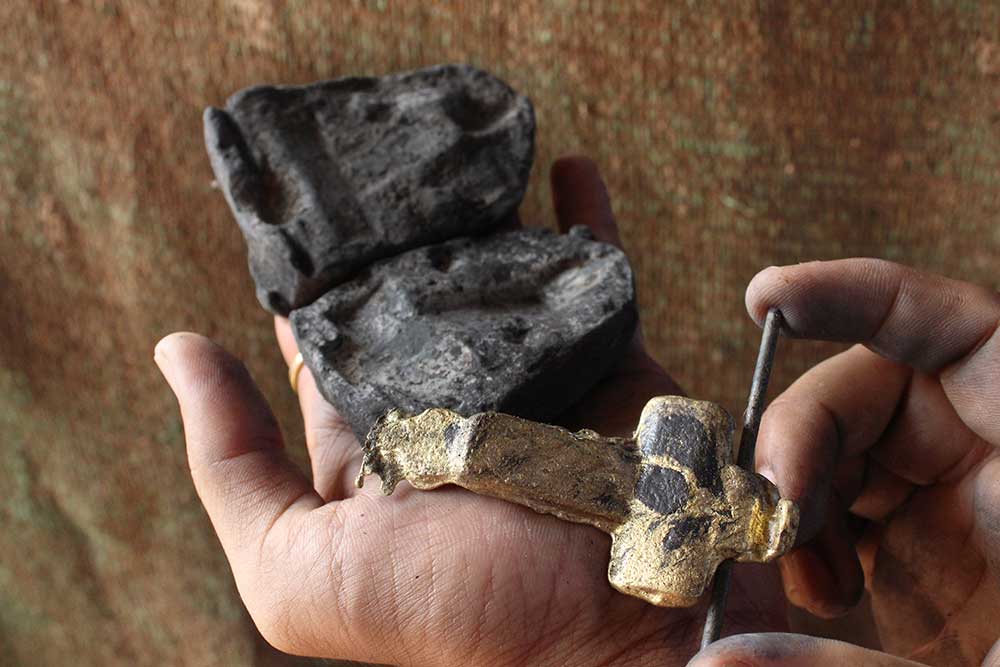
Die and brass casted handle.
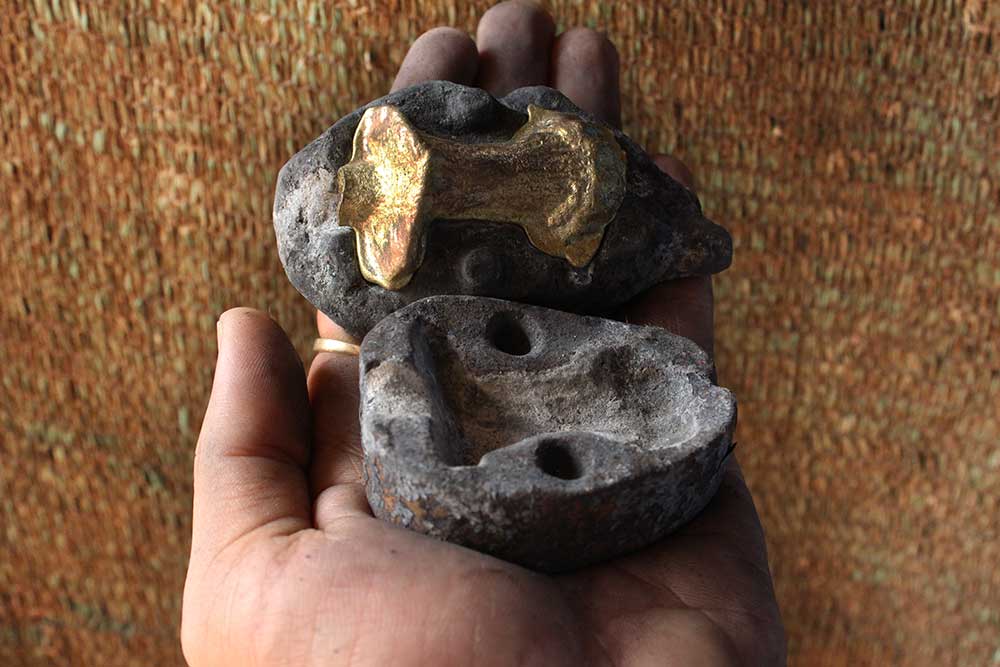
Die and brass casted tiger led.
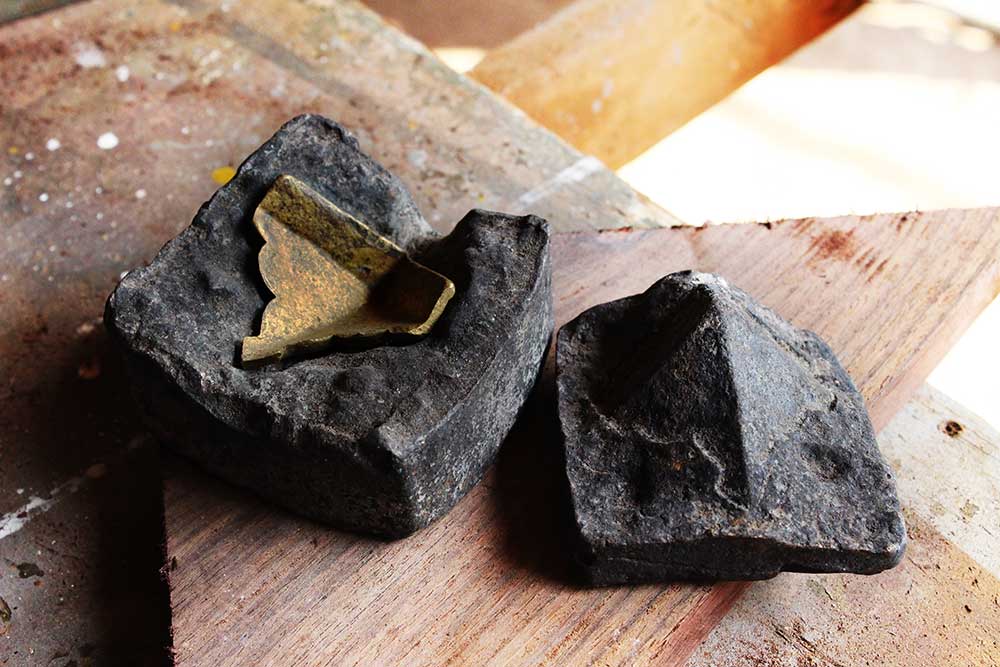
Die and brass casted artifact.
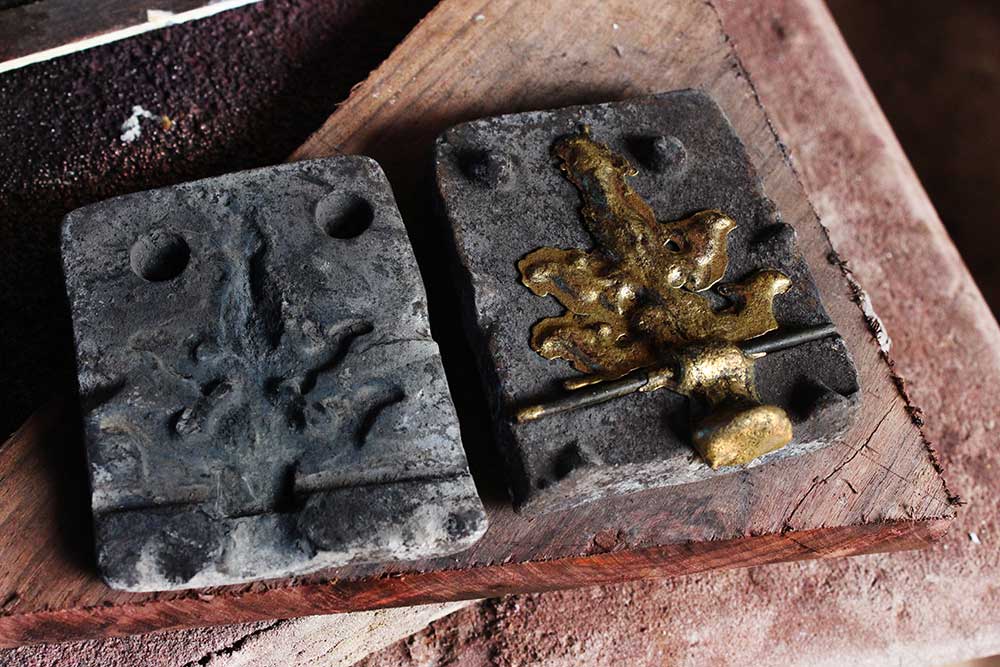
Die and brass casted artifact.
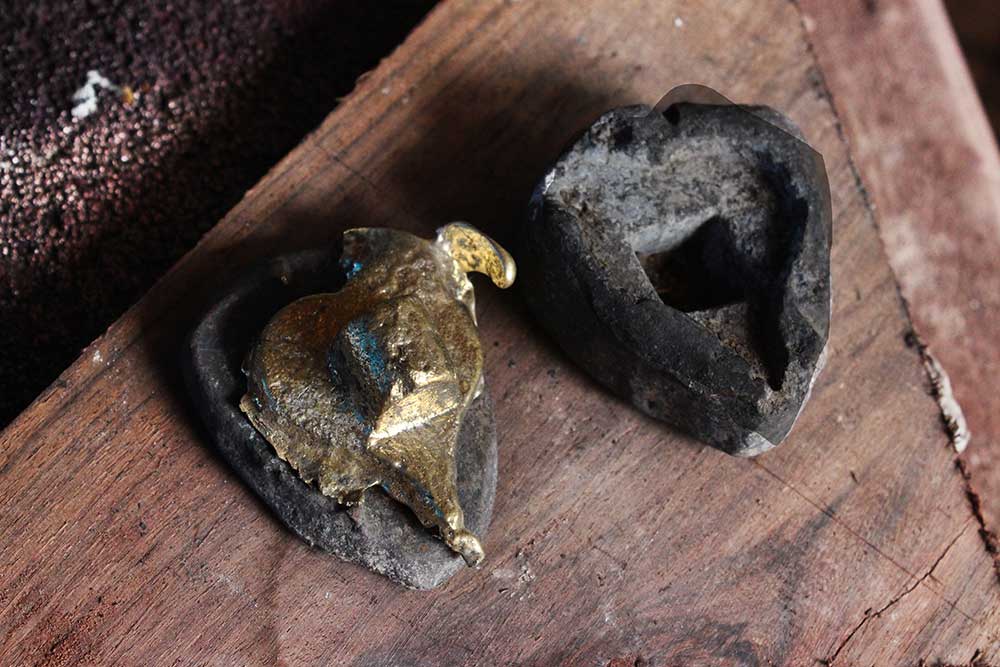
Die and brass casted artifact.
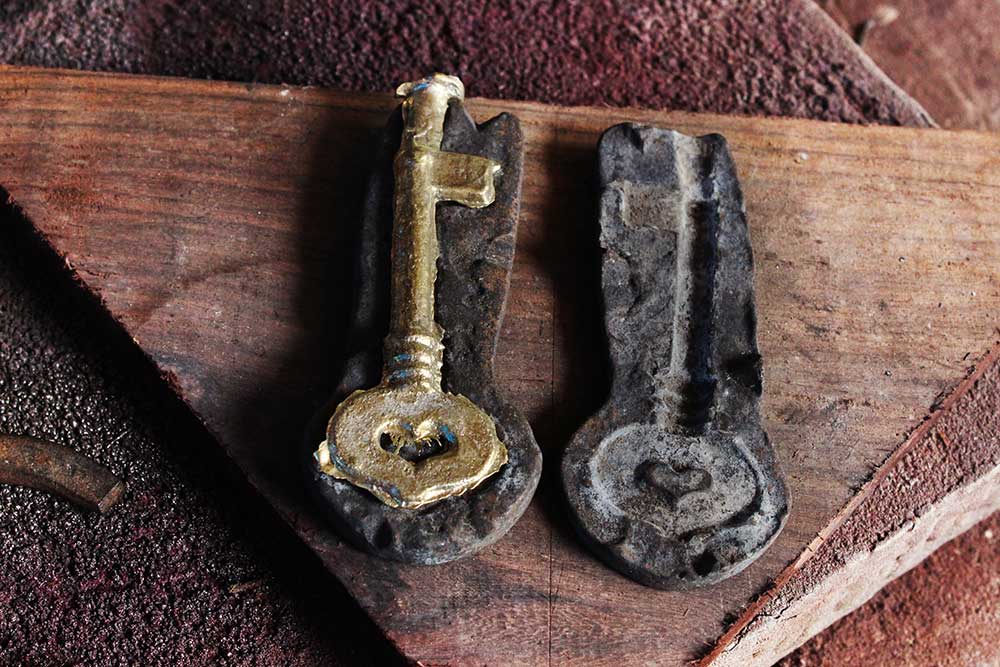
Die and brass casted key.
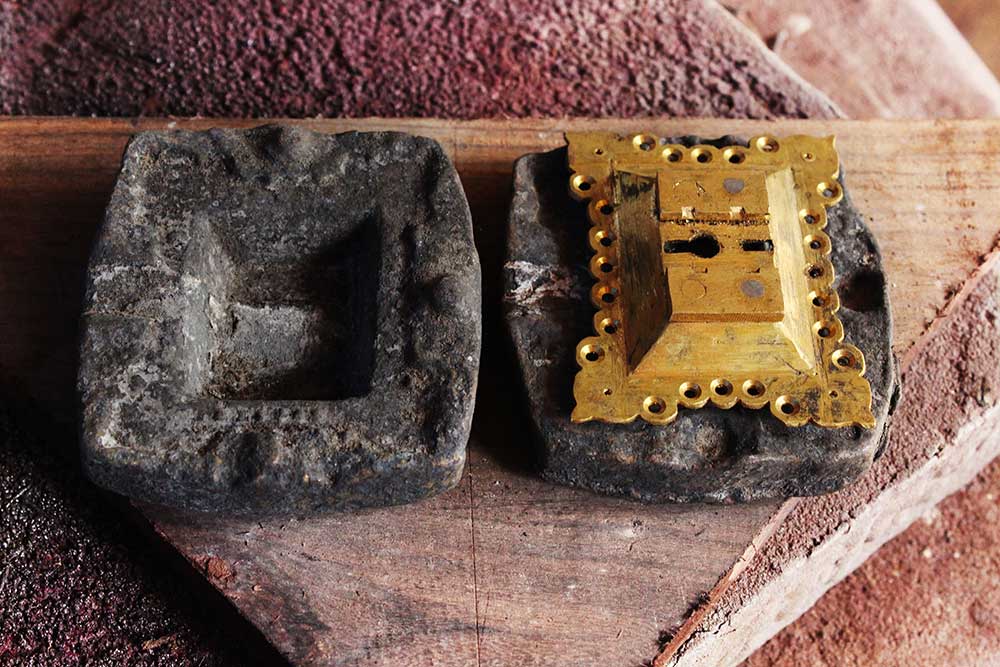
Die and brass casted lock.
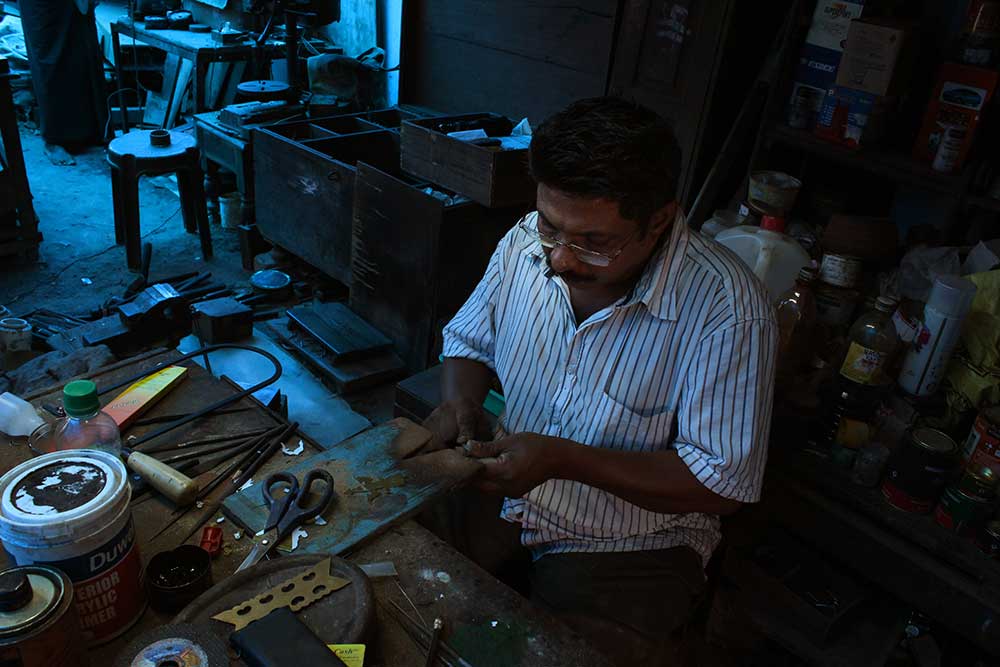
Artisan engaged in filing.
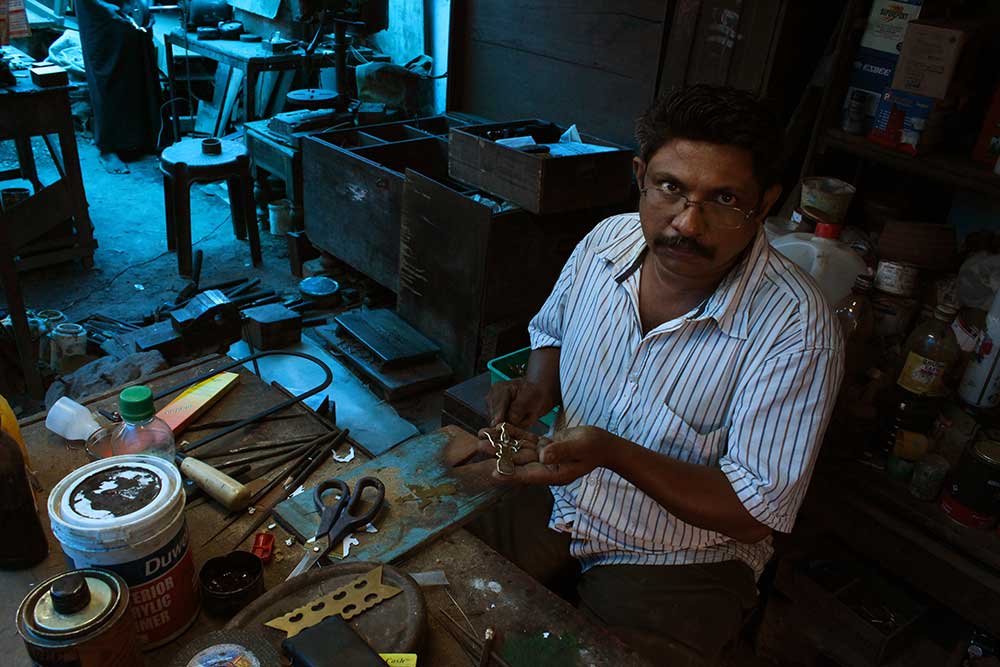
Artisan with flied artifact.
Kodayani is a handmade nail used for fixing the brass motifs on Nettur petti which has aesthetical as well as functional qualities. ‘Kuda’ in Malayalam means umbrella and ‘ani’ means nails, so the name suggests the shape of nail. The umbrella part of the nail is done by pressing a brass piece. A small piece of brass is placed inside the die and hammered once; it obtains a form of semi-hemispherical from and flat from other side. Afterward with the use of a pointed chisel a dimple is made on the flat side. Once it is done a thin nail is hammered on the flat surface of the brass piece using punch tool. Once the nail is made it is buffed and polished.
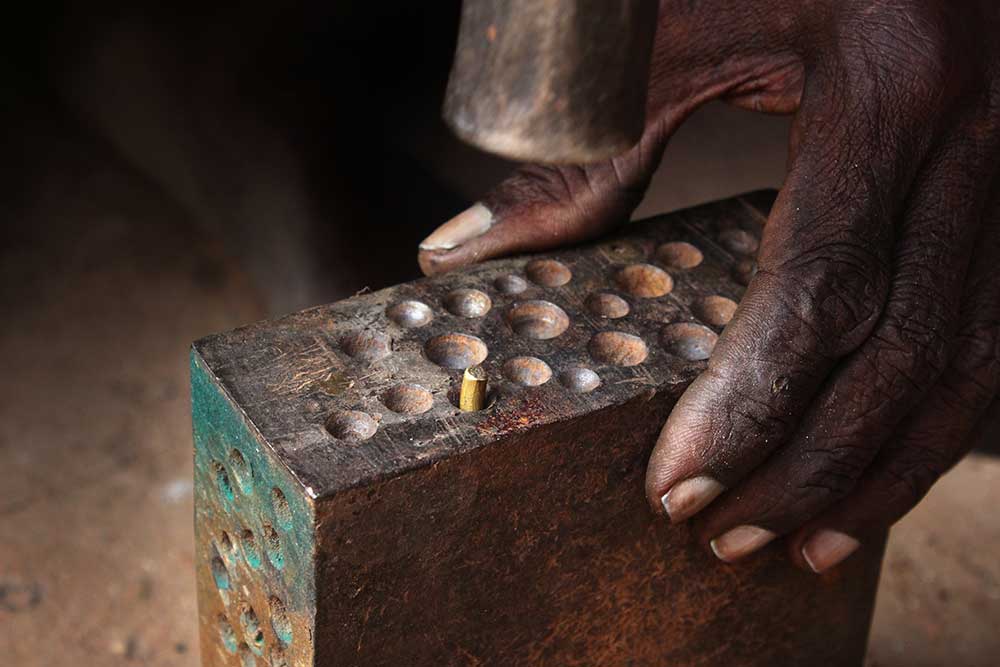
Hammering the piece of brass to make kudayani.
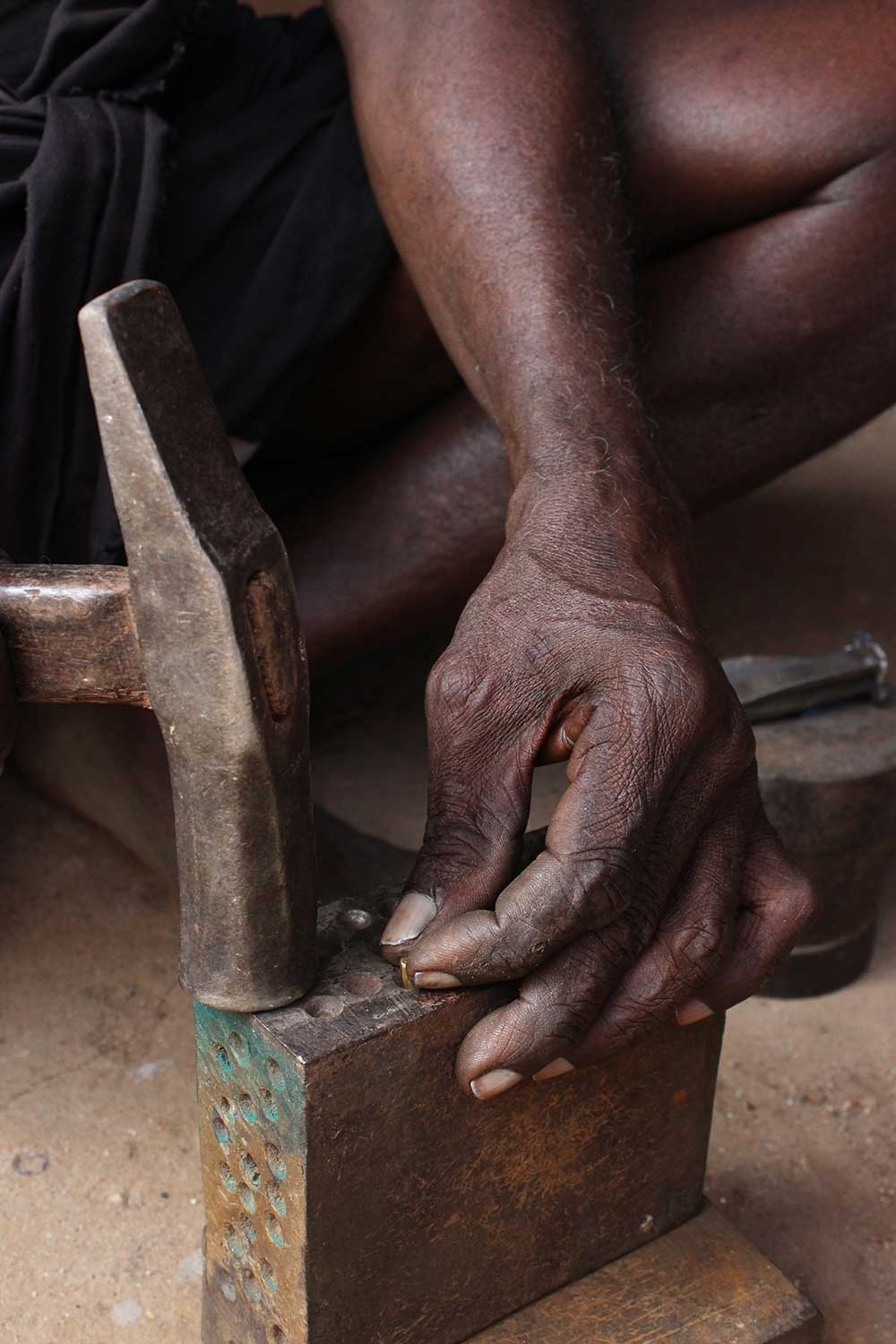
Hammering the piece of brass to make kudayani.
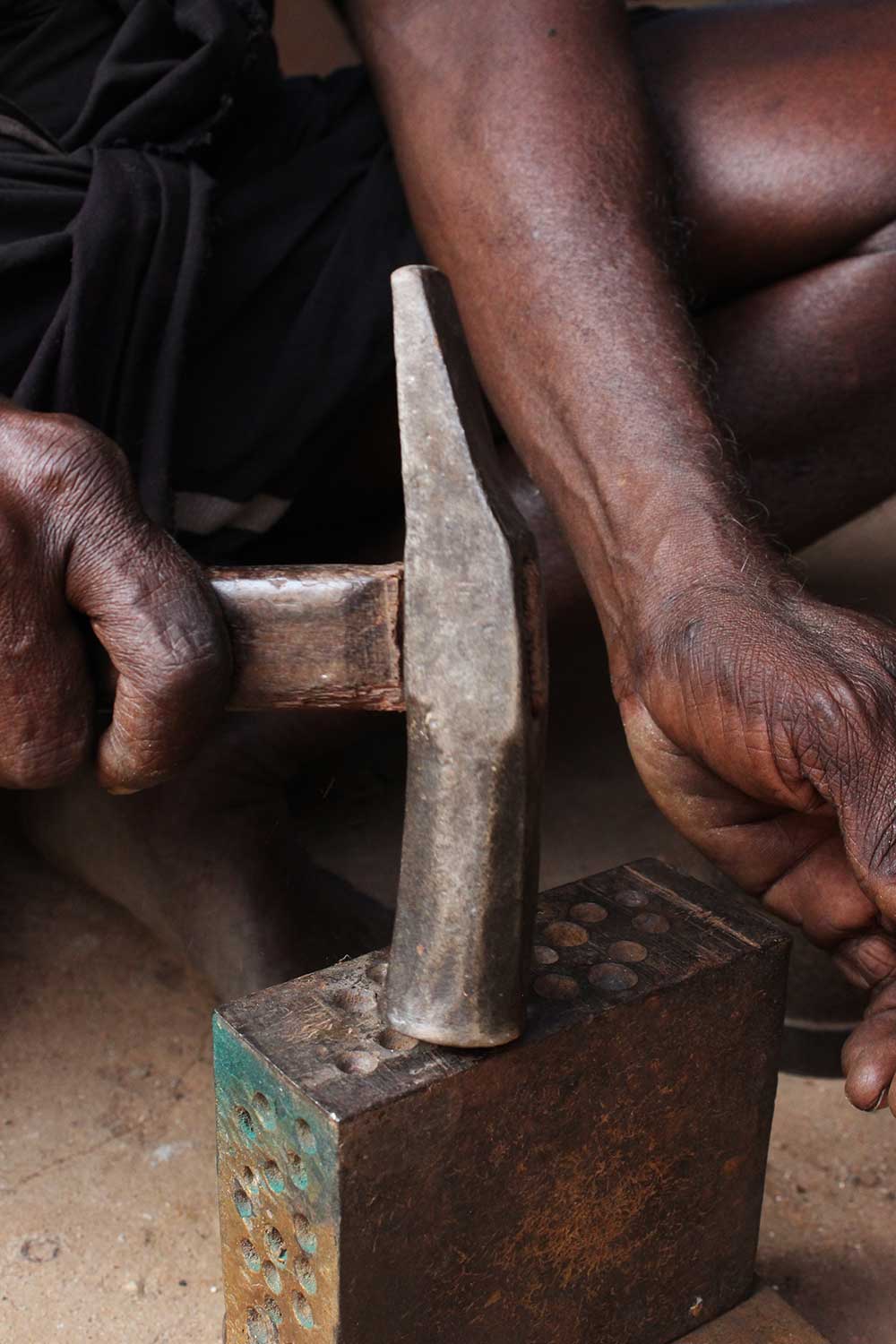
Hammering the piece of brass to make kudayani.
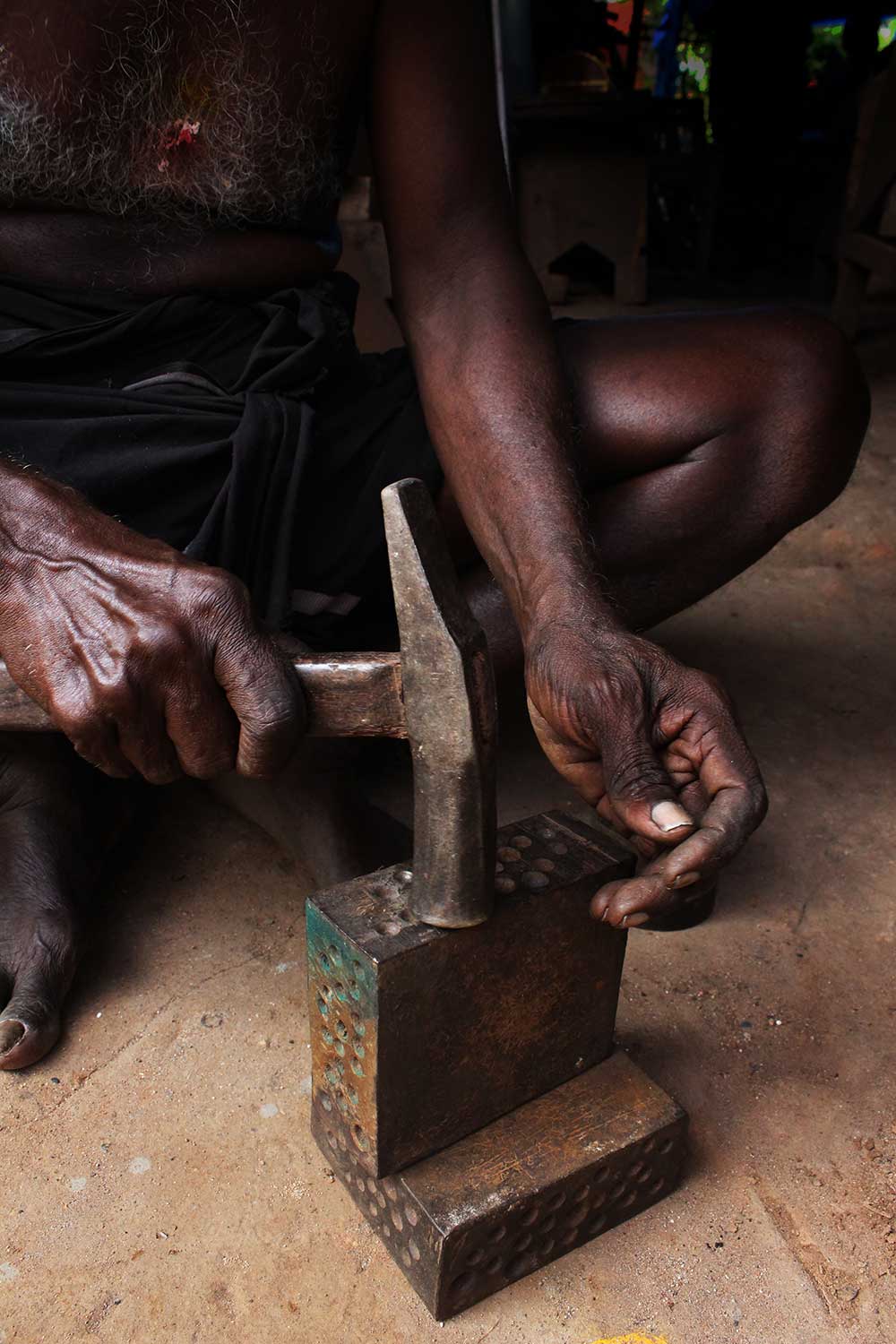
Hammering the piece of brass to make kudayani.
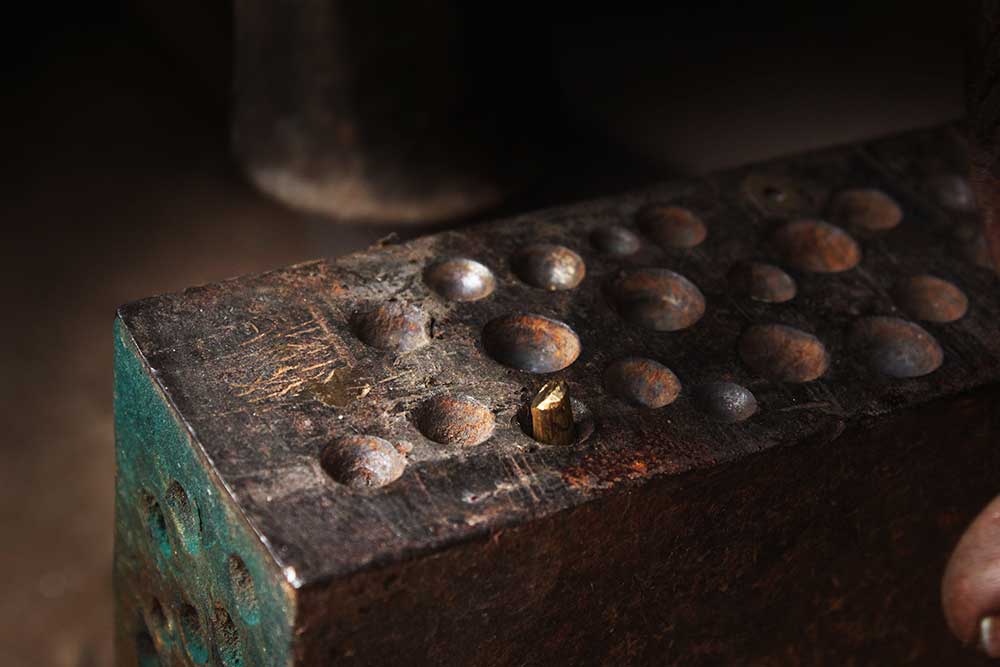
Brass piece kept inside the die for making kudayani.
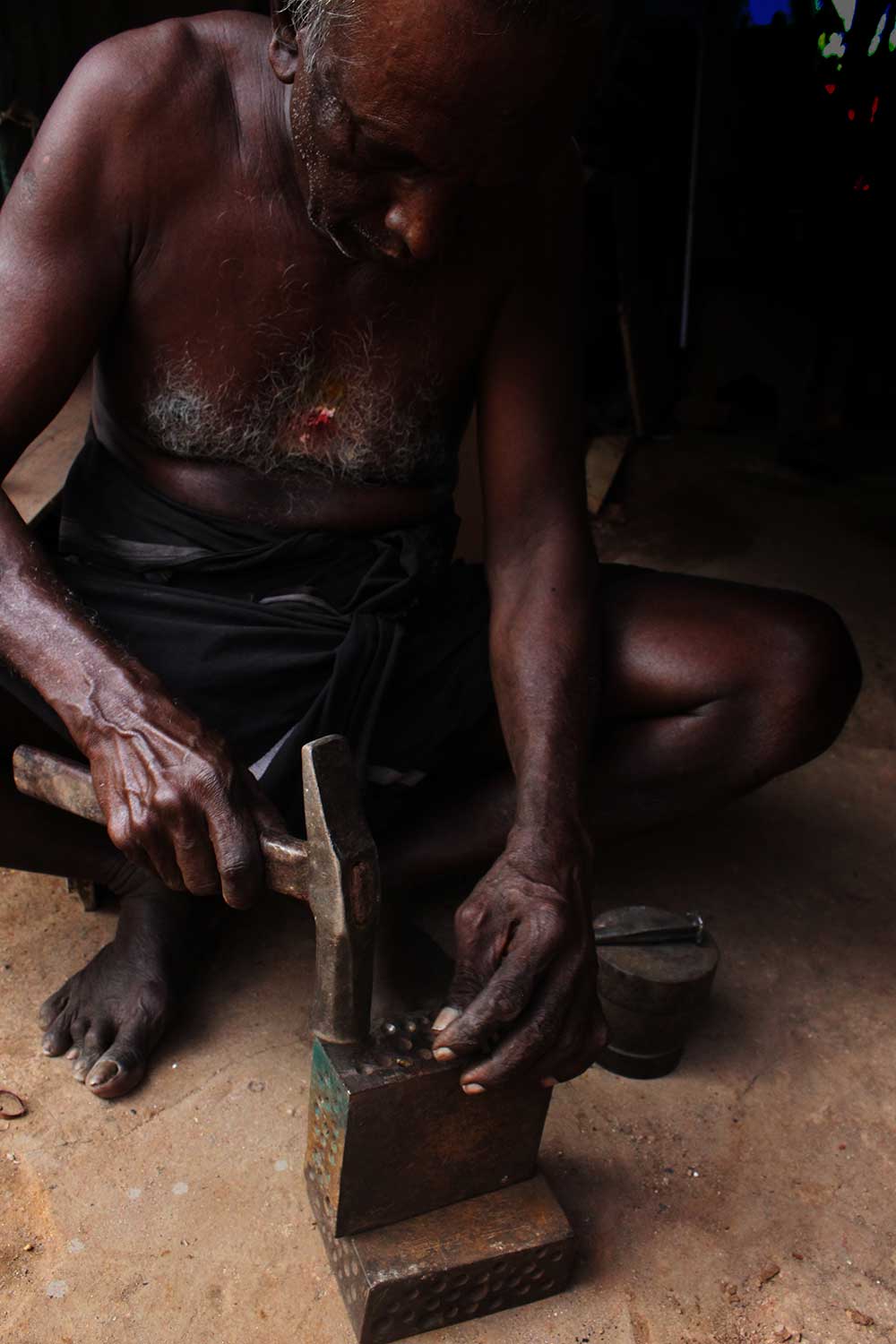
Artisan engaged in the making of Kudayani.
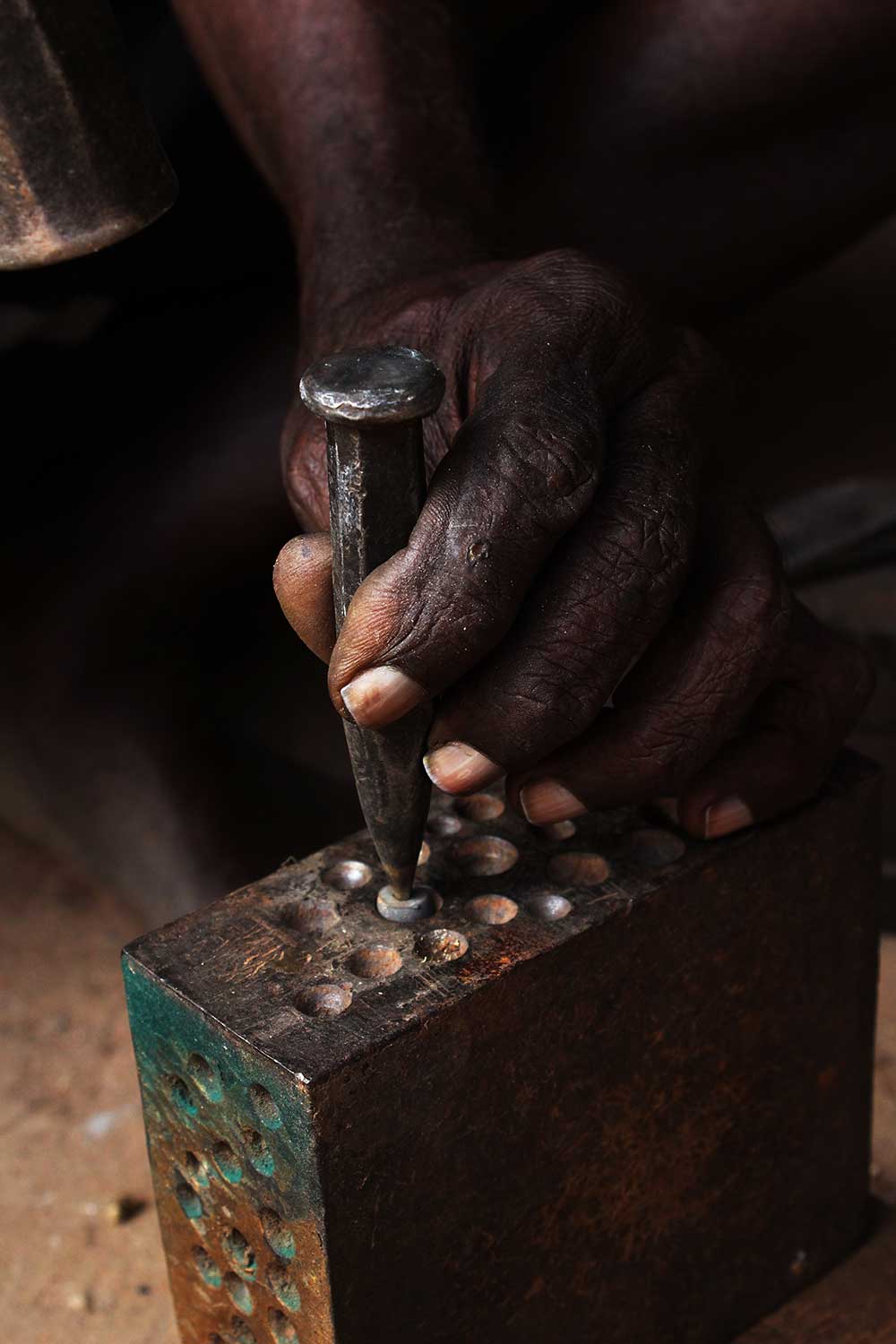
Artisan engaged in the making of Kudayani.
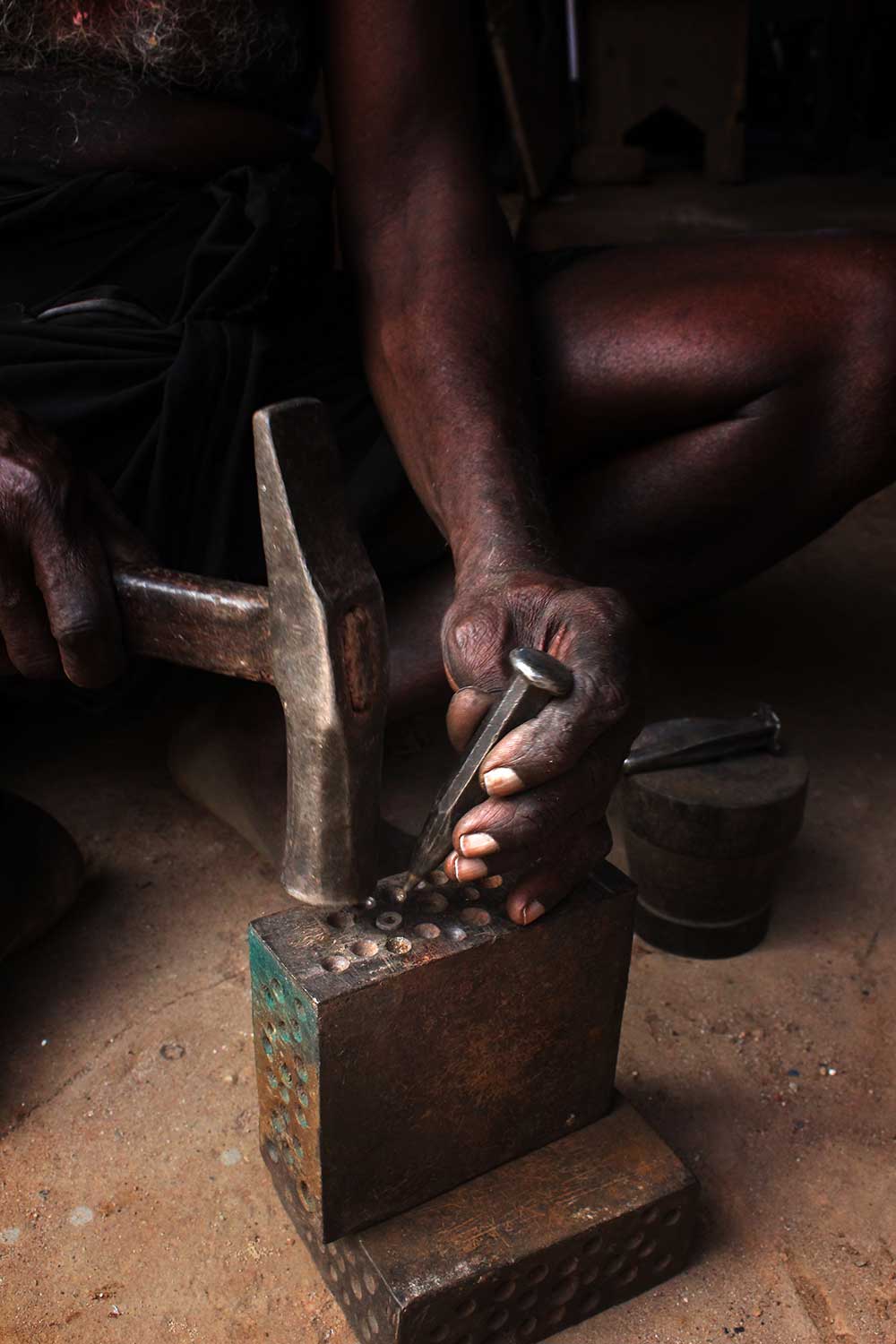
Artisan engaged in the making of Kudayani.
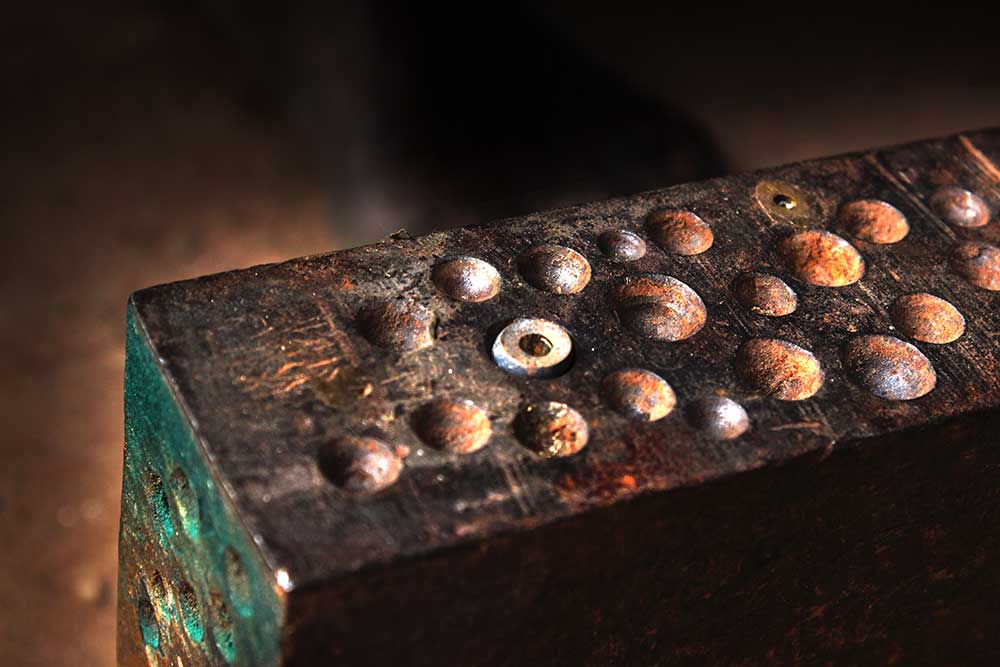
Close up view of semi-hemispherical from or Kudayani.
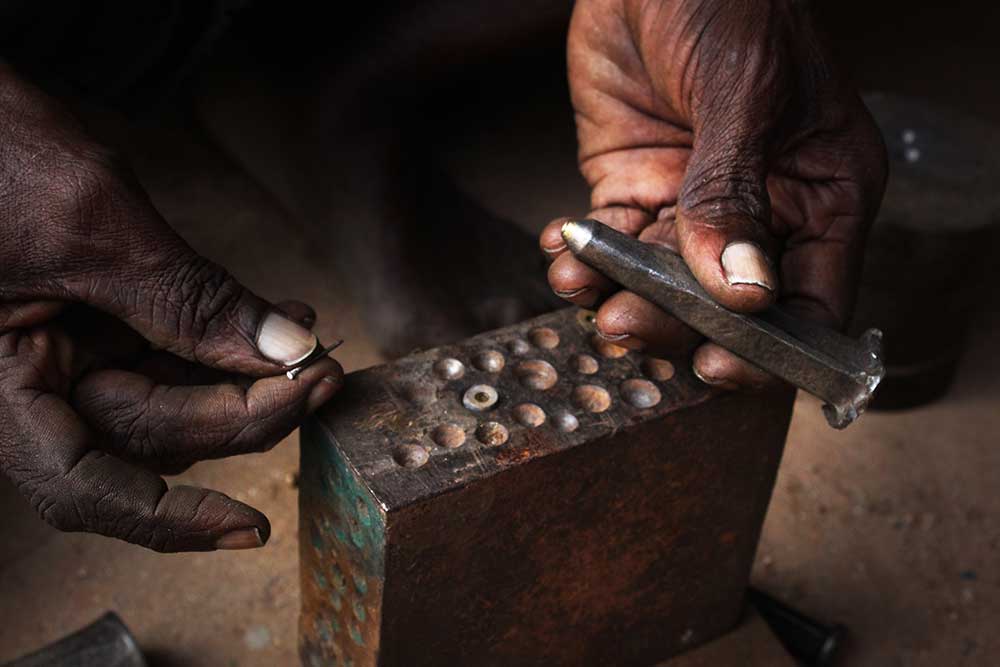
Process of inserting the nail into the semi-hemispherical from.
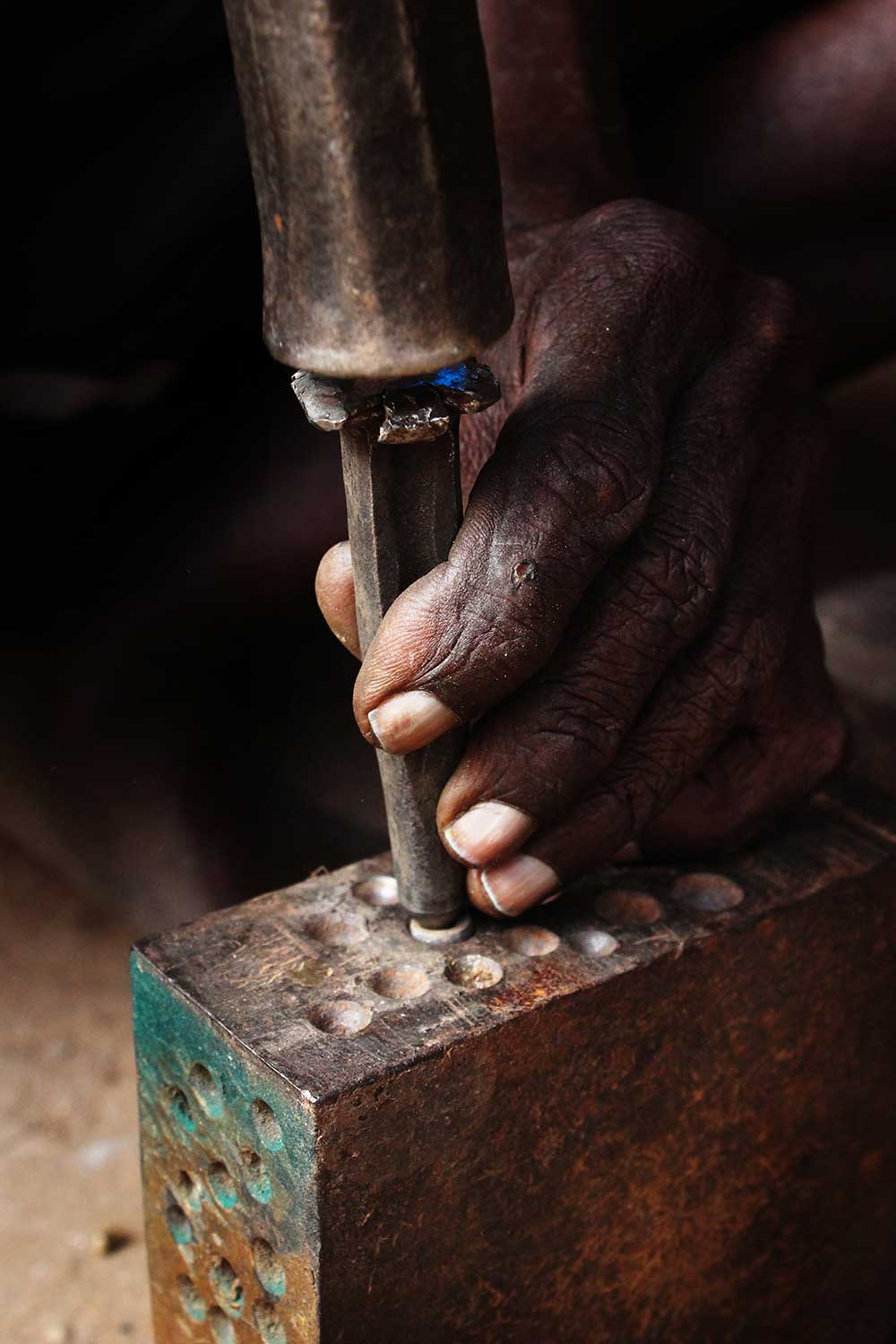
Process of inserting the nail into the semi-hemispherical from.
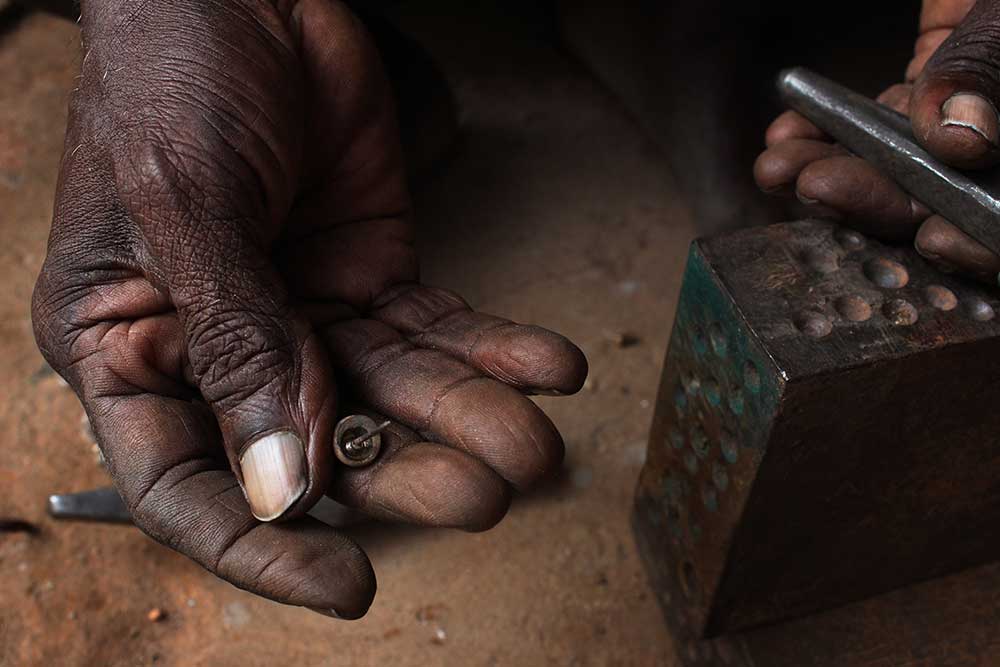
Finished from of Kudayani.
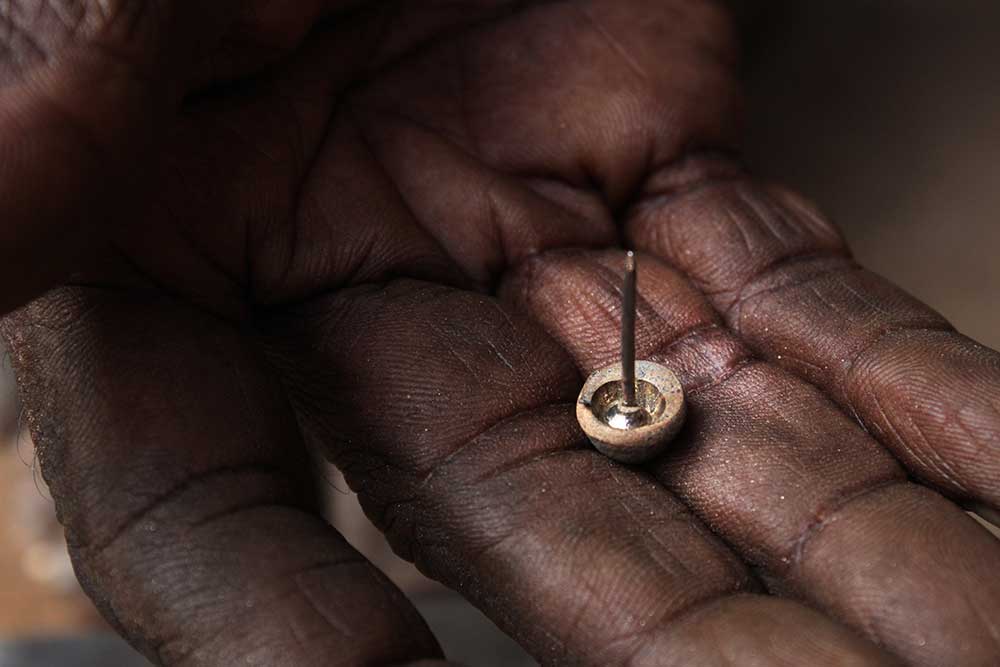
Finished form of Kudayani.
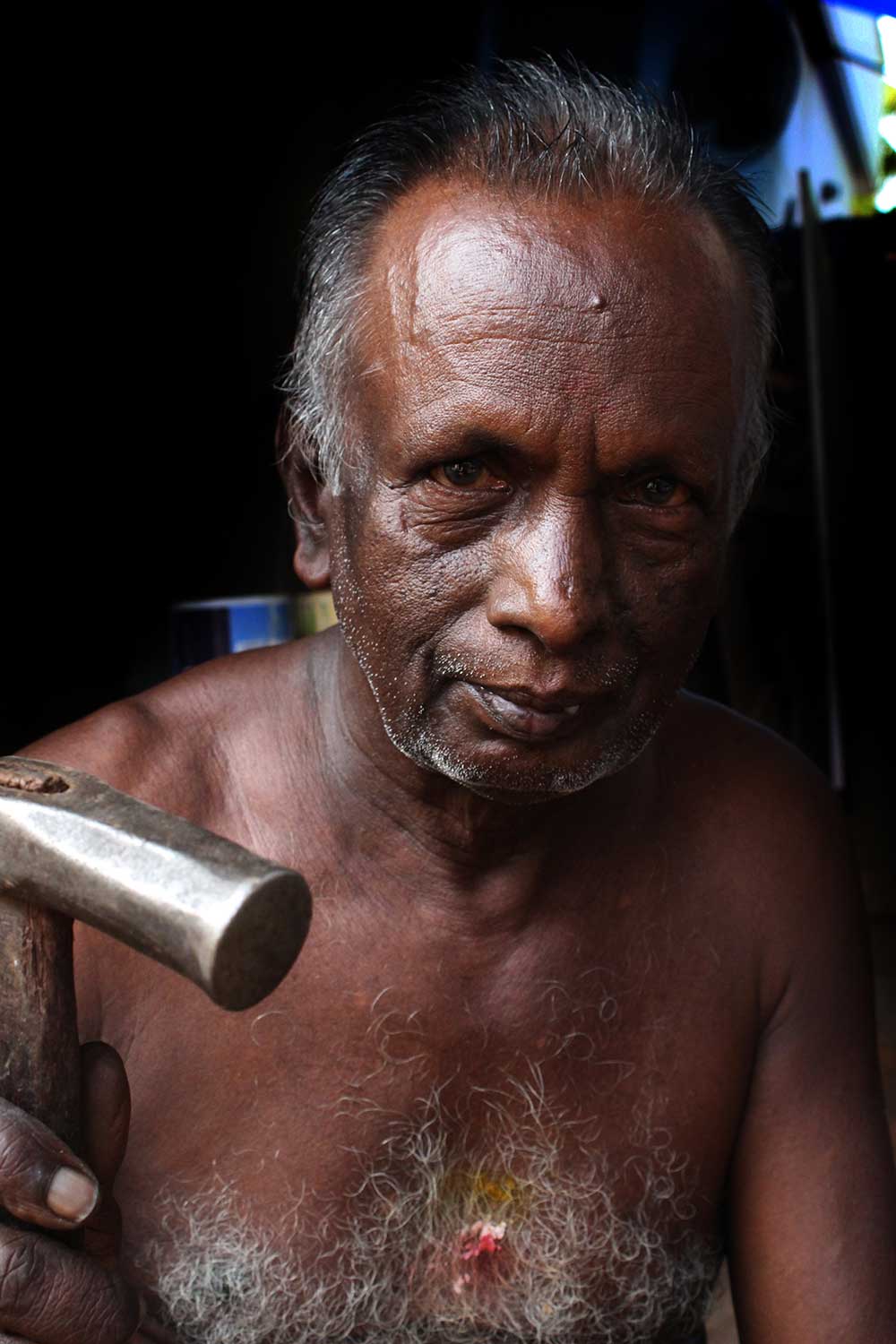
The artisan who makes metal artifacts.
The motifs and colour schemes used in Nattur petti is inspired from Kerala mural paintings. The enamel pigments are majorly used. The colors used are red, yellow, orange, black and green. The design inspirations are flora and fauna and a major use of elephant motifs. Elephants are having an inevitable role in the tradition and culture of Kerala since ancient days.
The painting of Nettur petti starts with making a fine surface. First a layer of gum is applied on the box thoroughly and good quality canvas is spread on it evenly. Once it is dry and stuck well on the wooden surface, a mixture of chalk powder and gum is applied and multiple layers are made like this. Later on it is kept for drying which may consume a day to get dry well. Once the surface is dried well enough, orange colour is painted on the surface. Once the paint is dry the surface of the box is smoothened with fine sandpaper to give a smooth surface finish which will help to create flawless design illustrations. After finishing the smoothening process, once again orange colour is painted on the box and kept it for drying. Illustrating designs on the surface takes time because it is absolutely done freehand. Only the designs of elephants are drown on the surface with the help of stencil. For easy sketching, the bristles of the brush are removed and a calligraphic nib is attached to crate fine and sharp lines.

Applying a layer of gum on the wooden box.

Layering canvas on the gummed wooden surface.

Evenly spreading the canvas to avoid air bubbles.

Cutting the excess amount of canvas after gumming.

Wooden box covered with canvas.

Applying the mixture of chalk powder and gum.

Box kept for drying after the application of chalk and gum mixture.

Initial application of first layer of colour.

Initial application of first layer of colour.

Initial application of first layer of colour.

Smoothening the surface with fine sandpaper.

Application of final layer of colour.

Box after final the final application of colour.

Application of final layer of colour.

Application of final layer of colour.

Boxes kept for drying after the final application of colour.

Midway of painting process.

Artisan engaged in the illustrating design.

Artisan engaged in the illustrating design.

Paintings are done freehand with an absolute ease and care.

Using a calligraphic nib for precise line drawing.

Using a calligraphic nib for precise line drawing.

Filing the color in the nib.

Artisan engaged in the illustrating design.

Artisan engaged in the illustrating design.

Artisan tracing the design of elephant on the surface.

Traced impression of elephants.

Using a calligraphic nib for precise line drawing.

Using a calligraphic nib for precise line drawing.

Line illustration of elephant design.

Elephant design after filling.

Midway of painting

Detailed hand painted wooden box.
Nettur petti is a signature wooden box made in Kerala originally from the northern part and now survived only in some parts of southern Kerala. Nettur petti is an amalgamation of many artistic skills and crafting techniques, a mathematical composition of wooden box making which symbolizes Kerala architecture and beautifully hand crafted brass fixers on it and above all beautifully hand painted flora and fauna.

Beautifully handcrafted signature Nettur Petti.

Beautifully adorned and handcrafted signature Nettur Petti.

Royal Extravaganza; a beautifully handcrafted Nettur Petti.

Pidi: a handcrafted handle.

Royal Extravaganza; a beautifully handcrafted Nettur Petti.

Cheppu; is a product variation of Nettur Petti.

Cheppu; is a product variation of Nettur Petti.

Eeti Cheppu, is a product variation of Nettur Petti created in Indian Rosewood(Eeti)

Eeti Cheppu, created in Indian Rosewood(Eeti)

Beautifully handcrafted Nettur Petti in Indian Rosewood.

Handcrafted Nettur Petti.

Handcrafted Nettur Petti.

Beautifully handcrafted and royally adorned Kaalpetti.

Beautifully handcrafted and royally adorned Kaalpetti.

Tholpetti, is a handcrafted wooden box used for keeping documents and money.

A variant style Cheppu.

A variant style Cheppu.
This documentation was done by Sunny Kolekar at IDC, IIT Bombay
You can get in touch with Sunny Kolekar at
Email: sunnykolekar[at]gmail.com
You could write to the following address regarding suggestions and clarifications:
Helpdesk Details:
Co-ordinator
Project e-kalpa
Industrial Design Centre
IIT Bombay
Powai
Mumbai 4000 076
India
Documentation and Content by: Sunny Kolekar, IDC, IIT Bombay
Website Design:Prof. Ravi Poovaiah
Website Layout: Sachin B. Sonawane
Web Content Editing: Sanmati Hosure
Website Programming: Roopa N. Sahoo, Mandar Joshi, Vaibhav Shah, Yogesh Masaye

